
europeanbusinessmagazine.com SPRING EDITION | 2020



































How can you adapt your business to the changing market? Business success is often achieved through adaptability. In retail it is no different. The changing balance between bricks and clicks requires a credit management approach that efficiently insures bad debts, monitors unpaid invoices and collects outstanding debts. Atradius can provide you with that credit management package enabling you to trade with confidence in the ever changing markets. Protect your business against bad debts, go to atradius.com Credit Insurance | Debt Collections | Business Information











ﻞﻬﺳأ ﻲﻠﻫ ا ﻰﻠﻋ ﺰﺋﺎﺤﻟا ﻲﻤﻴﻠﻗ ا ﻚﻨﺒﻟا ﺰﺋاﻮﺠﻟا ﻦﻣ ﺪﻳﺪﻌﻟا
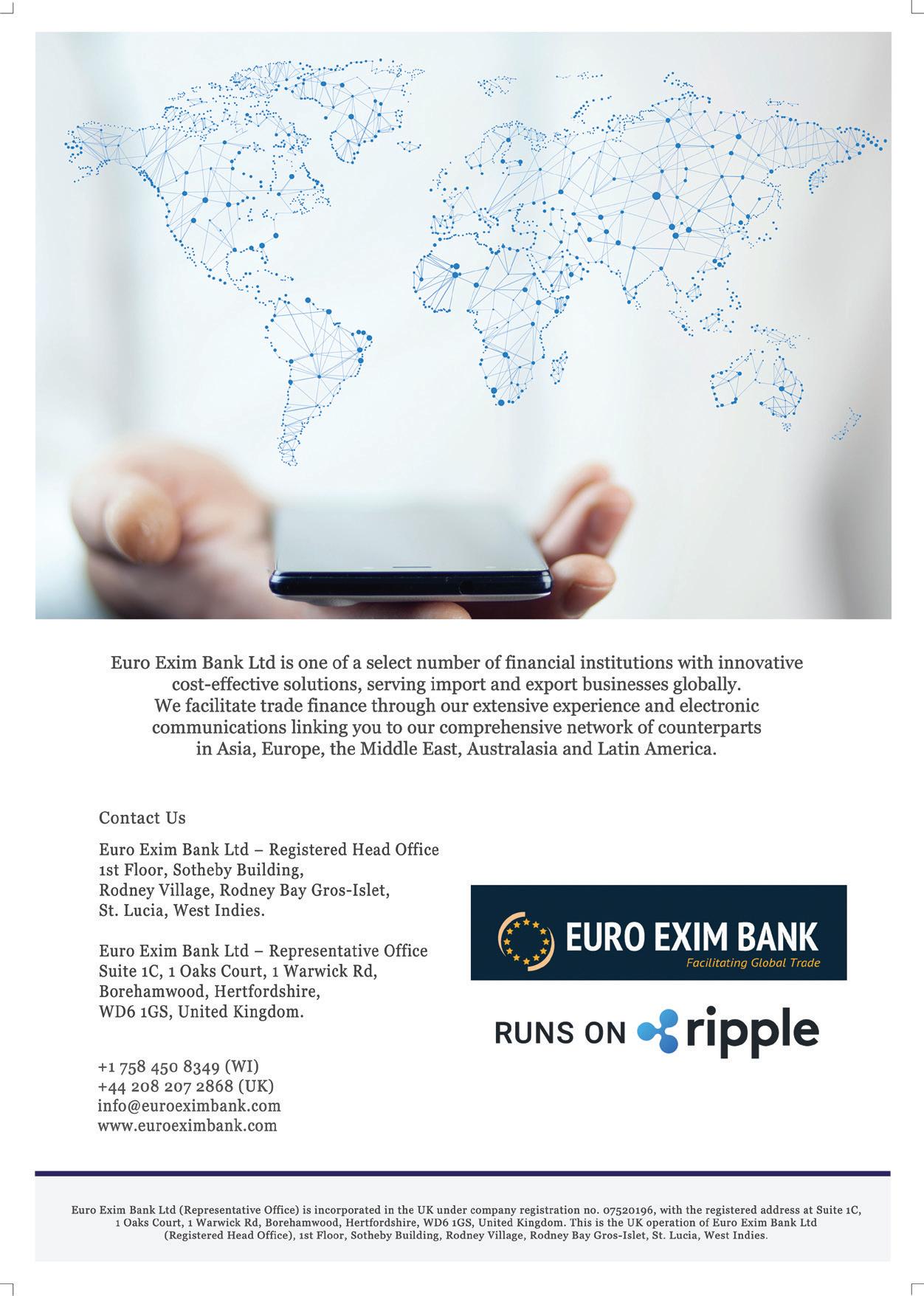









www.kaiserwetter.energy 2017 2018 Renewable Energy driven by data and loved by us. The leading Data Analytics as a Service Company



















LATAM’s Innovation Hub for the New Energy World EXPO CENTER NORTE, SÃO PAULO, BRAZIL JOIN LATAM‘S ENERGY FUTURE The core topics of tomorrow‘s energy world Unifying solar, energy storage and e-mobility Innovations and industry trends in the spotlight Join 28,000 visitors from more than 40 countries and 380 exhibitors at three parallel exhibitions The Leading Energy Exhibitions and Conferences at The smarter E South America Special Exhibition





























































w Or e fr A Na th N lW y de red l dor Tea poleonic sure om Ear Schmuckmuseum Pforzheim 19. 10. 2019 through 01. 03. 2020 l d a o l s m O W f N t T E r r a h o r e p o r a r extended until 14.06.2020
















11 CEO Shuffle
12 Latest News
14 Latest Technological Gadgets 2020
16 Atradius and Kemiex shake-up the raw material trading landscape in pharma, veterinary, food and feed
18 Nurturing a female-empowered environment in a non-female-led business
19 Why diversity is the only way to generate great ideas
20 How diversity can unlock innovation in healthcare
22 Qatar: Five Stars for Property
24 European Business catches up with Fadi Kreiker
26 Understanding the Experience of Distributed Global Team Members
29 The Public Health Emergency Is Radically Reshaping The Economy
30 Corporate debt is in serious trouble – here’s what it means if the market collapses
32 Economic effects of coronavirus lockdowns are staggering – but health recovery must be prioritized
34 How economies can survive a period of ”economic pause” to deal with coronavirus
36 North Africa: How Morocco Is Dealing With Coronavirus
38 How to avoid a coronavirus debt crisis? Issue a new type of government bonds linked to GDP
40 Closing your Gender Pay Gap is Business Critical in 2020
42 Female Leadership: Mind the Gap
44 Where Does it STOP WithElon Musk
46 Crisis communications during the Coronavirus chapter
48 Understanding the impacts of digital transformation
50 Nets and KPMG explore the power of AI in fraud prevention
51 What Future Do Airlines Have?
58 Coronavirus: Why We Should Be Sceptical About The Benevolence Of Billionaires
60 How China is revolutionising e-commerce with an injection of entertainment
62 The impact of interruption
64 The whole idea of global value chains will be reconsidered after coronavirus
66 EU is gridlocked over €1 trillion coronavirus fund – here’s a way forward
68 Hiring from Home
70 Can crypto help us through the coronavirus crisis?
72 National Defence in the Coronavirus Era: Germ Warfare and Digital Security
74 Solutions: In a Time of Crisis
76 HONEY CORN and SPIRIANT Make a Beeline for Sustainability
77 COVID’s Cash Handling Dilemma Sees PFS EML Step into the Spotlight
78 Berkshire Hathaway’s Clipped Wings Could Spell Danger For European Airlines
80 Why London’s Position As A Fintech Hub Is Secure
82 Oil Industry Hit by Coronavirus Crisis: What to Expect in the Future?
84 Denise Coates: How the World’s Best-Paid Female Boss Built an Empire Against All the Odds
86 Sky Wars: Who’s leading the PR game?
88 Cinematic Phenomenon
90 Halfway Between Europe and the US: Why Iceland is the Perfect Spot to Do Business
92 The Environmental Positives of a Global Lockdown
94 Where are countries finding the money to mitigate economic
Publisher Nick Staunton
Editor
Patricia Cullen
Deputy Editor
Anthony Gill
Associate Publisher
Brad Adams
Features Editor
Katie Winearls
Head of Production
Paul Rogers
Head of Design
Vladimir Mladenovski
Subscriptions Manager
Rebecca Hill
Head of Business Development
Paul Matthews
Advertising Sales
Brad Adams
Tara Duckworth
Advertising Sales
Tara Duckworth, Mike Ray, Andy Ellis, Mark Holburn
Contributing writers
Patricia Cullen, Richard Fitzpatrick, Bala Murali Krishna, Shilpa Meen, Argee Laraya, Aimee Ni Mhaolcraibhe, Gordana Ristic, Jonathan Hooker, Jose Ignacio Latorre
Head of Digital
Stephen Scott
Photographer
Ben Fisher
NST Publishing Ltd, 19 Leamington Spa (studio 1) Leamington Spa,Cv324tf, UK
The information contained has been contained from sources the proprietor believes to be wholly correct however no legal liability can be accepted for any errors. No part of this publication can be reproduced without consent of the publisher.
europeanbusinessmagazine.com 10
catastrophe?
Will challenger Banks catch the check on COVID-19 Disruptions?
Denmark’s supply chain finance programme targets business bounce-back with $55bn working capital injection
AI startup
of Contents europeanbusinessmagazine.com
96
98
100
Table
MAGAZINE EUROPEAN BUSINESS
CEO SHUFFLE
European Business Magazine gives the low down on some of the recent reshuffles amongst the highbrow in the business world
New Challenges and New CEO for Disney

Victoria’s Secret Goes Private as L Brands CEO Steps Down

After nearly 6 decades, founder and CEO of the L Brands, Les Wexner, stepped down from his executive role at the company. Following the announcement, L Brands, which is the main name behind such mall staples like Victoria’s Secret, Bath&Body Works, and Pink, declared that it will also separate into 2 companies: Bath&Body Works became a standalone public company, while Victoria’s Secret went private as a single brand. Andrew Meslow, the COO of Bath&Body Works, has been promoted to the new CEO of Bath&Body Works and will become a new CEO of the L Brands after the transaction is closed.
WarnerMedia has a New Boss
As the longtime Disney CEO Bob Iger suddenly announced that he was stepping down after 15 years spent in this position, affecting immediately, Bob Chapek has taken his role, becoming the 7th CEO in Disney’s nearly 100year history. Chapek is a veteran at the Walt Disney Company, as he has been working here for 27 years, but he noted that he obviously has “huge shoes to fill.“ Disney, on the other hand, is sure that “he’s going to commit with both feet and jump into the deep end.“ However, the new position also came with immediate challenges, as Disney had to close parks due to the coronavirus outbreak, and the company’s upcoming film releases could also be disrupted.
IBM Board of Directors
elected a new CEO
The tech giant announced that it’s Senior Vice President for Cloud and Cognitive Software, Arvind Krishna, is the next CEO of the company. He is taking the role over from a longtime boss Virginia Ginni Rometty, who will serve as Executive Chairman until the end of 2020, at which point she will retire. Rometty, who has held the CEO position at IBM since 2012, noted that Krishna “is a brilliant technologist who has played a significant role in developing our key technologies such as artificial intelligence, cloud, quantum computing, and blockchain. He is also a superb operational leader, able to win today while building the business of tomorrow.“

Match Group CEO Stepping Down
A former Amazon executive and Hulu co-founder, Jason Kilar is a new CEO of WarnerMedia. The company is now preparing to launch its new streaming service, HBO Max, an answer to Netflix’s NFLX and Disney+. Kilar is known for his streaming-oriented resume and a strong reputation in tech and media circles. John Stankey, company’s president and chief operating officer of WarnerMedia’s parent company AT&T noted that “adding Jason to the talented WarnerMedia family as we launch HBO Max in May gives us the right management team to strategically position our leading portfolio of brands, world-class talent and a rich library of intellectual property for future growth.“

Match Group, home to Tinder, Match, OkCupid, PoF, and a host of many other online dating apps, has a new CEO, as Mandy Ginsberg, who has been working at the company for 14 years, announced that she is stepping down due to the personal reasons. The new CEO, Shar Dubey, who has also been with the company for 14 years, has served as a Match Group’s president and was formerly Tinder’s chief operating officer. Ginsberg noted that Dubey “ is so well suited for this role and we won’t miss a beat during this transition. Not only is she a brilliant, analytical, and action-oriented executive, but she is a great leader because she wants every single person on the team to win.“

europeanbusinessmagazine.com11
Latest News
Facebook Invests $5,7 Billion in Indian Internet Giant Jio
On April 21, Facebook made its largest single investment by putting $5,7 billion into Jio Platforms in India, one of India’s biggest multinational companies and a big player in cellular phones and the internet services market in the country. This investment, once it’s approved by competition regulators, would give Facebook a 9,99 percent stake in Jio Platforms. The move is aimed at strengthening Facebook’s foothold in India, which is a vital market for the company and it’s messaging app WhatsApp. “India is a special country for us,“ Facebook said in a press release right after placing an investment, adding that “This investment underscores our commitment to India.“

Oil Prices Fall Below Zero for the First Time in History

Demand for oil has dropped tremendously, as due to the coronavirus’ lockdowns people had to stay inside. The price of West Texas Intermediate crude oil in the US went down to -40,32$ on April 20. The New York Times explained that the dramatic price drop was caused because more oil is being produced that can be stored, so buyers had to pay traders to take their May supply. As the world witnessed the historic drop, Bjarne Schieldrop, chief commodities analyst at SEB in Oslo noted that “What’s very apparent is someone lost their shirt. A drop to negative $40/barrel is pure financial action, rather than a reflection of the true market.“
FDA Approves First In-Home Test for Coronavirus

After weeks of back-and-forth attempts to create an at-home test for coronavirus, it finally happened. According to the Food and Drug Administration (FDA), the green light was given to LabCorp, which created a nasal swab kit for in-home testing. The approved test will initially be available to health care workers and first responders, who may have been exposed to the virus. After using the test, the patient will have to mail it in an insulated package back to the LabCorp. Dr. Sheldon Campbell, associate director of the Yale School of Medicine’s Clinical Microbiology Laboratory, noted that “a home-collection testing procedure will support telemedicine and help patients with transportation difficulties and in hard-to-reach places to access testing.“
Bill Gates Steps Down from Microsoft Board
One of the world’s richest men and the co-founder of Microsoft, Bill Gates, stepped down from the company’s board, as, according to him, he wants to focus on global health and development, education, and tackling climate change. He will still serve as a “technology advisor“ to the current CEO Satya Nadella. Announcing his decision, Gates said that the company would always be an important part of his life’s work and he would continue to be engaged with its leadership. He also added that he’s “looking forward to this next phase as an opportunity to maintain the friendships and partnerships that have meant the most to me, continue to contribute to two companies of which I am incredibly proud, and effectively prioritize my commitment to addressing some of the world’s toughest challenges.“

europeanbusinessmagazine.com 12
Europe’s leading global airline is in trouble due to the Covid-19 standstill
Airlines around the globe are feeling the impact of the coronavirus pandemic, and Lufthansa Group — Europe’s leading global airline — is one of them as well. Right now Lufthansa fights to avoid bankruptcy, as it was unveiled that the company recorded a $1,3 billion first-quarter loss. The German flag carrier’s CEO Carsten Spohr described the current situation as “extremely bitter, devastating, and painful.“ In his speech, Spohr noted that as of today, the Lufthansa Group has practically no earnings, and they still need to pay for staff, materials, rent, and fuel hedging. As a result, the company is currently losing around $18 thousand per minute. German weekly Der Spiegel reported that Lufthansa is negotiating a $10,8 billion bailout with Germany that would give the government 25,1 percent of the company and a seat on its supervisory board.

Tesla Model 3 is April’s best-selling new car in the UK

With the world at a standstill, because of the coronavirus outbreak, the UK car market just went through the most difficult month in more than 7 decades. In April 2020, the sales of new vehicles went down by more than 97 percent. According to the Society of Motor Manufacturers and Traders (SMMT), only 4321 cars were sold last month in Britain, compared with 161064 in April the year before. However, figures from the SMTT show that 658 Tesla Model 3s were sold last month, accounting for around 15 percent of all new car sales. This is the second time Tesla has appeared in the UK top 10.
Apple announces a date for its biggest event of the year
Apple has announced that it’s annual Worldwide Developers Conference (WWDC) 2020 will begin on June 22, and for the first time ever, it will be held virtually. The event, which usually takes place in California, will be free for all developers, who will be able to access it through Apple’s developer website and app. The company will give a glimpse of what news and innovations it will bring to iOS, iPadOS, macOS, tvOS, and watchOS. Phil Schiller, Apple’s senior vice president of Worldwide Marketing, noted that “WWDC20 will be our biggest yet, bringing together our global developer community of more than 23 million in an unprecedented way. We can’t wait to meet online in June with the global developer community and share all of the new tools we’ve been working on to help them create even more incredible apps and services.“

China starts major testing of its own digital currency
China’s central bank — People’s Bank of China (PBOC) — has introduced a trial of a state-run digital currency across several cities, including Shenzhen, Suzhou, and Chengdu, as well as areas that will host some of the events for the 2022 Beijing Winter Olympics. The 3 cities have a combined population of more than 38 million people. According to a report by the state-owned China Daily, a statement by PBOC said that the digital currency — known as the e-RMB — “will not be issued in large amounts” for public use in the short term and that the digital currency in circulation would “not lead to an inflation surge”. Unlike the most popular cryptocurrency Bitcoin, China’s version of digital yuan will be a centralized currency, and the central bank officials will be able to track all digital cash in circulation, making it nearly impossible to launder money or dodge taxes.

europeanbusinessmagazine.com13
Latest Technological Gadgets 2020 Samsung Sero TV

Nintendo Switch Lite Handheld Console

The it console for every gamer-on-the-go out there, Nintendo Switch Lite is a compact, lightweight, reasonably priced option of Nintendo’s popular gaming console. It is designed specifically for handheld gaming and can sync together up to 8 Nintendo Switch or Nintendo Switch Lite consoles, allowing to play games with friends and people from all over the world. The battery, once fully charged, can handle up to 5 hours of gaming. The console has a lightweight design and a more compact 5,5-inch display compared to the regular Switch and is available in several eye-catching colors.
Samsung has reached a new level with its products yet one more time, as the new Sero TV has been introduced to the public. The Sero, which means “vertical“ in Korean, does just that: transitions from the horizontal plane to the vertical plane — just like your phone — with one click. The company says that it is “designed for the mobile generation“ and hopes that the unique concept will attract millennials who like to watch and shoot videos on their phones and who might want to watch those videos on a bigger and more expressive screen. The 43-inch 4K Sero is already available in South Korea and is going global this year.
europeanbusinessmagazine.com 14
Anden Valet Charging Stand
Perhaps the most stylish gadget of 2020, the Anden Valet, a brand new Apple Watch wooden charging stand, easily fits any series of Apple Watch charger. Made to order in London and finished by hand using the finest natural oils, the Anden

Valet can be made from sustainably sourced solid walnut, maple or cherry wood. You can keep up to 4 Apple Watch straps on it, displaying your watch strap collection, and it is available in dimensions of L175xW15xD30mm.
Weber Connect Smart Grilling Hub

The Weber Connect Smart Grilling Hub will quickly become your secret ingredient to the perfectly grilled food, as it provides you with step-by-step assistance from the setup to when it’s time to eat. The company invented a device, which, once attached to your grill, syncs with your smartphone and allows you to monitor the temperature and food-readiness. Basically, the Grilling Hub includes a small device with ports for connecting wired thermometers and alerts you via the app when your meats or veggies reach the proper temperature that you desire. It is compatible with any barbecue, however, the Weber Connect App is only available with iOS and Android devices.
Bose Audio Sunglasses
Music without earbuds? Bose just showed us that the future really is here, as the new sunglasses not only provide UV protection but also can be used to play music, make and answer calls, and connect to Bluetooth. Described as the “Sunglasses with a soundtrack“, the Bose frames have built-in sensors and a pair of hidden speakers, which transfer music to your ears. They can be paired with your other devices and can access many different apps, such as Spotify, Skype, or Google Maps. You can choose from different frames and they are also available with prescription sunglass lenses.

europeanbusinessmagazine.com15
Atradius and Kemiex shake-up the raw material trading landscape in pharma, veterinary, food and feed
The annual trade volume for active pharmaceutical ingredients (APIs), vitamins and other food & feed additives is estimated at USD 300 billion, of which approximately 90% are traded based on long-term contracts. With a secular shift of production to China and India and increasingly volatile markets, the share of spot transactions is growing. The new solution brings low and transparent fees structures into the rather secretive spot market brokerage industry. Current trading processes are often time consuming, opaque and limited to personal networks. In this complex environment, trading network Kemiex and credit
insurer Atradius are the first to offer an online trading platform that helps to easily identify reliable and compliant counterparties and conduct trade in a safe way at the click of a button.
Trusted and secure
Nowadays, technology and digitalization are disrupting multiple and traditional trade ecosystems progressively and at a fast pace. In line with this trend, the partnership between Atradius and Kemiex is setting new and unparalleled standards for security and trust in B2B marketplaces for raw materials in the life sciences industries by means of a revolutionary online
platform. With this digital solution the future of exchanging raw materials between buyers and sellers on the global spot market are brought in today. The platform aims to decrease the number of touch points in the sourcing process, and yet, secure that all stakeholders comply with restrictions and regulations accordingly.
Combined expertise
The Swiss-based Kemiex is an independent online trading platform for commerce of commoditized additives, vitamins, amino acids, APIs and other substances for the human and animal health and nutrition industries.

europeanbusinessmagazine.com 16
An online trade platform designed and introduced by Kemiex and Atradius is revolutionizing the B2B global trade landscape for APIs, vitamins and other food and feed additives by integrating digitalization and credit insurance in a sophisticated network ecosystem
With this digital solution the future of exchanging raw materials between buyers and sellers on the global spot market is realized today. The platform aims to decrease the number of touch points in the raw material sourcing process, and at the same time, ensure that all stakeholders comply with restrictions and regulations accordingly. Kemiex’s success and market acceptance are noteworthy and outstanding. The platform has attracted hundreds of B2B companies in the respective sector by now, and its premium network is flourishing rapidly. Atradius, operating across 54 countries, is one of the world’s leading credit insurers and an avid supporter of innovative technologies to serve customers in the most efficient way. Apart from credit insurance, Atradius is also leading in other financial services such as bonding, collections and reinsurance.
Through the first of its kind strategic partnership with Atradius, transactions occurring on the platform can be insured right away. Atradius
will provide Kemiex’s customers credit risk insights and invoice credit insurance for single transactions between traders, sellers and buyers. In order to build a holistic network and assure a high level of trustworthiness and product quality among stakeholders, Kemiex has outlined strict on boarding rules and a quality management system overseen by a qualified person. In addition, the platform has a systematic monitoring structure that renews members’ trade excellence scoring after every finalised transaction. This provides a meticulous account of the entire trade stream by continuously assessing the behaviour and reliability of the transaction counterparts throughout the transaction.
Through the unprecedented strategic partnership with Atradius, transactions occurring in the platform can be insured at a mouse click. Atradius provides Kemiex’s customers credit risk insights and invoice credit insurance for single transactions among traders, sellers and buyers

Added value
Being a Kemiex stakeholder minimizes transaction lead times and allows businesses to offer more competitive prices while staying in full control of trading activities from A to Z. Simultaneously, Atradius is using its years of risk mitigation expertise to provide, through Kemiex’s platform, single invoice insurance and financial insights, supporting Kemiex’s customers in making smarter decisions across their trade deals.
The platform has already benefited multiple buyers in the acquisition of raw materials, and they have been able to increase product availability and reduce purchase prices in parallel. At the same time, sellers kept their margins stable. Both effects positively influenced businesses short- and long-term growth. In a world where trade increasingly takes place online, Kemiex and Atradius offer the comfort of doing this in a trusted environment that is ready for the future. Why wait any longer to join?
europeanbusinessmagazine.com17
Despite the exponential growth of the UK tech space (attracting more than $9.7bn in funding in 2019), the Guardian reported that “the number of women in the tech sector has barely moved over the past 10 years”. Combine this with the fact that only 5% of leadership positions in the technology sector are held by women despite the fact that we make up 49% of the general UK workforce, these figures are disappointing. Even more so given the increasing awareness of the gender gap in tech being a problem.

Before launching Paybase, I was lucky to work in female-empowered environments (which were unusual for traditionally male-dominated industries). For me, it was a significant advantage, especially in terms of dispelling myths and misconceptions about women working in leadership positions. But I wonder whether it’s possible to nurture a female-empowered environment in a non-female-led business? I think that it is, absolutely, but some fundamental development must be made at the grassroots.
STEM subject representation
In 2018, the portion of female graduates in STEM subjects (Science, Technology, Engineering and Maths) was just 9% - and this was up by 1% on the 2017 figure. Whilst this demonstrates a year-on-year improvement, the statistics are still a startling comparison with the more than 90% male STEM graduates. A recent UCAS
Anna Tsyupko, CEO and co-founder, Paybase
gender balancing efforts. Women in Tech recently surveyed over 1000 women and found that 82% of them believed that there were more males than females in tech, suggesting that awareness of the issue is also significant.
To tackle this, having pioneering female tech leaders speak in schools could both give aspiring students a clear goal and role model to work towards but it could also be incredibly useful for the speaking companies themselves. By planting the equality-championing seed early, tech firms could bolster their own brand awareness and attract more female graduates to their workforce when they come to start their careers.
study furthermore found that specifically in computer science, engineering and technology, the fields “show the largest gender imbalances from current students, to graduates and the workforce figures”. The figures decrease as they candidates progress through each stage. The implications of this are that something in the STEM environment deters female students, graduates and employees from persevering with their careers in the space. One of the most positive factors in any workforce is being able to thrive from a diversity of experience, and it directly correlates with success at work, a sense of belonging and emotional safety in the work environment. But to implement this, gender balance is key. The more female applicants that can be attracted to and, more importantly, nurtured on STEM higher education programmes, the more chance there will be of achieving this balance.
More tech companies presenting in schools
In order to attract female applicants onto STEM higher education courses, action must be taken when they are studying at school. STEM projects (like those run by stem.org) are important but representation i.e. being able to see real life examples of females thriving in STEM-based careers, is even more valuable.
Representation is a crucial tool and one that should be at the core of
Female training grad schemes
Taking the imbalance of STEM students and graduates into account, it seems worthwhile that it should be tackled with a wide-reaching approach. Female graduate schemes must, therefore, not only be targeted at students who are graduating from STEM subjects but also those who are graduating from subjects outside of it.
Training female graduates from nontech backgrounds to take on technical roles would help to not only diversify the workforce in terms of gender but furthermore in terms of culture i.e. bringing in perspectives from those in subjects outside STEM.
We, the women in technical positions, must capitalise on our positions
By default, female leaders in the FinTech space stand out from the norm and I believe that this position can be used to establish a vantage point and to dictate the standards of diversity. Women in technical positions must continue to put themselves out there as much as possible to ensure that they are represented to the fullest extent. Presenting in schools, doing TED talks and generally raising awareness are just a few examples of this, and they are all of paramount importance to changing the tech industry’s traditional tides.
europeanbusinessmagazine.com 18
Nurturing a femaleempowered environment in a nonfemale-led business
WHY DIVERSITY IS THE ONLY WAY TO GENERATE GREAT IDEAS
Natalia Escribano, chief commercial officer, VIOOH

Where do your ideas come from? From books, conversations, something you’ve seen online, overhead, watched? Ideas come from anywhere, at any time, but they have one thing in common – they do not come out of thin air. They’re sparked by inspiration, by something external to the person that comes up with it, that gets them to think ‘what if…?’.
All organisations love ideas; most want to be seen as innovative, to be able to generate new services and products that get people excited, get customers talking and, more importantly, buying. Why wouldn’t they? Ultimately, the more ideas a company generates, the more likely it is to come up with something that punches through, that turns into tangible results. In other words, money. The challenge they face is that as an organisation, there are rules and structures and processes to follow. How do they generate ideas within those confines? Entrepreneurs will be familiar with the concept of balancing working in the business with working on the business. The former is the dayto-day, the tasks that keep the wheels turning. The latter is thinking about the direction the wheels should be facing, strategy, growth. Quite often, it’s hard to take a step back and do that, particularly when it’s not immediately translating into sales.
New perspectives as a source for new ideas
That’s where having a diverse workforce comes into play. If you only employ the same type of person, with the same education, background, outlook on life, then you are going to get the same ideas. By having a more diverse outlook, new external sources come into play – new books, new conversations, new perspectives. New ideas.
It’s good business to be diverse - according to a Boston Consulting Group study, “companies that reported above-average diversity on their management teams also reported innovation revenue that was 19 percentage points higher than that of companies with below-average leadership diversity—45% of total revenue versus just 26%.”
In short, more diverse leadership teams equals more ideas that make money. It doesn’t stop with ideas, either; another study said “companies in the top quartile for gender diversity are 15 percent more likely to have financial returns above their respective national industry medians.” For any sector, that’s enough to make people sit up and take note; for advertising, in which the quality of ideas is the service being sold, it’s vital. Traditionally male-dominated, we’re seeing slow and steady improvement in diversity at all levels of the industry –in the UK, women make up 52.6% of all employees in advertising agencies and a third of all C-level executives.
Accelerating change, from the top down
Yet more needs to be done. Change always needs to come from the top, and advertising is no different. That means empowering leaders and those with hiring responsibilities to recruit with diversity and gender equality actively in mind, and really commit to building inclusive cultures.
Broadening the talent pool available, so that a greater mix of candidates are available, is critical, as is investing in new ways to recruit – the days of being able to hide behind saying ‘we can only hire people that apply’ doesn’t cut it if you don’t make the effort to look beyond your traditional channels, recruiters and networks.
There’s also the need to fight stereotypes, confront and push back against bias. Everyone has their own biases, and in turn unconscious bias affects everyone. It’s important, therefore, that people are self-aware, that they recognise when they have allowed their own prejudices to influence decision-making, and take active steps to combat it. That also means helping their teams to have awareness too, and creating an environment where biases can be challenged appropriately. Finally, there’s a responsibility on everyone controlling budgets to think about who they work with. If clients only work with partners that foster an active approach to gender equality, then they are sending a clear message that firstly, diversity is seen as a point of attraction and secondly, that they understand that with diversity comes a greater range of backgrounds, ideas and inspiration.
Investing in ideas by cherishing and nurturing diversity
Advertising is an ideas business –if we can’t come up with new ways to engage our audiences, then we’re redundant. Therefore, ensuring that our idea generation pipeline is working properly should be seen first and foremost as an investment. Diversity is intrinsic to that – as we’ve seen, without diversity, ideas and innovation suffer. It is vital that it is cherished and nurtured.
europeanbusinessmagazine.com19
How diversity can unlock innovation in healthcare
experience for patients and healthcare professionals, but also has the potential to provide great financial and operational savings to healthcare providers, whether public (such as the NHS) or private. It is the only way we are going to be able to deliver high quality care and prevent the spread of disease in a hyperconnected, globalised and diverse society in a responsible, inclusive and long-term manner.
Yet challenges remain. From a technical perspective, these range from how providers incorporate mission critical legacy systems into digitalised operations, to the fragmentation and non-standardisation of data across hospitals, regions and countries. Then there’s the paucity of investment resources and established quality assurance frameworks available to validate new technologies.
Just as important are the cultural and human considerations. This new era of healthcare has to be inclusive; that means being able to deliver care that meets the needs of patients in the ways that best suit them – rather than in a way that best suits providers. New perspectives, views and considerations need to be incorporated to overcome established bias and legacy thinking – the only way to do that is through greater diversity, at all levels of healthcare.
Karina Malhotra, founder and director, Acumentice Health – a UK based Healthcare Management Consulting firm

We’re at an important moment in healthcare. Across Europe, the challenges of meeting increasing and ever more complex and individualised demands of patients are straining both countries’ economies and their healthcare systems.
To deal with this, more and more governments are looking to digitally transform their health services. The UK’s National Health Service published its long-term plan in January 2019, outlining how it would become fit for the future, which included establishing NHSX to drive digitisation across the entire service. Elsewhere, the EU is aligning its mission to change the delivery of health and care with that of the Digital Single Market.
While each initiative is different, the fundamentals remain the same –reducing health inequalities, improving prevention and providing better quality outcomes for patients, both in periods of relative normality and while dealing with pandemics such as Covid-19. In addition, the setting and point of delivery of care itself needs to be right for patients’ individual needs. Underpinning this valuable effort is making sure that it is financially sustainable and delivered by a robust, correctly skilled and appropriate workforce.
Overcoming the challenges to unlock benefits
It’s undeniable that digital transformation and innovation is critical to all health services. Being able to harness data does not just provide better outcomes, engagement and
The gap between workforce and leadership diversity
Traditionally, this has been a challenge; as an article in The Lancet from 2019 notes , from a gender consideration, while “women’s representation in science and medicine has slowly increased over the past few decades… this rise in numbers of women, or gender diversity, has not been matched by a rise in gender inclusion.”
The numbers back up the argument – the NHS workforce is 75% women , yet only 37% of Foundation Trust directors are female. It’s a similar picture across the European Union, where 78% of workers in the healthcare sector are women. While the US has a very different delivery system, the gap between
europeanbusinessmagazine.com 20
representation at an employee level and an executive level is even more stark – three percent of healthcare CEOs and Chief Medical Officers are female, yet women comprise 80% of the entire workforce.
From an ethnicity perspective, the story is even worse - appointments of black, Asian and minority ethnic candidates (BAME) to non-executive positions at NHS trusts and hospitals have fallen over eight years, with the latest UK government data stating that 4 out of 5 (79.2%) NHS staff were white. In the US, 70% of physicians and surgeons were white. Does the diversity of the people who make investment decisions behind the scenes, or those in senior management positions at providers, matter? Of course it does. In an article for the World Economic Forum , entrepreneur and economist Vijay Eswaran writes that “The coming together of people of different

ethnicities with different experiences in cities and societies is a key driver of innovation.” He is considering the issue of diversity from a business perspective, yet the lessons apply just as powerfully in a public service setting. Particularly one, like healthcare, that desperately needs to engage innovation to unlock the benefits of digital transformation to suit its increasingly diverse users.
Evolving mindsets to deal with legacy structures
Interestingly, the tackling of both the diversity issue, and overcoming the technical obstacles, are about dealing with legacy structures. In the case of the latter, solutions such as data validation, artificial intelligence (once data is cleaned), automation and the deployment of hybrid cloud (allowing the use of legacy systems alongside newer applications) can
help speed up digital transformation. With the former, it’s about looking at the cultural structures in place that stop more diverse individuals progressing. What suited traditional leadership applicants may no longer work. In the same way that, what were once considered appropriate management skills are now outdated or not as necessary, and need to be replaced by different attributes and strengths that non traditional candidates may offer.
It is a mindset change, but then all transformation is. Ultimately, if healthcare providers are serious about being innovative in order to deliver better care and keep people healthier for longer, then they need to ensure that they are not only transforming their systems, but their workforces as well. What once worked in healthcare delivery clearly need to be reshaped; the same goes for who delivers it.
europeanbusinessmagazine.com21
QATAR: Five Stars for Property
As the coronavirus crisis impacts national and global economies, causing stock markets to plummet, oil prices to crash and unemployment to reach new heights, Qatar’s economy remains strong and continues to develop. Property prices are expected to grow and a wide range of exciting infrastructure projects are in the pipeline. Furthermore, in this unprecedented climate, the quality, safety and comfort of residential and commercial properties is more important than ever.
The Qatar National Vision 2030 (QNV 2030) was launched. Its main goal was to drive the country forward by aligning economic growth with improvement in both human and natural resources, to help differentiate the economy and to decrease the country’s reliance on oil and gas. Fast forward 12 years, a global recession and an international health crisis, and this central intention remain unchanged.
The QNV 2030 seeks to ambitiously transform the economy by working towards an advanced educational and health system, increasing Qatari numbers in the workforce, pursuing an effective social protection system and playing an important part in the international community. It also calls for sound economic management, responsible exploitation of oil and gas resources, economic diversification and environmental protection. While Qatar aspires to invest in its human capital, cultivating the abilities of its citizens in order to build and maintain a thriving society, where the inhabitants live and work will take central stage.
As Qatar’s population continues to grow, demand for property will rise, but the coronavirus pandemic has inevitably triggered a slump in demand for all properties, stalling residential sales, inhibiting exchanges and promoting remote working. However,

these challenges and obstacles have merely encouraged a renewed focus on the goals of the QNV 2030, which centres on a robust commitment to elevating the infrastructure and putting the country firmly on the map as a primary destination for tourists and investors. To help realize these objectives Prime Lands Real Estate and Development, an award winning real estate Development Company, based in Doha, designs and build architecture that will benefit both the communities and corporates that it serves.
Unlike traditional builders, Prime Lands Real Estate does not deliver meaningless, concrete structures. Rather, their ultimate mission has always been to adapt its high-end residential, commercial and industrial projects to the particular needs of its target market. Fundamentally, since its inception, the mission of Prime Lands Real Estate has aligned
europeanbusinessmagazine.com 22
with that of the QNV 2030, including building environmental awareness campaigns and promoting sustainable urban growth.
The Qatari construction market is expected to register a CAGR of 9.6% over the 2019-2024 periods, after a decade-long boom associated with the implementation of large infrastructure projects in preparation for the FIFA 2022 World Cup. In fact, the country is expected to be among the fastest-growing global construction markets, showcasing robust growth forecasts. Under QNV 2030, nearly £13.5 bn in infrastructure and real estate investments are planned over the next four years to help offset falling FIFA-investment spending. However, unlike Japan which saw the summer Olympics cancelled, Qatar, which is hosting the 2022 World Cup, may still have the chance to conduct the games as normal, depending on how the pandemic evolves.
Under the QNV 2030, which hopes to support unprecedented levels of community, commerce and development through the construction of modern and practical architecture, the country is set to award an estimated £70bn worth of planned projects in the coming years. Traditionally, because of the rapidly growing population base and chronic under-supply, developers have historically preferred quantity over quality. However, there has been a shift within the construction sector, with a demand for excellence that rivals international standards.
Step forward Prime Lands Real Estate, which has experienced unrivalled success and is on top of its game, winning five important awards at the Property Awards 2020. Firstly, winning the Best Real Estate Development Award, which focused on the modern and unique office building development in the fantastic Prime Square. This location centres on high end corporate tenancy
and offers retailers a strategic location. Secondly, the Best Architectural Residential Design Award was granted in response to Prime Lands Real Estates work on the AL Rayyan Village Complex. This comprises of 383 villas in a range of four different types promising the perfect work-life balance for Qatar’s business community and their families in the heart of Doha. Sustainability was central to the design of the village, including eco-friendly features such as durability, low emissions and a large underground water tank that regulates the water temperature. Prime Land Real Estate received a further three ISO Certificates in the Property Awards 2020.
All these coveted awards and environmentally friendly design features highlight how Prime Lands Real Estate are ahead of the mark, and how high end architecture can help Qatar realize its QNV 2030 corporate and community goals.

europeanbusinessmagazine.com23
European Business catches up with Fadi Kreiker
the instrumental CEO heading up Prime Lands Group which is based in Doha, Qatar. His group is a multi-award winning international real estate development group which is also instrumental in helping achieve Qatar’s National Vision 2030 through their own unique designs, construction and architectural prowess.

You’ve been CEO of Prime Lands Group for two years now. This year you were awarded the Best CEO in the Middle East within the Real Estate Sector award, which is truly impressive. What were the main challenges that you, as CEO, had to overcome during this time?
I’ve been working in this field more than 20 Year, Started my experience in Lebanon, Saudi Arabia, Oman and Dubai before I joined Prime Lands Group in Qatar. The main challenges I’ve faced as CEO are managing the departure of the outgoing CEO, a lack of feedback, leading former peers & being less accessible to former reports, and establishing the right pace of change.
What is the best lesson that you’ve learned along the way?
Innovation is harder than replicating what you already know. The lessons I’ve learned as a CEO reflect that unavoidable truth: the harder choice is usually the belter choice.
Recently, at the Property Awards 2020, Prime Lands Group won an impressive Five signify cant awards. What does it mean for the company to be recognized by the Arab Real Estate Awards?
Winning accolades such as the International Property Awards provides you with the evidence you need to prove you are better than the rest, as well as giving you use of an important platform to promote yourself, and your award, with visual reminders and online endorsements. It also showcases how hardworking the firm is in ensuring that our clients find and realize their dream homes and properties. It recognizes our achievements.
The Prime Lands Group has certainly had its fair share of interesting, challenging projects. Which project was the most interesting one for you personally?
Al Rayyan Village.

The real estate development and investment sphere is very dynamic and constantly changing. Yet, Prime Lands Group always manages to stay on top of the game and is a market leader. What is the secret behind this? Are there any particular skills that you need above others when working at Prime Lands Group?
Prime Lands’ secret is simply honesty and flexibility. And of course we must have skills such as the ability to relate to and trust in others, knowing how and when to show empathy, active listening skills, always keeping an open mind, having a great sense of humor, knowing your audience, proactive problem solving, good manners, and being supportive and motivating others.
In 2018, Prime Lands Group established a global division, and just a year later it witnessed a growth rate of over 200%. Did you expect such a big success in such a short period? What was the main strategy for going international?
Prime Lands Group Global offer a standardized product worldwide, and have the goal of maximizing efficiencies in order to reduce costs as much as possible. We are highly centralized and our subsidiaries are often very dependent on the HQ. Their main role is to implement the parent company’s decisions and strategies.
europeanbusinessmagazine.com 24
You once mentioned that, “Our adherence to the real values of life has been the driving force for Prime Lands recognition.” Could you explain more about the most important values that are implemented in the company, and how this approach helps to achieve and maintain collaborations with clients?
In 2018, Prime Lands adopted a company culture of “Prime Lands is a great place to work”. The model is about embracing collaborative and non-hierarchical working. All managers focus on coaching rather than commanding. According to the evidence we looked at, this approach best harnesses the creativity and innovative potential of our employees as well as ensuring greater employee and client satisfaction. Let’s start with management culture. We changed our operations and management structure to give staff more power and autonomy. Our managers should see themselves as coaches –motivating staff to want to improve, offering them support and rewarding them on merit. Our most important goal is what we call “peripheral decisional autonomy” – which means that staff are actively encouraged to make decisions based on their own informed judgment. We also want employees to reach their own personal goals, not just company goals. This approach is backed up by ensuring staff have access to high-level training at all time. Respect and responsibility are two key words for us when thinking about employee relationships at all levels of the organization on. Everyone in the company needs to have and show respect for others, and everyone needs to take responsibility for decision-making. Generally, I think employees are happier working in an environment that fosters respect, improvement and career advancement. Passion is a motivating force for the company, and it is important for people to feel that they are making a difference – that they are having a social impact and making change for the better. We encourage people to smile – this improves wellbeing across the company. A true smile is contagious, and it is the identity of Prime Lands Group and its concept of being a great place to work.
In your opinion, how will the real estate development and investment sector in Qatar evolve over the next five to ten years? And what about Prime Lands Group how it will look five years from now?
Qatar’s economy is one of the fastest growing in the world. Some of the major factors driving the growth of commercial real estate in Qatar are increasing construction activities, GDP growth and introduction of various policies by the government for boosting the real estate sector in the country. The majority of the construction activities happening in the country are for high-end resident al towers, white-collar office spaces, luxury hotels and shopping malls. Events, such as the 2022 FIFA World Cup, are estimated to draw nearly 1.5 million fans, which may increase the demand for hotel rooms in the country. The retail space growth also doubled in the last three years, and it is expected to grow by nearly 50% more by 2021, with many new malls that are scheduled to open in the upcoming years. There is a significant increase in the number of market players in Qatar, majorly driven by infrastructure development and construction activities happening in the country. The Qatari real estate market is also witnessing innovations and improvements, such as increased public-private partnerships by the government, which is driving more companies to enter the real estate market of the country. In terms of Prime Lands Group – we will remain as one of the leading groups both in Qatar’s market and globally within the next five years. Prime Lands Group currently includes:
• Prime Lands Real Estate Development






• Prime Contracting & Trading
• Logano. (Food & Non-Food Trading)
• Monarch. (Vehicles & Spare Parts)
• Villagers. Restaurants and cafes
• ABK. Shipping
We are further planning to grow our group in new, different fields and new areas over the coming years.
europeanbusinessmagazine.com25
Understanding the Experience of Distributed Global Team Members
Exchanging Ideas
Did you ever get the chance to participate in a school exchange programme when you were younger? If you were fortunate enough to have done so, you’ll probably remember what a positive experience it was and how much you learned about different cultural values and new perspectives on life. If you’re lucky, you might even have made some life-long friends and are still in contact today.
These are experiences that we, as adults, can take into the workplace. Global teams with a rich mix of cross-border members have the potential to be stronger, more productive and more innovative. But, there is a caveat—teams with a higher number of international employees
have specific requirements that need to be addressed. Understanding what those are will enable them to thrive and deliver the kind of results that their employers expect.
Globalization Partners’ 2020 Survey ‘ How Inclusion and Diversity Impact


Distributed Global Team Members’, suggests this means creating an atmosphere that respects and fosters cultural diversity. This could include the regular use of at least two different languages for business and ensuring employees working in satellite offices feel as connected as people in the organization’s HQ. Indeed, one of the key lessons to learn from our study is that successful cross-cultural team development does not start and end with a hire—it needs to be ongoing and based on understanding and respect.
Without giving these issues serious consideration, businesses looking to improve cultural diversity and cross-cultural working—with only the best intentions—may unwittingly create a situation in which its global employees feel disconnected, undervalued and misunderstood.
The language of connection and trust
The number of languages spoken to do business in a company is a good indicator of its diversity and the effectiveness of its cross-border team structure. We found that 85% of companies whose employees describe themselves as diverse use more than one language for business—while 71%
europeanbusinessmagazine.com 26
Following the publication of the results of Globalization Partners’ 2020 Global Employee Survey, Nicole Sahin, the company’s CEO, takes a look at some of the benefits of setting up cross-border teams and encouraging cultural diversity within the workplace. She also explores some of the most common issues that businesses face when seeking to create the inclusivity that their global workforce needs to thrive.
of companies use between two and five languages for business. You don’t need to be a psychologist to appreciate that speaking to international team members in their language—or at least not expecting them to speak the language used at their company’s HQ all the time—is a compelling and effective way to work across borders and to show individuals how much you value and respect them. Workers whose companies used more than one language for work were 11-16% more likely to feel connected to their organization. Likewise, those workers were more likely to report that their voice mattered. It is interesting to note that there seems to be a sweet spot for companies who employ between two and five languages for
business and that the multiple language benefit tapers a bit for those using more than five languages. This may come as a result of communication barriers creating a sort of “Tower of Babel” effect, with a lower likelihood of employees speaking more than two or three languages fluently and a greater opportunity for communication barriers to present themselves. A measured amount of multilingualism definitely improves trust between colleagues and between international staff and senior management. It could be one reason why almost eight out of ten respondents from diverse companies said that they trust their leadership team. Trust in leadership is hugely important to the health of an organization. Our study found that employees who trusted their senior
management were three times more likely to stay at their present company and half as likely to leave. By contrast, companies flagged as non-diverse were two and a half times more likely to distrust senior management—22% said that they did not trust all or most of their leadership and 33% said that they only “somewhat” trusted them.
Happiness is relative: HQ vs Satellite Offices
Cross-cultural understanding is good for employee happiness too—more than three times more employees in diverse companies said that they always felt happy at work. In contrast, employees at non-diverse companies were four times more likely to report never being happy at work. This is a jump from 2% to 8% and may seem small but just a few unhappy employees within an organization can have a significant effect on company culture. Think of it this way, across a team of 30, that’s two people who are not bought into the projects they’re working on, or broader company aims.
Troublingly, our survey revealed that employee happiness levels are not consistently high across companies. Employees working at a corporate HQ tend to have a better experience than those working in satellite offices. This is a critical issue to deal with across all employees, but it is particularly important in the context of fostering good relationships with culturally diverse team members—most of whom are statistically more likely to be working in satellite or remote offices.
Looking further into these findings, only 12% of workers at HQ admit to feeling unhappy at work (saying they are not often or not at all happy). That number rises to 20% for remote office workers and doubles to 24% for those working in the field or at home.
Cultural diversity and integration
One of the most significant issues facing businesses with cross-border teams is that hiring a culturally diverse workforce does not immediately or automatically make them

europeanbusinessmagazine.com27
culturally sensitive. It’s relatively easy to tick diversity boxes—and even, dare we say—indulge in a bit of corporate virtue signalling by hiring employees from different countries and with varied backgrounds. But hiring culturally diverse talent isn’t enough. These people are more than mere numbers on a spreadsheet to boost diversity credentials.
Our study found that employees who said they work for diverse companies were more likely (38% vs. 29%) to say those companies often struggle to align with and be sensitive about local cultures than employees who worked for non-diverse companies. Perhaps that’s why nine out of ten employees from diverse companies said they think their companies would benefit from regular assistance from outside experts in local and regional culture, hiring, and accounting practices—and 31% said their companies already engage with such experts. Even in non-diverse companies, 74% of those surveyed acknowledged the need for such experts.
Without addressing these issues, the benefits that were supposed to come about from cross-border team working are negated. Indeed, our study suggested employees felt that the more engagement they had with their global peers, the more they felt their
company was struggling to understand their local culture. So instead of walls coming down, barriers go up, and everyone retreats into their local silos.
This is also evidenced in our study, which found more than half (55%) of those who interact every day with global peers said they often experience struggles. In comparison, a majority (39%) of those who rarely interact with global peers said this is never a problem for them. This provides tangible proof that building up a culturally diverse workforce does not automatically lead to a more integrated cross-border way of working. Instead it can lead to isolation and disconnection, and even foster resentment for colleagues, management and the business as a whole.
What can I do to improve cultural understanding and foster local talent?
Overall, enthusiasm for working on a global team remains high amongst employees. The numbers in this year’s study were statistically nearly identical from last year to this year despite more than doubling the respondents and number of countries surveyed. This year, 75% of respondents said they like working for a multinational
or global company (vs 72% last year), 22% said they sometimes like it (vs 24% last year), and only 4% said they don’t like it at all (same as last year).
We’d suggest that there are two critical areas that international companies should focus on if they’re looking to capitalise on this enthusiasm. First off, businesses should prepare their teams for the increased complexities of cultural diversity. Ninety per cent of survey respondents told us that their companies are culturally diverse. Still, two thirds of them say their companies are struggling with that diversity.
Secondly, businesses should focus on understanding the employee experience outside headquarters. Our study shows a significant disconnect for many workers outside headquarters—who statistically-speaking are more likely to be diverse in their makeup. If companies want to continue to earn their international employees’ enthusiasm, they would be smart to conduct internal research to understand their relative experiences. This will help them find more meaningful ways to incorporate their voices and earn their trust.
As global teams grow, it will be more important than ever that companies understand and accommodate a diverse range of global team members. This will help them retain local talent and maintain their competitive advantage in the global marketplace.

About Globalization Partners
Globalization Partners enables you to hire in more than 170 countries within days, and without the need to set up costly international subsidiaries. You identify great talent anywhere in the world, and we put them on our fully compliant global payroll— lifting the burden of global corporate tax, legal, and HR matters from your shoulders to ours. Globalization Partners: we make global expansion fast and easy.
To download your copy of “How Inclusion and Diversity Impact Distributed Global Team Members,” please click here or contact our local in country experts.
europeanbusinessmagazine.com 28
The Public Health Emergency Is Radically Reshaping The Economy
The economy isn’t something fixed in stone. Unlike governments and public institutions, it can change rapidly, adapting to circumstances and consumer preferences. This changeability is actually the basis of the wealth of our society. It is the ability to adjust what we produce that provides people with the goods and services that they want.
The current public health emergency is a case in point. While some businesses are shuttering, others that deal directly with the pandemic are thriving. Investors are ploughing resources into them to meet the ever-growing demand for specific services. It is a beautiful example of the power and flexibility of the market.
You can see good examples of this phenomenon all over the economy.
Food retailers are laying on tens of thousands of new staff to provide delivery services to their customers. So too are online retailers. Manufacturers are retooling their plants to create products that public health services and individuals need to fight the virus. And carmakers are
refitting their factories to produce respirators – vital in the fight against COVID-19.
If you head out onto the road today, you see an abundance of vans all over the place, delivering goods to vulnerable people in need of food. Resellers like Southern Commercial Sales are witnessing an explosion in business. The inability to be physically proximate is leading entrepreneurs to rethink how they manage and distribute their goods radically. The lack of brickand-mortar interactions needn’t be a death blow in an economy undergirded by the internet.
Of course, not all of the “reshaping” is good news. Neither is it a reflection of consumer demand in a state of freedom. What we see right now is what you get when you make everybody a prisoner in their homes. Things won’t stay as they are right now. They’ll snap back to pre-crisis patterns when it becomes safe to venture outdoors again.
The economy is also going to take a big hit in areas that people never
expected. How the travel industry will recover from this episode isn’t yet clear. We’re likely to see massive wage cuts in some sectors as they limp back to health over the next couple years. And assets will go on a fire sale. If major firms fail, then new owners will sweep in and snap up the remaining resources.
Companies will also have to fundamentally rethink their approach to risk management. It no longer makes sense to borrow money to buy back shares and inflate the share price. Firms just learned that the real world is full of risks and that holding back some cash is actually a good idea.
On the money side of the equation, things don’t look so good. As both aggregate demand and supply collapse in the short-run, we’re likely to see prices fall. But it is hard to imagine that inflation won’t rear its ugly head when workers return to their jobs. All that central bank money printing is going to come back to bite us. And when that happens, it will take people by surprise. Ray Dalio is right when he says “cash is trash.”

europeanbusinessmagazine.com29
Corporate debt is in serious trouble –here’s what it means if the market collapses
Markets abhor uncertainty. The coronavirus pandemic is a severe supply shock that will substantially reduce the world’s economic output, and there will potentially be several waves as the contagion returns in the autumn or spring 2021.
Many governments are trying to form a bridge over the lockdown period to allow economic activity to be restored. This involves keeping viable businesses in operation with a furloughed workforce that can quickly
re-open when appropriate. One major impediment is that the private corporate debt market is likely to completely implode, which risks pushing a substantial number of businesses over the edge.
Corporate debt is traded on the open market in several ways: bonds issued directly by companies, and bank loans that are sold on to investors by the bank that agreed them, either individually or in packages of multiple loans. Bonds make up the majority of the market.
Ratings agency Fitch is forecasting a doubling in defaults in 2020 on US leveraged loans, which refers to bank loans to businesses considered more risky. The agency expects a default rate of 5% to 6% this year, compared to 3% last year. The dollar value will exceed the previous high of 2009, and for retail and energy companies, the default rate could approach 20%.
Fitch then expects defaults of between 8% and 9% next year in this market, amounting to a total of

europeanbusinessmagazine.com 30
US$200 billion (£161 billion) in bad debt over two years. Other sectors at risk include airlines, hotels, restaurants, casinos and cinemas.
That 2008 feeling
A second measure of corporate debt is the market price of credit default swaps (CDSs), which are tradeable contracts that investors use to insure against companies defaulting on their debts. Both for investment grade and “junk” debt, the price of these swaps is back at the levels of the financial crisis of 2007-09. It is striking how quickly this has happened.
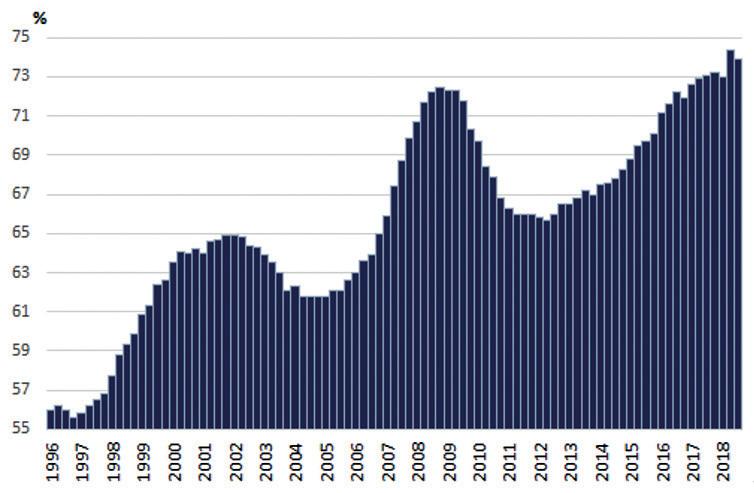
The final measure is to look at the risk premiums associated with different types of debt. In other words, how much it costs companies to

borrow compared to the benchmark ten-year US treasury bond. We have seen spikes in these rates for highgrade corporate debt and junk bonds alike. Both have eased back in recent days, but borrowing costs remain considerably higher than before the crisis. This will be putting pressure on many companies already struggling to cope.
As a general rule, if one company has a negative shock through no fault of its own, even a severe one, it will be able to obtain financing to continue in business. Anyone seeking online deliveries from Ocado will realise, for example, that the company is still suffering logistically from its devastating warehouse fire in England in July 2019, yet it has continued to have access to finance.
It’s a different story if a majority of firms are all suffering shocks at the same time, and the outcome looks as uncertain as it does at the moment. To make matters worse, companies are entering this period carrying high levels of debt. US corporate debt, for example, is over 70% of GDP, much higher than historic levels.
Alternatives
While the markets for trading corporate debt may well collapse, some companies may still be able to borrow
privately. During the financial crisis, Goldman Sachs chose not to participate in government bailouts, which came with restrictive conditions. Instead, the US investment bank went to Warren Buffett’s Berkshire Hathaway in 2008 and effectively borrowed US$5 billion. This created enough investor confidence to allow Goldman to issue new shares on the open market to raise extra capital. This time around, Berkshire holds about US$125 billion in “cash”, which could be used to strike similar deals. An alternative option for some promising companies will be private equity finance , in which investment firms buy stakes in them.
In some cases, bank lending may also be available: central banks have given continual assurances that the major commercial banks have passed strenuous stress tests, so they will hopefully be in a position to do their jobs and lend. Yet despite these possibilities, current uncertainties may cause companies in sectors hit hard by the pandemic to be insolvent if they cannot trade for several months. Here, the UK programme on paying up to 80% of wages for furloughed workers is well judged. This should help high street retailers, for example, since they have high wage bills. It will also help these firms that business rates have been suspended.
europeanbusinessmagazine.com31
US corporate debt as a % of GDP
Economic effects of coronavirus lockdowns are staggering – but health recovery must be prioritised

With the oil prices going to below zero and the spike in unemployment claims is the proverbial canary in the goldmine,we should expect a swathe of bad economic numbers coming down the pipeline. The head of the St. Louis Fed expects a 30% unemployment rate and a 50% drop in US GDP by summer. More importantly, as the health crisis rises and crests at different times in different parts of the world, the horrifying numbers on GDP growth, unemployment, business closures are not likely to let up in the near term. Multiple countries
are in a recession, and eventually, the whole world will fall into a deep recession.
The plunge from prosperity to peril will be as swift as the switch to lockdown protocols in most countries. We cannot even rely on the data we have to reveal the speed and depth of the crisis since this is collected and updated with lags. For instance, the US monthly jobs report for March collects data in the second week of March, failing to capture the massive spike in unemployment claims that appears after March 12.
In the meantime, sources such as restaurant booking website OpenTable can offer some insights into the magnitude of things. Combine a black swan event with missing data, and it is not surprising that markets are swinging violently.
Deep freeze
The question is not one of whether we are in a recession – we are. The more pertinent questions are: how long it will last? How deep it will be? Who will be impacted the most? And how swift will the recovery be?
europeanbusinessmagazine.com 32
These questions are complicated and even top economists must admit a lack of confidence in their answers. We are not experiencing a standard downturn. Nor is it simply a financial crisis, a currency crisis, a debt crisis, a balance of payment crisis or a supply shock.
We have not seen anything like this since the flu pandemic of 1918. Even there identifying the effects of the flu is confounded by first world war that took place at the same time. What we have here is something different. At its heart, we are experiencing a healthcare crisis with various parts of the world succumbing in a staggered fashion.

To slow down this global health crisis (the “flatten the curve” mantra), we have chosen to put the economy into deep freeze temporarily. Production, spending, and incomes will inevitably decline. Decisions to reduce the severity of the epidemic exacerbate the size of the contraction. While the initial decision to reduce labour supply and consumption are voluntary, this will likely be followed by involuntary reductions in both, as businesses are forced to lay off workers or go bankrupt.
Of course, government policies will attempt to mitigate these effects. Some are using traditional monetary and fiscal policies (cutting interest rates, quantitative easing, increasing unemployment insurance, bailouts). Others are trying out non-traditional methods (direct cash transfers, loans to businesses conditional on maintaining unemployment, wage subsidies).
Public health priority
How long the economic impact lasts depends entirely on how long the pandemic lasts. This, in turn, depends on epidemiological variables and health policy choices. But even when the pandemic ends, the resumption of normalcy is likely to be gradual. Countries will persist with a strict containment regime like in China today, and continue to impose travel restrictions to various parts of the world where the disease continues to spread.
The many factors at play in this complex, interlinked crisis that affects both people’s health and the global economy introduces massive uncertainty into anyone hazarding the pace, the depth and the length of the impact. As a result, we should treat any precise estimates (such as “GDP will decline by X%” or “markets have reached their bottom”) with scepticism.
Lockdown is geared toward stopping health services from being overwhelmed.
EPA-EFE/Will Oliver
Especially frustrating is the idea that there is a conflict between academic disease modellers and hard-edged economists saying that steps to slow the spread of coronavirus has trade offs. This could not be further from the truth. Among economists there is near unanimity that countries should focus on the healthcare crisis and that tolerating a sharp slowdown in economic activity to arrest the spread of infections is the preferred policy path. In a recent survey carried out by the University of Chicago, respondents universally agreed that you cannot have a healthy economy without healthy people.
The health crisis has naturally created a crisis of confidence. This, in turn, can have damaging long-term effects with continuing uncertainty leading
firms and households to postpone investment, production and spending. Restoring confidence requires a singular focus on containing and reversing the spread of COVID-19.
Slowing the rate that people fall ill with COVID-19 is not the end in itself. It is a means to temporarily reduce the pressure on hospitals and give time to identify treatments and a vaccine. In the interim, we must build testing capacity, perform contact tracing, setup the infrastructure for extended quarantines, rapidly expand the production of masks, ventilators and other protection equipment, build and repurpose facilities into hospitals, add intensive care capacity and train, recall and redeploy medical personnel.
All of this is also the way to restore the economy’s health and economic policy must complement it. In the short run, economic policies should mitigate the impact of lockdowns and ensure that the current crisis does not trigger financial, debt or currency crises. It should focus on flattening the recession curve, ensure that the temporary shutdown has only transient effects, and facilitate a quick recovery once the economy is taken out of the deep freeze.
In the meantime, it’s important to also recognise that this is an unprecedented crisis. Everybody has their role to play, but nobody is infallible and uncertainty is inevitable.
europeanbusinessmagazine.com33
AScoronavirus spreads across the world, politicians are confusing the current economic situation with a recession. The current decline in production and employment is not due to declining demand or supply, as is normally the case in a recession spiral. Rather, it is because governments are shutting down vast swathes of the economy. It is their reactive policies which will take us into a recession that we can avoid.
An extreme hypothetical example will help clarify this. Consider a government mandate to shut all businesses on one random Tuesday for a holiday. People are asked to stay home. What happens on Wednesday? There is no significant economic impact.
Employees, consumers and businesses start on Wednesday where they left off on Monday. We could even imagine this market closure or “economic pause” being extended to two or three days, still with no significant impact. Indeed, the market closure could go on as long as consumers, employees, and businesses are able to go into a state of “suspended economic animation”. Everyone significantly reduces their economic activity, but, critically, maintains their ability to restart their economic activities where they left off.
An overly long market closure would lead us into a recession. Consumers wouldn’t be able to pay their rents and mortgages, and there would be
chain reactions of unpaid bills across the economy. This in turn would reduce demand and businesses, in turn, would fire employees. We would be in a recession spiral.
To avoid this, there does need to be government intervention. Governments need to ensure that consumers, employees and businesses don’t degenerate during this state of suspended animation. They must be able to start up after the market closure where they left off before.

A different kind of crisis
Unfortunately, too many of our generals are fighting the last war. The mistaken approach currently being pursued in the US and some other countries is to simply try to inject vast sums into the economy. This is what worked in the 2008-09 recession. It is a sound approach when a supply or demand shock or slowdown leads to “normal” recession conditions. But not today.
For example, policy makers are being asked to spend a fortune keeping airlines afloat. Is this going to increase demand? No, people aren’t flying. Do do we even need many planes flying at the moment? No.
Instead, what is likely to happen is that the airlines will simply fire employees they don’t need, not fly empty planes, and then pocket the cash. Those fired employees will stop spending, go into mortgage default, reduce consumption, and our recessionary spiral will ensue.
Similarly, will the proposed US$1,000 (£766) citizen handout really provide enough money to cover rents and mortgages and food and other bills for six or 12 months, considering the ten million jobless claims filed over the last few weeks? It is a huge government outlay, but it won’t suffice.
Pressing the pause button
Four targeted policies, taken together – some of which are being adopted in parts of the world – can ensure a swift economic restart:
europeanbusinessmagazine.com 34
HOW ECONOMIES CAN SURVIVE A PERIOD OF ”ECONOMIC PAUSE” TO DEAL WITH CORONAVIRUS
1. Put a “pause” across the economy, specifically on all money owed, including rents and mortgages;

























































2. Require companies to furlough rather than fire employees, and to restart their salaries when the business restarts;
3. Ensure that individuals have enough income to cover sustenance needs like food and medical care;



4. Provide financial support for businesses to ensure they do not go bankrupt while in the state of “suspended animiation”.






Policies 1 and 2 are the critical “suspended animation” policies, because right now we need action which ensures businesses don’t fire workers and don’t go into bankruptcy. We need to provide these businesses with the ability to start up again (on the hypothetical Wednesday) once the crisis has passed. Similarly, we need employees and consumers to avoid default on their rents, mortgages and other bills.
For instance, Camille, the restaurateur down the street from me, worries that all the investment in her restaurant that she opened two years ago – the building of the kitchen, the remodelling and furnishing -— is about to be wiped out because she can’t afford rent payments while the doors are closed.
But if she could get a “pause” on her mortgage payments and get some basic income to survive, she could wait out this crisis and start up the restaurant immediately afterwards. Her employees, if given a pause in their rent payments and a basic living subsidy, could also wait out the storm without fear of homelessness, and come back to work.
Enacting “suspended animation” policies also reduces the government burden because there are fewer bills that it needs to subsidise. This reduction of bills will give the government more breathing room to support the paused economy for a longer period of time.
Some countries are moving in this direction, particularly around housing security. Italy has taken a halfstep in this direction by suspending mortgage payments. The UK has put a three-month de facto rent delay and a mortgage holiday for affected property owners, and is promising to pay up to 80% of workers’ salaries. Even the Housing Policy Council, a trade association of the nation’s leading mortgage originators, is proposing a mortgage payment forbearance for three to 12 months.
Of course, there are no perfect solutions, but conceiving the problem as one of an “economic pause” rather than a recession will direct policy makers to smarter solutions.
By implementing policies which recognise that a state of suspended animation is not the same as a standard recession spiral, everyone can go back to work on a relatively normal Wednesday – in the hopefully not too distant future.

europeanbusinessmagazine.com35
NORTH AFRICA: How Morocco Is Dealing With CORONAVIRUS
Morocco is gathering momentum to halt the spread of the virus which has plunged the entire planet into a state of major health emergency, causing nearly 37,000 deaths and 760,000 infections in a few months. Relatively spared, the Kingdom of Morocco, where general confinement was introduced on March 20, has around 1000 confirmed cases of Covid-19 today. To face the rapid outbreak of the pandemic, King Mohammed VI immediately shifted to the offensive and put all of the stakeholders to work on an aggressive response plan where every day counts.
On March 2nd, Morocco recorded the first patient tested positive for coronavirus on its soil. Since then, the country has embarked on a serious race against the clock to avoid a national health tragedy. These are the details of the 5 highlights of the Moroccan anti-Covid strategy.
An immediate response plan based on a series of preventive actions
By adopting the opposite view of several European countries hit hard by the epidemic, Rabat chose the pathway of prevention and immediately adopted a series of drastic measures. The Kingdom gradually barricaded its borders, closed schools and universities, cafes, restaurants and non-essential shops, then cancelled all sporting, cultural and artistic events before closing all the mosques and places of worship.
On March 18, a few days after the announcement of the first local case positively tested for the Covid-19, the Minister of Health, Khalid Ait Taleb,
held a live press briefing during which he called on the population to limit their movements to the maximum and to apply voluntary confinement.
Two days later, the country of nearly 35 million people declared a state of health emergency and enforced a general confinement, which will last until April 20 at least. Starting from March 20 at 6 p.m., everyone leaving home should possess a written authorization to do so.
Massive public awareness and dissuasive sanctions
The Ministry of Health hammered good hygiene rules and precautionary measures repeatedly on television channels, radio, and social media to prevent the spread of the virus. Furthermore, the authorities embarked on a massive awareness campaign using town criers to get the message across to as many people as possible.
As the general confinement came into effect last Friday, the first weekend of confinement was not easy to
handle for the Moroccan authorities. Many violations of safety regulations have been recorded in several cities, namely in Tangier and Fez, where dozens of residents gathered on the streets to invoke God in such a crisis. To prevent the reoccurrence of this kind of actions, the State has decided to crack down on such violations and impose coercive sanctions. Failure to comply with the state of health emergency is therefore punishable by between one- and three-months’ imprisonment, as well as fines ranging from 300 to 1,300 dirhams (around 123 euros).
A special solidarity fund to fight the pandemic and limit its economic and social impact
The battle against the coronavirus will come at a price. In this regard, King Mohammed VI ordered the creation of a fund dedicated to mitigate the effects of the pandemic. In less than a week, the fund raised more than 30 billion dirhams (3 billion euros)

europeanbusinessmagazine.com 36
thanks to the contribution of different Moroccan stakeholders, including big companies, senior civil servants, parliamentarians, senior and high-ranking officers, politicians, etc. for these are difficult times that require solidarity.
This special fund is dedicated to upgrade the infrastructure of the health system, acquire the medical equipment necessary to treat patients tested positive for Covid19, to manage the repercussions of the pandemic on health, and to cushion its economic and social impact. All citizens are invited to contribute, according to their financial means, in this national solidarity. The Moroccan State has thus opened a special bank account for citizens to remit their individual donation, and set up an SMS solidarity number “1919”; each SMS represents a donation of 10 dirhams.
To help the most vulnerable population get through this crisis, particularly the most affected by the freezing of the economic activity in the country, this fund will allow the payment of a 2,000 dirhams compensation per month (around 187 euros) to all employees affiliated to the CNSS (social security fund) who are currently in a work stoppage.
In addition, 1 billion dirhams has been allocated to the Ministry of Health to upgrade the infrastructure of the health system and acquire medical equipment in preparation for a possible degradation of the epidemiological situation.
Reinforcement by military forces
The images of the armored units roaming the streets leave no room for doubt; the army is also taking part in the fight against the coronavirus. The 56-year-old monarch gave his order to deploy the military medical and paramedical personnel to reinforce the medical structures of the country. In the same context, the social services of the Royal Armed Forces and the Royal Gendarmerie will also be deployed.
Bearing in mind the tragic example of Italy, which is still mourning its
deaths, Morocco quickly decided to deploy all of its health resources in anticipation of a possible worsening of the situation.
Already on March 17, King Mohammed VI chaired a meeting with the head of government, Saâdeddine El Othmani; the Minister of Health, Khalid Ait Taleb; the Minister of the Interior, Abdelouafi Laftit; the Director General of National Security (DGSN), Abdellatif Hammouchi; the Inspector General of the Royal Armed Forces, General Abdelfattah EL Ouarak; the Commander of the Royal Gendarmerie, Mohamed Haramou. This meeting was devoted to monitor the management of the outbreak of the coronavirus pandemic in the country.
A new therapeutic protocol: Morocco bets on chloroquine

It is the treatment everyone is talking about. While studies and clinical trials are still carried out in renowned European and American laboratories, Morocco has officially adopted chloroquine and hydroxychloroquine to treat confirmed cases of Covid-19.
In a circular dated Monday, March 23, the Minister of Health, after
consultation with the technical and scientific committee of the National Program for the Prevention and Control of Influenza and Severe Acute Respiratory Infections in the Kingdom, gave the green light to use this treatment in the therapeutic management of Covid-19.
It is worth noting that recently, the Moroccan government has acquired from Sanofi laboratory the entire stock of drugs sold under the commercial names of “Nivaquine” and “Plaquenil”, which were manufactured at the industrial site of Sanofi Maroc in Casablanca.
The stocks of these two drugs, initially indicated to treat and prevent malaria, were fully “made available exclusively to health establishments, with a strict treatment protocol which is subject to monitoring and control”, reports 2M, a Moroccan TV channel.
To provide a better treatment for patients infected with coronavirus, the country has chosen to learn from the Chinese experience. Last Monday, March 23, the national airline, Royal Air Maroc (RAM), announced on its Twitter account the arrival of two airplanes from China, carrying medical equipment.
europeanbusinessmagazine.com37
How to avoid a coronavirus debt crisis? Issue a new type of government bonds linked to GDP
The range of forecasts about how the coronavirus will affect the world economy is so wide that you question their usefulness. For example, the IMF predicts that the UK will contract 7.5% in 2020, while the UK’s own Office for Budget Responsibility thinks it will be 13%. Meanwhile the OECD believes that each month major economies spend in lockdown will remove two percentage points from their annual GDP growth.
Issuing a wide range of predictions is bound to make one forecaster get it right, I suppose. Maybe they ought to learn from the 1665 plague of London, where Daniel Defoe noted that all predictors, astrologers, fortune tellers and “cunning men” did disappear from the streets. It’s tempting to think they all realised their professions had nothing useful or optimistic to report at the time.
Yet if we cut through today’s forecasts, two things appear certain. First, the deeper the recession, the longer it will take to recover. It’s basic mathematics that a recession of 10% in 2020 will require 11.1% growth in 2021 for GDP to return to its pre-coronavirus level.
econd, the heavy government spending to stave off the worst lockdown effects will balloon debt levels and fiscal deficits. Eurozone debt as a proportion of GDP looks to be heading north of 100%, for
instance, with the likes of Italy and Greece facing much worse. Hence governments need to look very carefully into how they might pay back these debts. One idea is to issue GDP-linked bonds. Normally the bonds that governments issue to borrow money have a set rate of interest that gets paid out at fixed intervals – say 1% a year paid every month for ten years.
In contrast, the interest due on GDPlinked bonds would go up or down with the issuing country’s economic performance. When GDP growth was weak, its debt-servicing costs would decline. The ratio of its debt to GDP would therefore rise less sharply during a downturn, thus reducing the need for austerity to reduce the debt pile later.
On the other hand, when GDP growth was strong and tax revenues were booming because everyone is making money, the debt-servicing costs would increase. So a country pays more when it can afford it, and less when it can’t.
A few issues
This should benefit both governments and bond investors, since more stable government debt should make defaults less likely. It should also reduce the need for international bailouts. Yet despite this winwin, there would still be a risk for
investors with these bonds. In a severe recession where GDP falls by once-in-a-century levels – hello 2020 – investors’ interest payments would be much lower.
In short, GDP-linked bonds are essentially an insurance policy for governments. Like any insurance, the market would insist on a “GDP risk premium” to be added to the cost of the debt. This would have to be low enough to persuade governments to issue these bonds, but high enough to persuade investors to buy them. The benefits on both sides would hopefully ensure a middle ground.
Inevitably, the premium would vary by country. Greece would pay more than Germany, for example, since Greek GDP growth has been almost three times as volatile as Germany’s in recent years. For this very reason, the Greeks would be more attracted

europeanbusinessmagazine.com 38
to GDP bonds. Yet the coronavirus has demonstrated that even the richest countries can suffer terrible economic shocks, so these bonds should be attractive across the board.
A different complication is that initial GDP estimates are often revised later. You might think a government is paying out on a 3% rise in GDP only for a correction that says it is paying out on 2%. There are two possible solutions. One is for debt repayments to be linked to the previous year’s GDP, to allow time for such revisions. Alternatively, governments could use the the current year’s GDP and then adjust a following year’s repayments if the first year is revised.
Another danger is that these bonds incentivise governments to report lower GDP in order to pay less to investors. But most governments
need to be re-elected. This arguably makes them more likely to overestimate GDP than to underestimate it.
Who goes first
One other issue with risk premiums is that if the country that first adopted this type of borrowing had a reputation for debt problems, investors might take it as a sign it couldn’t afford to repay its debts. If so, investors would probably insist on a substantial premium and the bonds might never get off the ground.

To remove this first-mover stigma, wealthier countries should take the lead in issuing these bonds. And the more countries that issue them, the more the premiums would fall everywhere, since investors could hedge their bets by exposing themselves to multiple countries’
GDP at the same time. Given that investors would probably insist on higher risk premiums for GDP bonds issued during the current crisis, it is all the more important that countries act in unison.
I am certainly not the first to suggest GDP-linked bonds. A recent letter to the Financial Times noted that G20 finance ministers and central bank governors agreed three years ago that such bonds could improve public finance. Since then, a report on the bonds might work has been published by the Centre for Economic Policy Research.
The reason these bonds have never yet come to fruition is probably that governments don’t normally predict the bad times ahead that would justify insuring themselves in this way. But with the pandemic in full swing, and forecasters queuing up to predict economic disaster, now is the ideal moment.
europeanbusinessmagazine.com39
Closing your Gender Pay Gap is Business Critical in 2020
The average gender pay gap in businesses across Europe is 14.8%. A significant proportion of businesses have a gender pay gap that favours men - 78% in the UK for example. A large proportion of this gap is attributable to the fact there are more men in senior roles than women, therefore the average hourly wage is lower for women than for men.

Whilst you might not have recognised it yet, your business is already suffering from having a gender pay gap, in multiple alarming ways.
84% of senior professionals believe that having a gender pay gap damages the reputation of organisation in the eyes of prospective clients and talent alike.
In a survey by BMG Research 56% women said that the existence of the gender pay gap in their organisation would lower their motivation and commitment towards their work and employer. Low motivation in staff is a cause of reduced productivity and higher staff turnover. In fact, 46% of women said they would be less likely to stay with their current employer if there was reported a gender pay gap. Attracting good talent for your team is already hard and when 76% of women say they look for positive role models similar to them when accepting a new job, can you really afford to avoid solving this problem?
The Benefits of Gender Diversity
If those facts are concerning to you then the good news is there are so many benefits to building a gender diverse team and it’s entirely achievable if you put the work in.
For a start there is an overwhelming amount of evidence to show that diverse teams make better and more innovative decisions. A study featured
in HBR of more than 1800 professionals and 40 case studies in the USA demonstrated that teams with inherent diversity as well as acquired diversity were 45% more likely to outperform and out innovate compared to those without these diverse characteristics. For me one of the most crucial benefits is the increased ability to attract and retain the best talent. The war for talent is growing evermore important as technology takes over the less creative tasks we perform at work. Now when we hire we’re looking for creative thinking from innovative team members to keep our businesses growing and thriving. PwC has found that 77% of CEOs say a lack of access to top talent is the top threat facing their business. Gender balance is increasingly becoming a key requirement for job candidates. Over 60% of women expect companies to actively display their commitment to gender diversity and look for this when considering employment.
If you’re not moved by the moral argument, then the boost to financial performance will surely convince you. The World Economic Forum estimates that global GDP would increase by US$trn by 2025 if we were to close the gender pay gap in economic participation by 25% over that period. Companies with above-average diversity within their management teams have innovation revenue of 45% in fact in order to experience a significant jump in innovation revenue, leadership teams need to be at least 20% female. In a survey of 1000 companies in 12 countries featured in their 2018 report ‘Delivering through Diversity’, McKinsey showed that companies in the top quartile forgeneder diversity on their executive teams are 21% more likely to outperform their competitors in the bottom quartile. Having a team that represents your customers is surely the smart move. Women make up to 80% of purchase
decisions (in most product categories) so understanding how women might perceive a product or service is key to understanding your market and route to success.
Starting to Tackle the Problem
All of this is pretty convincing so why aren’t all companies focussed on making the changes needed to ensure their business is successful in the future?
I think there are many reasons but the main one is it’s perceived to be too hard to own the problem and too difficult and expensive to make the changes needed and so it is not prioritised.
europeanbusinessmagazine.com 40
With increasing pressure on companies to show progress in this area, companies are spending money trying to “fix their D&I”, but most of their investment land in activities that focus on repairing their reputation rather than on fixing the underlying problems. Creating and maintaining a gender diverse team isn’t simply a marketing exercise. Publishing content for International Women’s Day about how well you value and treat women without outlining an action plan to close your gender pay gap and build a truly gender equal team is not going to cut it. In order to really tackle your gender pay gap and gender diversity issues the most senior leaders in the
business need to own and prioritize the work needed to solve them and provide budget to ensure this work is successful.
In order to get started we recommend the following
Map and measure outcomes of your current processes that involve hiring, induction and career progressionhow many women are getting through. Examine your processes carefully. Where is bias (conscious or not) affecting the decisions that are made? Talk to your female employees and try to understand their experience
with your workplace and processes, especially ask them about what barrier they have encountered. Ultimately this work takes time. There is no silver bullet and if your company is to survive and thrive, you must start now. At She Wins offers consultancy and training to businesses aiming to achieve gender diversity and closing their gender pay gap. Clients include PwC, Sky, Publicis Groupe and Deliveroo.
She Wins co-founder Clare Sutcliffe is speaking about Closing the Gender Pay Gap at UNLEASH Spring, the UK’s biggest HR and tech community event on 24th and 25th March
www.unleashgroup.io

europeanbusinessmagazine.com41
Female Leadership: Mind the Gap
Where are all the female CEOS and what barriers prevent women from reaching senior leadership roles and the boardroom? Gender inequality in the workplace is not just a social or legal issue - it is an important business one too, so how are companies performing on this critical aspect of 21st century management?
Traditionally data has shown that from leadership positions to pay and investments, women are systematically losing out, and less than 30% of senior management roles are held

by women across the globe. Furthermore, statistics reveal that while women make up 52% of the population, only 15% of employees in the IT sector are female, and in science, women are also in the minority. Likewise, less than 30% of the world’s researchers are women and this under-representation occurs in every region in the world. The financial sector is no different. It has traditionally boasted a male-dominated leadership, culture and reputation, and while many companies are adjusting to the increasing financial power
and influence of women, ingrained attitudes take time to change. The old boy network may not be quite as explicit as it once was, but it continues to exist and permeate many organisations.
However, last year 87% of global businesses had at least one woman in a senior management role and today women lead 167 of the country’s top 3,000 companies. Currently, 7% of FTSE 100 companies have a female CEO at the helm of the organization, and while FTSE 250 companies have fewer female CEOs, with just five

europeanbusinessmagazine.com 42
companies with a woman at the head of the business, progress is visible. Nevertheless, according to research by the International Labour Organization (ILO), over 13% of boards do not have a single woman involved and the majority have low female representation. Clearly a balance has not yet been reached and there is more work to be done.
However, recent data from the Hampton-Alexander Review shows women now make up 33% of all board positions on FTSE 100 companies compared to 12.5% a decade ago, but
to foster legitimate inclusivity, companies must make meaningful cultural change. Although more women are rising to lead organisations, they often face challenges not typically shared by their male counterparts, including the often stronger obligation to sustain a work-life-childcare balance, sexual harassment and a lack of role models at the top of the corporate layer. Things are looking up however as recent legislative efforts and initiatives have helped bring women’s representation in the boardroom to an all-time high, but as it stands approximately 90% of the world’s board seats still belong to men.
We are witnessing change across the pond too. Under Californian law, publicly-held companies are required to have at least one female board director. While women have made notable gains politically, they continue to struggle to gain economic equality, including at the highest levels of American business. Fundamentally, this isn’t a women-only issue and it cannot be seen as merely a tick box initiative. There needs to be a united drive towards diversity and inclusivity, as gender equality in the workplace is a vital ingredient to reach sustainable development goals. Achieving this can help introduce a fresh perspective, encourage innovative solutions to problems and boost corporate performance overall.
The United Nations Global Compact Network has launched Target Gender Equality, a new initiative to mobilise and support companies in meeting ambitious corporate targets for women’s representation and leadership in business. It hopes to empower more women in the industry, drive the next generation of leaders and inspire companies to build a sustainable gender balance in the boardroom.
The case to increase female leadership is not just about reaching gender equality, it is also good business. Women occupying leadership positions can be a competitive advantage.
It’s not surprising that the recent ILO study revealed that when boardrooms are 30-39% women, enterprises are 18.5% more likely to have improved business outcomes, and when boardrooms are gender-balanced,

enterprises are 20% more likely to have improved business outcomes. The proof is the percentage and the business case for gender diversity in the boardroom is clear. A more diverse C-suite is connected to higher margins, bigger profits, and a better total return to shareholders. Measuring women’s progress and understanding their positive impact in corporate leadership is vital and it should serve as a wake-up call to business leaders. Diageo, a leader in beverage alcohol, has been ranked as the number one business globally for gender equality in the Equileap 2019 Global Gender Equality Report and Ranking, which covers 3,519 companies in 23 developed economies, representing 98 million employees. Diageo boasts huge inclusivity, and almost half (44%) of Diageo’s board members are women. The company is working towards a senior leadership team showcasing 40% female participation by 2025. There is progress, but it is slow, and while establishments are moving in a positive direction, the pace of change is more generational and less powerful than it could be. When all of the talent pool is given the opportunity to rise, companies benefit as well as the individuals.
In 2020, the workforce should mirror the diverse world we live in, and women like Sharon Letcher, an entrepreneur, international speaker, best-selling author, mentor, philanthropist, licensed CPA and a Chartered Global Management Accountant, is paving the way for female leaders. Inspired business leaders can reset the tone at the top and make gender parity a priority throughout the entire organisation, and this change will be good for business and good for profit. A willingness to change the traditional corporate culture creates a ripple effect that benefits ourselves, our fellow workers, our organisations, and can lead to a shift in society as a whole. Companies that make the switch from the old command and control management models to a business that is more collaborative and inclusive, is set to thrive. At a time when the world is facing huge uncertainty, this has never been so important.
europeanbusinessmagazine.com43
As you may already know, Tesla’s stock prices have gone through the roof in recent months. This has come as a shock to many who wrote off Elon Musk and his now-thriving company after their rocky start to 2019.
There were concerns surrounding demand and profitability, as Tesla posted losses of around $1 billion in early 2019, however their stock managed to bounce back by the end of the year. Not only did it bounce back, it skyrocketed. Share prices reached all time highs, and the company reported profits in the final two quarters.
Tesla hit another big milestone when it became the first US automaker to reach a market cap of $100 billion

in early 2020. This number has only increased since then, and means that Tesla is nearly double the size of General Motors and Ford combined, with only Toyota ahead of them.
But how did we get here? How did Elon Musk, the company’s CEO and biggest shareholder with a net worth of just under $40 billion, push Tesla out of the darkness and back into the shining light of success? Let’s take a look at some of the recent moves made by Elon and Tesla to figure it out.

Oppenheimer analyst Colin Rusch’s target price on Tesla went from $385 to $612, which is an almost 60% increase. Rusch cited Tesla’s risk tolerance, implementation of lessons from errors in the past, and more ambition
than competitors and peers as reasons for this. He says Musk’s company poses a very real threat to others who are not able and/or willing to innovate at a pace that matches that of Tesla. Despite reporting losses at the beginning of 2019, Tesla proved profitable by the third quarter. This came as a delight to investors around the holiday season.
China
Elon decided to take his company to China, with the first vehicles being sold in December 2019. This step is a big one towards the CEO’s goal of Tesla becoming a global automotive company, spreading his electric vehicles
europeanbusinessmagazine.com 44
all over the world. This move allows the Chinese to avoid hefty tariffs when choosing to purchase American cars.
Wall Street has been impressed by Tesla’s rising number of deliveries as well as their new China factory. The company has vowed to improve sales by over a third in 2020 in order to exceed half a million units “comfortably”. In 2019, the company delivered 367,000 vehicles globally. Tesla has plans for its China branch to deliver 150,000 vehicles per year alone.
Underground Tunnels
Musk’s drive to innovate and create something that strays from the norm shows both in his desire to create
underground tunnel systems, as well as in the final product of his Cybertruck.
Unlike the Cybertruck, the tunnels have yet to fully come to fruition. However, this does not mean Musk is done with the idea, as he believes these tunnels could do wonders for congestion. The construction of the first of two tunnels has been completed underneath the Las Vegas Convention Center, and they are set to debut in January 2021.
This project is meant to help people get around the convention centre quickly and easily, reducing a 15 minute walk to a 1 minute ride. However, Musk has much bigger plans for these tunnels, with the end goal being to connect Los Angeles with Las Vegas.
Some believe this will only spread the congestion, but Musk thinks people are underestimating the potential of what underground tunnels could do: “The deepest mines are much deeper than the tallest buildings are tall, so you can alleviate any arbitrary level of urban congestion with a 3D tunnel network.”
The Cybertruck
When discussing the design of the Cybertruck on a Third Row Tesla Podcast episode earlier in the year, Musk said:
“You want to have these things that inspire people and feels different,”
Adding:
“Everything else is the same, like variations on the same theme.”
His inspiration for the unique design came partially from the car he bought in 2013 that had been used in The Spy Who Loved Me, the classic James Bond movie from 1977. Musk paid just shy of $1 million for the 1976 Lotus Esprit sports car.
The failure of the “bulletproof” windows demonstration at the unveiling of the Cybertruck did cause Tesla’s stock to decrease by 6%, however this did not impact the amount of pre-orders made. Musk announced on Twitter near the end of November 2019 that there had already been 250,000 pre-orders.

It’s important to note that a pre-ordering a Cybertruck only costs $100 for processing costs, however this is not the same as a deposit. For a pre-order to become a successful sale, there is a purchase agreement that must be signed. It has not been revealed how many of the original 250,000 pre-orders and the others that followed turned into actual sales.
The Future
The future is looking bright for Tesla, as ARK Investment Management updated their valuation model. The firm has estimated that the by 2024, Tesla’s stock could be priced at a whopping $7000 per share. They also say this could go up to as much as $15,000 in a best case scenario. While the company has yet to be profitable on an annual basis, the third and fourth quarter of profitability last year gives hope to Tesla and its investors that it will continue on this path. The company is not looking to be a niche manufacturer, but rather a global electric-vehicle producer. This transformation is looking more and more promising as the stocks have seen an increase of almost 170% in the last six months. However, the construction of Tesla’s new factory near Berlin has been temporarily halted due to environmental concerns, so this expansion is not without its obstacles.
Possible Issues
The coronavirus outbreak could lead to some issues for Musk and his company. While the factory in China has, until now, been seen as a purely positive, smart move for Tesla, that view may change very quickly.
The virus has already killed just under 2000 people globally, and has infected tens of thousands all over the world. The spread of the virus is terrifying to people across the globe, and this fear has the ability to negatively impact Tesla’s results.
Tesla has been on a steady road to recovery after last year’s rocky start, but will China be its next downfall?
europeanbusinessmagazine.com45
Crisis communications during the Coronavirus chapter
By Victoria Usher, Founder and CEO at GingerMay PR
We’re in the midst of an extraordinary moment in time where a single occurrence has sparked a global reaction, impacting just about everyone both personally and professionally with incredible speed.



With unprecedented public health and economic measures causing a shockwave for businesses, it’s tempting to close ranks and go into survival mode, staying quiet until the situation improves. But at this time communication is more important than ever. How your business responds to this crisis will have a huge impact on its reputation moving forward, and communicating early, transparently and with authority is essential to maintain credibility. A robust communication plan will ensure your business weathers the storm and comes out in front when the inevitable recovery bounce takes place.
A solid communication strategy




























Step one in crisis communications is to establish a crisis response team, a kind of task force to head up your response. Team size will vary by business but it should be kept small to aid rapid decision making. At a minimum you will need representatives from the leadership, human resources, and communications teams, but you may also include people from key functions such as operations, legal or sales. The team’s command and decisionmaking structure must be determined immediately, along with an efficient approvals process that supports timely updates. Only members of the crisis response team should issue formal communications, and ideally businesses will appoint one or two key spokespeople. The team should meet regularly to review the situation as it unfolds, and issue regular updates, both internal and external.
As a rule, communications should be concise and easy to understand,





although it is essential to explain where information is coming from. Businesses must maintain a consistent voice across all communications, respecting the gravity of the situation but remaining positive and reassuring, giving practical advice where possible. Early communication is vital. Nobody expects you to have all the answers from the outset, but they do expect to hear from you, so it’s better to be transparent and communicate what you do know even if that means admitting there are things you’re still working on.
Internal communications require a personal touch
































Employees and key stakeholders should be first in line for crisis communications. Aside from the fact they deserve to be in the know, it is far easier to communicate externally once everyone within your business understands what is happening and can continue delivering the best possible service to customers.
Written updates should be published regularly via accessible channels such as the company intranet, and if businesses use a communication platform such as Slack a dedicated channel can be created for all Coronavirus related updates. But in times of crisis it is also essential for business leaders to communicate with their employees in person. Just hearing their CEO’s voice, or seeing their face can be reassuring for an anxious workforce. During social distancing leaders can make use of video technologies to live stream announcements and host discussions. Employees and stakeholders need leaders to be reliable in sharing information. They want to know how the company is responding to the Coronavirus fallout and understand the process behind decision making. Leaders should encourage questions and answer them as fully as possible. As Liam Black, Chair of Big White Wall explained in a recent webinar, business leaders mustn’t duck the difficult conversations and must ensure employees feel heard. Being open about challenges facing the company while focussing on what you are doing about them will inspire confidence and limit the spread of misinformation.
europeanbusinessmagazine.com 46
External communications need empathy
Customers and partners need to hear from you, to understand what steps you are taking to reinforce your business and how changes might impact them. Even if it’s somehow still business as usual, customers and partners need to be reassured. The crisis response team should determine the business’s public position on the Coronavirus situation, develop approved messaging that aligns with that position, and establish guidelines for how spokespeople should engage on the topic.
As with internal communications, it’s essential to publish regular public updates in an accessible location such as the company website, providing contact details for further questions. But in addition to general updates, business should also tailor proactive communication to the needs of their customers. What is important to your customers and partners, what is likely to be worrying them and how can you help?
Predicting your customers’ questions, proactively providing the answers and taking action to provide assistance will ensure customers remain loyal as times improve. Many businesses understand the importance of envisaging customer needs and proactively fulfilling them, for instance some banks are temporarily waiving overdraft fees to ease financial worries, while some mobile network providers are automatically dishing out additional data to help people stay in touch during isolation. This is a time for empathy and assistance rather than driving growth; the positive impact on relationships will be worth far more in the long term than a few opportunistic sales right now.
Choosing the channel for crisis communications
The channels businesses use for external communication will depend on who they are communicating with. For major clients or partners, a regular phone or video call is irreplaceable,
whereas for others a weekly email may be sufficient.
Social media channels are incredibly effective for opening external dialogue and helping businesses understand their customers’ needs. But businesses must be prepared to respond quickly to any interactions, helping to maintain customer trust and relationships. While it’s not possible to predict all questions, the crisis response team can develop some pre-approved responses and provide guidance on dealing positively with negative comments.
A strong thought-leadership programme
In addition to dealing with communication in the context of the current crisis, businesses also need to look to the future and plan for the recovery bounce. Implementing a robust thought-leadership marketing programme at this time will protect businesses, allowing them to raise their profile and be at the forefront of the industry conversation as we come out the other side.
By publishing thought-leadership articles and conducting research to inform reports or whitepapers, businesses can influence the shape their industry will take post-Coronavirus and become a go-to spokesperson for the sector. Businesses can also publish additional content on their blog as a sort of digital newsroom, a resource for people looking for more information about what the company is doing. And they can offer their spokespeople as thought leaders for virtual industry panels or events, using this time to position the business as a leading voice within influential communities, and ultimately gaining greater traction as the situation improves.
We’re living and working through an unprecedented episode, and everyone is striving to adjust. A solid crisis communications and thought leadership strategy will be a game changer for businesses during the Coronavirus chapter, putting them in a strong position for the recovery that is on its way.
Victoria Usher, Founder and CEO at GingerMay
Victoria is Founder and CEO of GingerMay, a multi-award winning strategic marketing and PR consultancy with offices in London, New York and Berlin.
A former data analyst for Proctor & Gamble, Microsoft and FTSE 500 companies, Victoria founded GingerMay in 2010 to offer businesses a data-driven communications partner. GingerMay was crowned B2B PR Agency as a result of its reputation for rigour, remarkable thinking, and strong relationships with clients and journalists.
Victoria has received international acclaim for her work in the marketing and communications sector. She was named Industry Leader of the Year at the PRCA Dare Awards and won a Gold Stevie® Award in for Female Entrepreneur of the Year.

GingerMay boilerplate
GingerMay is a multi-award winning strategic marketing and PR consultancy with offices in London, New York and Berlin. Founded by a former data analyst for Procter & Gamble, Microsoft, and FTSE 500 companies, GingerMay helps global businesses to achieve their commercial goals while offering a superior level of strategic thinking and client service. Winner of B2B PR Agency of the Year 2018.
europeanbusinessmagazine.com47
UNDERSTANDING THE IMPACTS OF DIGITAL TRANSFORMATION
The digital era has arrived and there is no denying it. The improvement and the creation of technologies have dictated the pace of society and caused changes in people’s routine, habits, relationships and behavior, in general. Therefore, if society changes, so does the way it consumes and, consequently, the behavior of the market is also modified.
The use of emerging technologies to facilitate and improve the performance of companies and organizations is a recurring theme and has been gaining prominence worldwide. Executives from all sectors have started to use digital advances such as data analysis for decision making, mobility issues, social media and countless other smart devices incorporated into their daily routines. However, for many companies, the use of traditional technologies to optimize internal processes, responsive websites and applications for customer relationships are tangible examples of Digital Transformation.
The new dynamics of the modern world and the speed in which the new technological, social and information revolution are impacting the way consumers are behaving has become a reality for companies. Experts have acknowledged that this new reality has contributed to the collapse of several business models in the last decade, and for this reason, companies need to adapt to new Digital Transformations.
Digital Transformation, what does it mean?

It is the integration of digital technology across all business areas, fundamentally changing how you operate
and add value to customers. It is also a cultural change that requires organizations to continually challenge the status quo, as well as experience and feel comfortable with possible failures and have methodologies for agile corrections.
Digital Transformation has become imperative for all businesses, from small to large corporations. This message appears loud and clear from each lecture, discussion panel, article, podcast, innovation festival or study related to how companies can remain competitive, offer digital platforms that understand their employees needs and stay relevant as the world becomes increasingly digital. Some companies, oddly enough, still have a difficult time accepting that the business commandments behind the evolution deadlines, the performance of the new operating models and their ability to respond to customers and competition, are not going anywhere without a cultural implantation of Digital Transformation.
It is also important to note that today’s organizations are at different stages when it comes to Digital Transformation. If you are feeling stuck in your Digital Transformation strategy, you are not alone. One of the most difficult questions when you are mapping your Digital Transformation is how to overcome the initial problems of the current business culture to implement the strategy. This creates anguish and many organizations think that they are far behind their changing peers, when this is not necessarily the case.
Even organizations that are doing well implementing their Digital Transformation, face difficult obstacles such as budget restraints, lack
of understanding from the directors and board members, teams that are resistant to change and, crucially, the impacts on cultural changes that are generated. However, this is no longer an issue that involves evaluating “whether the company will apply it”, but when it will start to deploy. Organizations that are delaying the implementation of a true Digital Transformation will struggle to survive. This is especially true as we are already evolving into the era of Post-Digital Transformation, and your company cannot afford to stagnate behind the others.
Organizations are investing and adopting digital technologies at an
europeanbusinessmagazine.com 48
unprecedented pace. Because of these efforts, digital technologies are increasingly fueling major business operations. Social media, mobile, analytical and cloud technologies, have gone beyond adoption silos to become part of the technological base of organizations.
Now that many global organizations have already evolved from this first wave of transformation to become digital businesses, what comes next?
In this era of Post-Digital Transformation, which is fast approaching, becoming digital is no longer a competitive advantage. With digital saturation and equal conditions, companies will face the challenge of meeting

the growing demands of customers, employees and partners in constant evolution. In the post-digital world, successful companies will be those that take advantage of the fundamental resources and apply a new generation of technologies and innovations to differentiate themselves, providing the right experience to customers at the right time.
Forward-thinking leaders are evaluating their organization’s current digital strategic plans and preparing the next stage of their Digital Transformation efforts. By preparing the next steps, it will allow companies to expand their digital capabilities, creating intelligent and highly personalized experiences.
All of this may seem unlikely, or at least distant, but I prefer to anticipate, and start implementing these new dynamics, rather than sitting at my desk and letting others have all the fun discovering the impacts of Digital Transformation and all the positive outcomes.
Janaina Tavares is Head of Organizational Development at ActionAid Brazil and a global ambassador and supporter of UNLEASH, the biggest global gathering of the HR and tech community https:// unleashgroup.io/.
europeanbusinessmagazine.com49
Nets and KPMG explore the power of AI in fraud prevention
Man and machine are the perfect pair when it comes to fighting payment fraud, according to a new whitepaper from European payments industry leader, Nets and multinational professional services provider, KPMG. Fighting Fraud with a Model of Models explains how utilising human expertise in combination with artificial intelligence (AI) and machine learning (ML) technologies can significantly increase the accuracy of fraud prevention services.
Fighting Fraud with a Model of Models explores the theoretical approach behind Nets Fraud Ensemble, an AI-powered anti-fraud engine developed in collaboration with KPMG, which can reduce fraudulent transactions by up to 40% on top of existing AI fraud prevention measures, for the benefits of banks, merchants and cardholders, as well as society in general.
Sune Gabelgård, Head of Digital Fraud, Intelligence & Research, Nets, comments: “It’s time for financial institutions to stop playing catch-up with fraudsters and, instead, get ahead of the curve. The business of fraud prevention has become increasingly convoluted, with the mass adoption of

e-commerce, increases in cross-border payments, and the growing popularity of new digital payment methods all adding new layers of complexity. Humans cannot tackle these challenges alone. Until now, the use of true machine learning to fight payment card fraud has been limited. We need it now. There are patterns in the data which are hugely valuable in the fight against fraud, but that are too complex for the human brain to identify. Machine learning can not only find these, it can analyse and act on them too and prevent fraudulent transactions.”
Bent Dalager, Nordic Head of NewTech and Financial Services, KPMG, adds: “We have applied an innovative machine learning approach utilizing several machine models in unison. This approach has a clear advantage and generates the most accurate fraud screening. When applied, this next level of fraud monitoring and prevention means banks and merchants can take a big step forward. Not only does it combat crime, it also improves the customer experience and dramatically reduces financial losses.”
The ‘brain’ of Nets Fraud Ensemble consists of multiple models working
together to analyse each individual transaction within ten milliseconds – the time frame in which a transaction can be safely blocked. The solution learns from the results of its analysis and adjusts accordingly, meaning the longer that it is operational the more fraudulent transactions are blocked, and the fewer false positives are granted.
Fighting Fraud with a Model of Models is available to download free of charge from the Nets website.
The European fraud landscape
With the total annual value of fraudulent transactions across Europe hitting €1.8 billion, the need to step up fraud prevention has never been greater. Card not present fraud now represents almost 80% of the total volume of fraudulent card transactions across Europe.
UK banks and card companies prevented £1.66 billion in unauthorised fraud in 2018 alone. This represents incidents that were detected and prevented by firms and is equivalent to £2 in every £3 of attempted fraud being stopped.
europeanbusinessmagazine.com 50



europeanbusinessmagazine.com51
AIRLINES
WHAT FUTURE DO
HAVE?
Airlines face an unprecedented international crisis in the wake of the coronavirus pandemic. The International Air Transport Association (IATA) estimates that the global industry will lose US$252 billion in 2020. Many airlines are cutting up to 90% of their flight capacity. On March 1, more than two million people in the US were flying per day. A month on, fewer than 100,000 people are going through airport security daily.
Some climate activists have welcomed the emptied skies, pointing to the dramatic fall in carbon emissions. But others worry that the bounce back and attempts to take back some of the losses might mean that an opportunity for fundamental, sustained change may be missed. In the US, a federal government US$50 billion bailout fund – part of
which will fund cash grants going towards airline workers, and the other part loans for the airlines themselves – was rolled out piecemeal in March, with revisions announced on April 14. More than 200 airlines applied. American Airlines will get US$5.8 billion, Delta US$5.4 billion, and Southwest US$3.2 billion, among others. Donald Trump, the US president, stated that the airline bailout was needed to return the industry to “good shape” and was “not caused by them”. Another US$4 billion is available for cargo airlines and US$3 for contractors.

In the UK, it was initially announced that no industry-wide bailout would be offered. Instead, the industry would have to rely on broader aid packages covering 80% of salaries (below a cap) for furloughed employees. But subsequently, the
government quickly gave easyJet a £600 million loan (US$740 million). Flybe, a smaller regional or “secondary” airline with pre-crisis financial issues, was not bailed out and collapsed. Many money-making routes Flybe ran have since been picked up by others.
Continental Europe is in worse shape. Italy has re-nationalised Alitalia, forming a new state-owned entity and investing €600 million (US$650 million). France has indicated it will do whatever it takes to bailout Air France/KLM (France owns 15% and the Dutch 13%), with a possible €6 billion bailout package (US$6.5 billion).
Meanwhile, Australia’s Qantas secured a A$1 billion loan (US$660 million). Debt-laden Virgin Australia, meanwhile, was denied a A$1.4 billion loan (US$880 million) and has
europeanbusinessmagazine.com 52
subsequently plunged into voluntary administration. Singapore Airlines, however, got a US$13 billion aid package.
The airline industry has faced many crises before – 9/11 and the 2010 Icelandic volcano eruption, for example. But these pale in comparison to the economic hit that airlines are currently facing. Some are asking: can it recover? Is this an economic crisis that could reshape how we travel and live? Or will it turn out to be more of a pause, before returning to business as usual? And what role does the climate crisis play in all this – how will sustainability figure in any rebooting of the industry going forward?
We are all experts in the airline industry. Darren Ellis (Lecturer in Air Transport Management) considers these questions first, looking at the industry’s structure and response. Jorge
Guira (Associate Professor in Law and Finance) then explores bailout options and likely future scenarios for the industry. Finally, Roger Tyers (Research Fellow in Environmental Sociology) considers how the industry might just be at a turning point in terms of how it tackles climate change.
A global problem
Darren Ellis, Lecturer in Air Transport Management
Most of the global airline industry is currently grounded. Although some routes are still managing to operate, and there is evidence of a gradual domestic air market rebound in China, 2020 will certainly not see the 4.6 billion annual passengers of 2019. The long-term trend of ever-rising air passenger numbers year on year
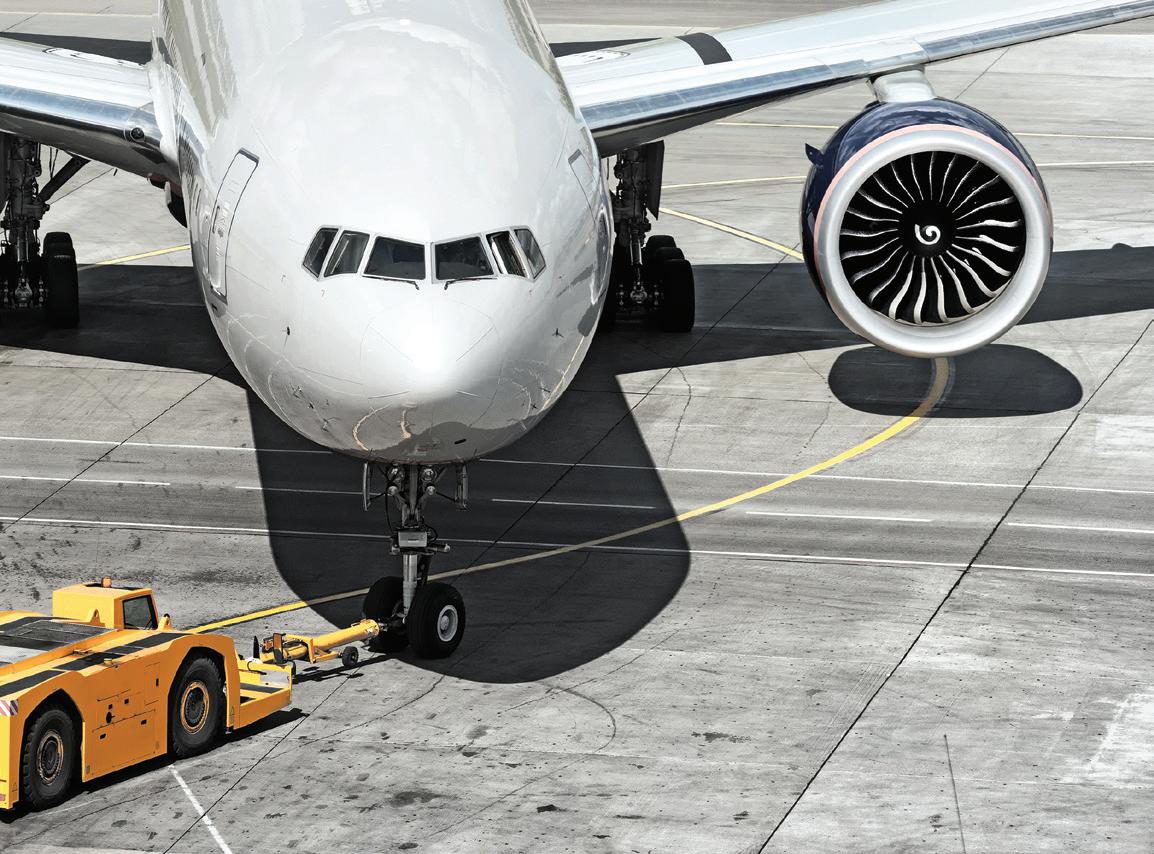
has been brought to a dramatic and rapid halt.
What this means for the global airline industry is vividly on display at airports around the globe as terminals remain empty and aircraft occupy any available parking space.
Like the predominately national response to the virus, so the airline industry is also seeing a wide range of policies and practices tailored and implemented almost exclusively at the national level. This means that some airlines, thanks to well-chosen national policies, will fare better, while others will flounder.
This is because beyond the multilateral single air market of Europe, the global industry remains firmly structured on a bilateral system. This web of country to country air service agreements (ASAs) is basically made up of trade treaties which
europeanbusinessmagazine.com53
governments sign with one another to determine the level of air access each is willing to permit. Even in Europe, the single air market essentially acts as one nation internally, while externally, individual European countries continue to deal with many countries on a bilateral basis.
The bilateral system is based on a bundle of rules and restrictions, including airline ownership (typically, a minimum of 51% of an airline must be owned by people from the country where the airline is based), national control, single airline citizenship and home base requirements. This effectively locks airlines into a single country or jurisdiction.
Despite this structure, global cooperation in aviation is strong, particularly across safety standardisation, but less so on the economic front. A lot of this cooperation happens via the International Civil Aviation Organization (ICAO), the industry’s specialised UN agency. Meanwhile, the IATA supports and lobbies on behalf of member airlines.
Likewise, international mergers and acquisitions are rare – aside from in Europe, where partial mergers have created dual and multiple brands like Air France/KLM. Where single airline brands have been created with cross border mergers – such as LATAM Airlines in South America – national aircraft registration and other restrictions remain in place, thereby reflecting multiple airlines in these respects.
Consequently, national responses will be front and centre as the industry responds to the current pandemic. In countries where a single flag carrier is based, such as Thailand and Singapore, governments are unlikely to let their airlines fail. While in others, where multiple airlines operate, a level playing field of assistance and support is more likely, even if outcomes differ widely. This is not to say that all airlines will necessarily survive what is likely to be an extended U-shaped crisis, unlike the more V-shaped crises of the past, such as 9/11 and the 2008 global financial crisis.
The national structure of the industry also highlights why major airlines

failing is relatively rare. Yes, airlines have merged in domestic air markets like the US, and individual brands have disappeared as a result, but few major airlines have gone out of business because they failed. Even Swissair, which was famously bankrupt and defunct in late 2001, soon reappeared as Swiss International Airlines. And so, although airline brands have come and gone, the industry had remained on a growth path for decades. It will take time to recover from the pandemic. Some airlines will fail. But widespread changes to the industry’s structure are unlikely to occur. People will, of course, need and want to travel by air again when this pandemic is over. Which airlines survive – and which go on to thrive – will largely depend on how successful individual countries’ economic support packages turn out to be.
Bailout essentials
Jorge Guira, Associate Professor in Law and Finance
The global outcomes of the crisis, then, are firmly anchored in national responses. The airline industry is cyclical: it is used to peaks and valleys. Bailouts have repeatedly been vital for airlines, so many countries have some sort of precedent to go by. In any bailout, the key question is whether this is a solvency or liquidity crisis. Solvency means that the airline will be very unlikely to ever remain financially viable. Liquidity means that the airline has a high risk of running out of cash flow but should be solvent soon, if supported. Assessing this is sometimes complex.
Cash is king. “Streamlining” – a fancy word for cost cutting – can help. Unencumbered assets such as aeroplanes can be sold, or used as collateral for loans. But many planes are often leased, so this may be problematic.
Existing contracts must be reviewed. Breach of covenants, which are legally binding promises to do (or to refrain from doing) things in a certain way, may need to be waived. For instance, lease agreements for the planes often require flights to carry on, and business as usual is suspended at present.
Other agreements require flights to maintain landing spaces in airports – leading to the “ghost planes” many were appalled by earlier on in the crisis, and that still continue.
Certain financial tests may not be met, such as how much debt there is compared to earnings. These can alarm creditors. And this can lead to deterioration in bond credit ratings, reflecting increased financial distress. Other triggers may also arise. Defaulting on one financial contract usually requires informing other creditors. This can trigger defaults on other agreements, creating a domino effect. So renegotiating operating and financial contracts is crucial. Airlines may have to pick and choose who to pay first. Unions must be kept happy, and other stakeholders must focus on recovery.
europeanbusinessmagazine.com 54
All this means that state bailouts, help and other guarantees are crucial for the industry to survive. In the US, for example, net operating losses are carried forward and used to shield revenues and offset these from tax for when things return to normal.
If liquidity is the problem, the real issue is time: how long will it take for the airline to get back on its feet and resume flying more normally? If solvency is the problem, the company cannot survive the demand collapse it is facing. The COVID-19 pandemic is such a fraught time for airlines because of the difficulty in predicting when the crisis will end. This can complicate determining whether it is a more temporary liquidity crisis or a deeper solvency concern.
After 9/11, the airline industry completely shut down in the US. People
witnessing the horrifying scenes of the Twin Towers’ collapse were hardly eager to board a plane. So, the government chose to step in to restore confidence. And it did so, successfully, by offering aid including loans and used warrants, which involves investing in airlines when the stock is at a reduced or rock bottom price and waiting for it to go up again. The US government’s COVID-19 financial rescue package parallels this approach.
The US approach is noteworthy because of its size and scale, and the fact that it is built on the 9/11 case and has been modified for the unique present circumstances. It is also an interesting counterpoint to the strategy of the strongly free market-oriented UK, and Australia, which has been more restrained in its approach.
Airline norms suggest that 25% of revenues should be kept in case of any emergency, but this has tended not to happen recently. Corporate earnings have generally not been held for a rainy day, and now that rainy day has arrived. This creates a classic moral hazard problem: many airlines seem to act as if they are too important to fail, because in the end, they believe they will be bailed out. And regulation does not otherwise hold any excesses in check.
Compounding this, some US airlines have recently been accumulating cheap debt, due to low interest rates and lots of credit availability. The five big US carriers, instead of paying off debt, have been spending 96% of available cash on stock buybacks. Many question whether airlines should be bailed out in these

europeanbusinessmagazine.com55
circumstances. Limits on paying dividends, buyback of stock, and other terms would logically apply here, as in the earlier US bailout measures announced in March.
While the US case may provide a helpful initial focus, the UK approach is likely to be highly influential, perhaps more so given the reduced resource level – and greater level of climate awareness – there. As Darren pointed out earlier, one model does not fit all but this may offer a useful comparative framework for other approaches that favour national champions or nationalisations.
The UK is reportedly considering partial nationalisation, such as in the case of British Airways. British Airways has furloughed 35,000 employees, with many pay packets supported by the government – for now. British Airways appears better placed to cherry pick key routes, assets and companies as it ranks in the top group for liquidity.
If Virgin Atlantic were to collapse, its size means it may fit in the too important to fail category. It appears that bailout talks are ongoing but Richard Branson’s life as an offshore UK resident, and Delta’s ownership of a 49% stake, present potential political clouds. Questions about whether it should get state aid given current crisis conditions also arise. This is generally forbidden, although the EU has temporarily indicated a COVID-19 relaxation of the rules. No environmental strings have apparently been attached, as former EU officials and others have suggested should be the case.
Overall, the survival of the global industry therefore depends on bailouts, not only to keep airlines afloat but also for the wider travel and leisure ecosystem.
The lack of of sustainability conditions in UK and indeed US bailouts appears to be mirrored globally. But a Green New Deal in a second recovery phase of aid could provide this. And greater awareness of the issue thanks to the likes of Greta Thunberg, an increased culture of working from home, and ongoing measures to increase accountability and reporting of emissions means this aspect may
well play a vital role in the repackaging of airlines going into the future. Much of it begins with how emissions targeting interacts with the COVID-19 crisis.
Aviation and climate change
Roger Tyers, Research Fellow in Environmental Sociology
As Jorge says, for the growing number of people concerned by aviation’s rising carbon emissions, this pandemic may be a rare chance to do things differently. When air travel is eventually unpaused, can we set it on a more sustainable trajectory?
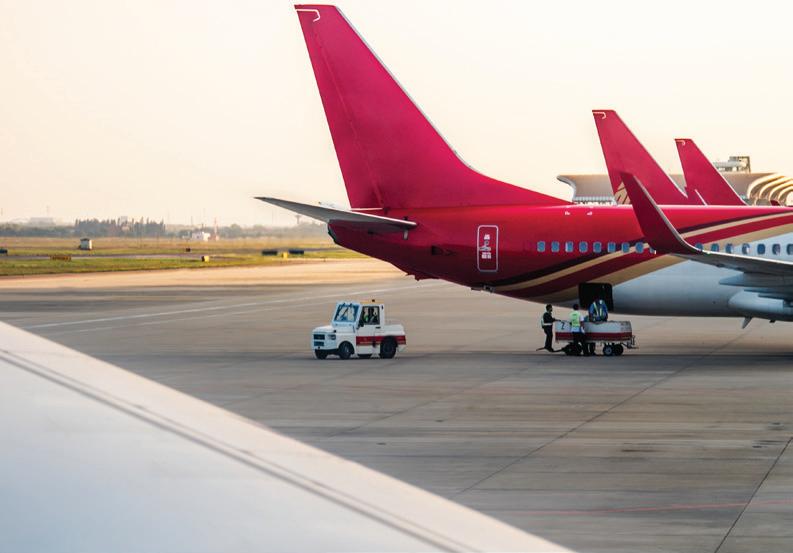
Even before this pandemic hit, aviation faced increasing pressure in the fight against climate change. While other sectors are slowly decarbonising, international aviation is forecast to double passenger numbers by 2037, meaning its share of global emissions may increase tenfold to 22% by 2050.
Most flights are taken by a relatively well-off minority, often for leisure reasons, and of questionable necessity. We might wonder whether it is wise to devote so much of our remaining carbon “allowance” to aviation over sectors like energy or food which –as we are now being reminded – are fundamental to human life.
Regulators at the UN’s ICAO have responded to calls for climate action with their Carbon Offset and Reduction Scheme for International Aviation (CORSIA) scheme. Under this, international aviation can continue to expand, as long as growth above a 2020 baseline is “net-neutral” in terms of emissions.
While critics cite numerous problems with it, the idea is to reduce emissions above the 2020 baseline through a combination of fuel efficiencies, improvements in air traffic management and biofuels. The remaining, huge shortfall in emissions will be covered by large-scale carbon offsetting. Last year, IATA estimated that about 2.5 billion tonnes of offsets will be required by CORSIA between 2021 and 2035.
This plan has been thrown into disarray by the COVID-19 crisis. The emissions baseline for CORSIA was supposed to be calculated based on 2019-20 flight figures. But given that the industry has come to a standstill – demand may take a 38% hit in 2020 – that baseline will be much lower than expected. So once flights resume, emissions growth post-2020 will be much higher than anyone predicted. Airlines will need to purchase many more carbon offset credits, raising operating costs and passing these onto customers.
europeanbusinessmagazine.com 56
Airlines trying to get back on their feet will be hostile to any such additional burdens, and will probably seek methods to recalculate the baseline in their favour. But for environmentalists, this might be an opportunity to strengthen CORSIA, which despite its flaws is the only current framework for tackling aviation emissions globally.
Some still consider CORSIA to be an elaborate sideshow. The real gamechanger for sustainable aviation would be fuel tax reform, which might receive more scrutiny when attention shifts onto how to repay the eye-watering levels of public debt incurred during lockdown.
Since the 1944 Chicago Convention, which gave birth to ICAO and the modern aviation industry, putting VAT on flight tickets and tax on kerosene jet fuel has been effectively illegal. This is the primary reason why flying is relatively cheap compared to other transport modes, and arguably why the industry has under-invested in research into cleaner fuels.
With the most-polluting form of transport enjoying the lowest taxes, this regime has long been questionable in terms of emissions. It may soon become untenable in terms of tax justice, too. In 2018, France’s Gilets Jaunes movement was partly motivated by anger at increased fuel tax
for cars and vans, while air travel continued to benefit from historic tax exemptions. This anger may return when governments inevitably raise taxes to repay their multi-billion-dollar COVID-19-related debts.
Campaigners are already demanding that any airline bailout be linked to tax reform, and there is huge potential there. Leaked EU papers in 2019 suggest that ending kerosene tax exemptions in Europe could raise €27 billion (US$29 billion) in revenues every year. Such sources of revenue may soon become irresistible, and national governments might seek to collect them unilaterally, with or without a coordinated ICAO response.
Tony Blair, the former UK prime minister, once said that no politician facing election would ever vote to end cheap air travel. But – to state the obvious – these are unprecedented times, and public attitudes to flying may well change.
On the demand side, once borders reopen, there could be a short-term travel boom as postponed flights are rebooked and stranded people fly home. But even after an official virus “all-clear”, those considering holidays may think twice before sharing cramped plane cabins with strangers. Business travellers, crucial to airline profits, may find that they’ve got so used to using Zoom, they don’t need always to fly to meetings in person.
As members of the industry admit, by the time passengers return to air travel in significant numbers, the airlines, routes and prices they find may look very different. Governments will face huge industry pressure to safeguard jobs and return to business as usual as soon as possible. But managed properly, this could be the start of a just and sustainable transition for aviation.
The future’s up in the air
All three of us feel the airline industry is at a key turning point. The size and scale of bailouts will vary. Government political will and philosophy, access to capital, and the viability of the industry itself are key factors
that will inform whether a company is worth saving.
Any future must be based on the premise of preserving economic vibrancy while reducing climate risk. But not all governments will factor this in.
Events are moving fast, with Emirates in Dubai starting to test passengers for COVID-19 before boarding. Meanwhile, easyJet is considering social distancing on planes as part of a “de-densification” policy, with fewer passengers and higher prices, albeit across more routes.

Longer term, there are various ways this could play out. All depend upon the duration of the crisis and the confluence of political, legal and economic factors.
It is possible that market structure remains unchanged, with ownership of airlines staying relatively stable, supported by bailouts. Under this business-as-usual scenario, sustainability would incrementally be enhanced through airlines retiring older, less carbon efficient planes and replacing them with better ones. But this scenario is subject to tremendous uncertainty.
Or, sustainability might become more important after the crisis, thanks to increased environmental awareness, demand loss, and new green investment. This would take place at different speeds, with Europe perhaps being more proactive through government incentives and serious emissions targeting. The US would lag behind, but making some advances due to increased stakeholder concerns. In this scenario, there is some scaling down of travel to meet demand, which is reduced. Increased sustainable investment emerges. Due to partial recovery, a new normal emerges.
It is also possible that prolonged, severe shortage of capital and an awareness of the climate crisis could, hypothetically, lead to massive change. But governments’ concern for jobs is likely to crowd out environmental concerns. Political forces on the left and right would have to mend fences and agree that, in a depression-like scenario, a new world is needed, not just a new normal.
europeanbusinessmagazine.com57
CORONAVIRUS:
Why We Should Be Sceptical About The Benevolence Of Billionaires

The coronavirus pandemic has produced a surge in philanthropic giving from some of the world’s wealthiest people. Bill and Melinda Gates, longstanding champions of global health, have committed funds to research the disease and manufacture a vaccine when one becomes available.
Jack Dorsey, co-founder of Twitter, has pledged US$1 billion (£816 million) for “global COVID-19 relief”. Then there are Jack Ma, Li Ka-Shing, George Soros, Giorgio Armani and Jeff Bezos – other examples of billionaires
giving staggering amounts of money to help alleviate the suffering caused by this global crisis. It is not surprising that they have enjoyed widespread praise and acclaim.
Indeed, it is well deserved. But the situation also illustrates a profound imbalance in society.
Master and servant
Consider for a moment whether you would agree to be a slave. Let’s say a kindly benefactor offered you a better standard of living than that
which you currently enjoy, or can realistically aspire to, and credibly promises to treat you very well. The only condition is that they would own you.
Would you accept the offer? My suspicion is that most people would not. Slavery is incontrovertibly wrong, though it is important to understand why. The depictions we see in popular culture often emphasise the cruelty and exploitation. These are terrible, but they are not at the core of what’s wrong with owning another person.
europeanbusinessmagazine.com 58
If they were, then we would not have a problem with the idea of a kindly benefactor. The real problem with slavery lies in its structure as a social relationship, specifically with the distribution of power.
Philosophers like Philip Pettit have spent the past few decades putting forward a conception of liberty that uses slavery as the archetype of “unfreedom”. Unlike Thomas Hobbes or Isaiah Berlin, he doesn’t think of freedom as the absence of interference, but the absence of arbitrary interference.
Pettit argues that the problem with slavery is not that the slave is interfered with in a cruel or exploitative way, but simply that their owner has the capacity to interfere in their choices at will. Well treated slaves may be in an enviable condition compared
with abused slaves, but they still have no control over an owner’s power to interfere. This is what it means to be dominated.
Even in circumstances where an owner is benevolent, the slave will be aware that their choices are based on the master’s tacit permission. And if we are worried about domination, we must worry about billionaire philanthropy.
This becomes acute in times of crisis, because it leaves matters of life and death in the hands of a few powerful individuals who lack any constraints on their power other than their own conscience. Freedom is at risk when the imbalance of wealth and power is so stark. How healthy can it be that so many people in the world are utterly dependent on the generosity of billionaires?
The provision of healthcare for millions of people rests on their goodwill and nothing else. They choose what to give, how to give it and who to give it to. They establish large organisations that have a profound influence on public bodies.
The Gates Foundation, for example, is the largest funder of the World Health Organization after the United States. The foundation’s influence shapes the global health agenda in a way that has been already been described as a “cartel”. Now that Donald Trump appears set to stop American funding for the WHO, the foundation will be even more important. Indeed, it has already committed an additional US$150 million.
Power and influence
This crisis has laid bare the raw power of the state as millions of people have been forced into quarantine and isolation. Even in such times of crisis, we try to minimise that arbitrary power through checks and balances, the rule of law, and democracy. Yet few seem concerned about the power of private organisations. These are organisations that are as powerful as some states, but lack constraints and accountability.
In short, too many people in the world have to rely on the generosity of philanthropists – it’s a stark illustration of the gap between the very rich and the very poor, and the lack of freedom the very poor have.
These are not trivial issues. They will decide who lives and dies.
I do not think that most billionaire philanthropists have bad intentions, quite the opposite in fact, but that’s irrelevant. As I argue in my recent book Global Poverty, Injustice and Resistance, domination is a structural relationship. It is about the distribution of power between human beings. If someone has the power to arbitrarily interfere in your choices, then you are not free. It does not matter if that interference is benevolent or malevolent or indeed if they choose not to interfere. It is about the capacity to arbitrarily interfere and nothing else. You might say that the world is a better place for having billionaire philanthropists in it. That is true, but it is not enough. No one with such power can be above scrutiny.
In A Theory of Justice, the political philosopher John Rawls claimed that moral progress was made when people stopped killing captives in war and enslaved them instead. He is correct – it is better to be a slave than a corpse. But that does not mean anyone should be content with being a slave.
Once the COVID-19 pandemic has passed, we will take time to mourn our dead and celebrate everyone who helped save lives, including people like Bill and Melinda Gates. But then we should ask why so many lives depended upon the munificence of billionaires rather than transparent, accountable and adequately funded public agencies.
We should ask why we don’t have stronger international organisations that are not beholden to wealthy states or persons. We should ask why billionaires are allowed to endow immensely wealthy, tax-protected philanthropic trusts, rather than paying more taxes. We must ask why health was treated as a privilege, not a right.

europeanbusinessmagazine.com59
HOW CHINA IS REVOLUTIONISING E-COMMERCE WITH AN INJECTION OF ENTERTAINMENT

While some sectors of the economy struggle for survival in a sudden, new, harsh reality, e-commerce is again faced with massive demand. With many of us confined to our homes, we have become reliant on online shopping. And while your weekly grocery shop or a book order might seem to have changed little in recent years, there is great innovation in e-commerce.
To find it though, look to China. There, the familiar and dull experience of buying online is becoming a thing of the past. Even before people were forced to spend more time at home, there were two key trends in China radically changing e-commerce, by adding entertainment to the mix: social buying and live commerce.
Social buying
Alibaba is China’s largest ecommerce company by far. Number two is a company called PinDuoDuo (PDD). PDD was only founded in 2015, yet today its valuation of just under US$40 billion makes it worth more than eBay or Twitter.
PDD’s meteoric rise has taken many by surprise. By 2017 it had attracted 200 million active users, in mid-2018 it floated on the Nasdaq at a valuation of US$23.8 billion.
Through PDD, consumers can buy a product immediately at a market price, or they can enjoy lower prices by inviting their contacts through social networks to form a joint purchasing team. The more people sign up, the larger the discount – sometimes as high as 90%.
PinDuoDuo’s business model is similar to US-based Groupon. But Groupon has fallen on hard times as it struggled to convince people to register and download its app. PDD, by contrast, piggybacked on the almost one billion people already using the WeChat messaging app. Its owner Tencent is PDD’s principal shareholder.
Founder Colin Huang Zheng, a former Google engineer, has described PDD’s business model as “a combination of Costco and Disneyland”. PDD’s tag line is “Together, more savings, more fun”. The Chinese word pīn means to group together, a reference to the company’s aim to provide a more social shopping experience. It regularly offers time-limited deals (often under two hours) and competitions.
Manufacturers and factories are also seeing benefits. So-called “Pin factories” have popped up to produce huge quantities of single products for sale on PDD. Due to the scale of their operations, they can afford to offer bulk discounts.
Live commerce: infomercials rebooted
Infomercials are a long way from their heyday in the 1970s. Today, they only exist on fringe cable channels, trying to sell items few people need, typically fronted by D-list celebrities. The format is in desperate need of a makeover – and once again, China has offered it.
Live commerce is the convergence of live steaming and e-commerce, and it has become very popular with Chinese consumers. During China’s Singles’ Day festival last year, Alibaba’s Taobao Live contributed around 20 billion Yuan (US$2.86 billion) gross merchandise volume, or about 7.5% of the company’s total sales. According to Chinese financial services firm
europeanbusinessmagazine.com 60
Everbright Securities, the live commerce market was worth 440 billion Yuan (US$63 billion) in 2019, a 220% increase on 2018. Around 25% of consumers are daily users, while 71% watch a live commerce event at least once a week, according to research from iiMedia. Interestingly, the live commerce sales conversion rate is much higher than traditional content-driven platforms. Recent evidence suggests that the popularity of live commerce in China has increased during the COVID-19 crisis as people stay away from shops and showrooms.

Live commerce in China is celebrity driven, not by traditional stars of film or television but by online celebrities. These include Austin Li “the lipstick king” (22.1 million followers), and
Viya (18.1 million followers). While boasting their own fanbases, from time to time they invite celebrities to join them: in November 2019, Viya welcomed Kim Kardashian-West, who took only a few minutes to sell 15,000 bottles of her KKW-branded perfume.
This approach can also sell high-value items like cars. In one live event featuring Geng Shuai, a kitsch creator dubbed “China’s useless Edison”, the hosts engaged with 4.5 million viewers and sold 1,623 cars in two and a half hours.
Live commerce hosts use limited-time discounts to encourage quick orders, often with a limited number of products available to increase the sense of urgency for shoppers. Prize draws
are also a popular way for hosts to engage with viewers, with some giving away high-value goods to the tune of tens of thousands of dollars. But despite the boom in Asia, live commerce has got nowhere in the West, where livestreaming focuses on gaming via platforms such as Facebook or Twitch. Amazon launched its Amazon Live, but it lacks many interactive features and has so far failed to connect with consumers.
So behind China’s booming e-commerce sector are evolving tools and services that are radically changing online shopping by making it more exciting for the Chinese buyer. Perhaps there is an opportunity now for Western companies to refresh their approach to online shopping.
europeanbusinessmagazine.com61
THE IMPACT OF INTERRUPTION
By Fred Krieger, Founder and CEO, Scoro
In the 1920s, research found uncompleted tasks stay front of mind because we remain tense until a job is done. More recently, analysis of behaviour in high-tech offices has shown workers spend just 11 minutes on any task before being pulled onto something else — typically taking 25 minutes to get back to what they were doing.
Little wonder less than half of U.S. employees are satisfied with their jobs.
While interruption isn’t a modern phenomenon, it has certainly become a major issue in the 21st century workplace. And it’s one that’s having a serious effect on both job satisfaction and, most crucially for businesses, productivity.
If companies want to stem the negative influence of interruption, it’s


time they took a closer look at its impact and started addressing the key causes.
Driving workers to distraction
Technological progress was meant to help us work better and faster, but the dream of enhanced machinedriven efficiency hasn’t quite panned out.
Take, for example, instant messaging. After a review of workplace communications eight years ago, McKinsey estimated smart software could boost business productivity by up to 25%; cutting time spent sorting emails and searching for internal information. The reality, however, has been very different. Instead of saving time, employees are sending 200 messages weekly – via services such as Slack – and are interrupted by an endless stream of notifications. Some ‘power
users’ are firing out 1,000 messages per day.
Of course, company messaging apps aren’t the only problem. Emails, social media platforms, news alerts, TV bulletins, and traditional offline communications — phone calls, meetings, and desk discussions — also have a part to play in diverting attention. But that’s also the key point. While tech has its benefits, the variety and number of different communication methods used are introducing multiple distractions into the working environment and, for individuals, this means constant multitasking and firefighting, preventing the important ability to work proactively rather than reactively. For the majority, it’s difficult enough to concentrate on tasks, let alone finalise them; analysis reveals the mental blocks created by shifting between activities can cost employees as much as 40% of their productive time.
europeanbusinessmagazine.com 62
Becoming a master of time
From an operational perspective, the disruption created by always-on communication tools adds up to not just mass distraction, but also destruction. When employees can hardly begin one project before being derailed by another task or query, business performance inevitably dips: unable to maintain the consistent speed, quality, and value today’s customers expect. That’s not to mention the effect of chaotic working on mental health. In fact, addressing mental wellbeing at work can increase productivity by as much as 12%.
It’s obvious that a change is needed, and the most effective action companies can take is adjusting their perception of time — viewing it as a precious asset that’s equally as valuable as having money in the bank and adopting similar measures to spend it wisely. There is a simple two-step process that can be used to achieve this:

1. Taking back control:
Implementing time management practices isn’t about putting pressure on employees to speed up; it’s about measuring where time goes and identifying how it could be harnessed more effectively. For example, assessment might reveal that a worker is being interrupted by emails or messaging pop-ups that stop them working on an important project. Using this data, senior management can then build processes to ease the pressure and increase focus; such as enabling individuals to allocate set hours for fielding questions and specific ‘do not disturb’ periods for key projects.
Taking the wider view, this approach can also be scaled up to the entire company. With systems that unite time tracking insight from every individual and corner of the organisation, businesses can gain a complete picture of overall activity and
time use. This enables them to better spot issues and opportunities for improvement: slimming down unnecessary meetings, tweaking complicated procedures, and identifying where collaboration could propel creative projects.
2. Planning for success:
The power of a checklist should never be understated. According to research by Harvard Business School, one of the greatest motivators for knowledge workers is not deadlines or fear of reprisals, but a sense of progress. When a day includes tangible steps forward, 76% of employees class it as a good mood day, where they are fulfilled and driven. As a result, planning based on granular time records has serious potential to increase productivity and satisfaction.
By encouraging employees to build — and stick to — a structured time management plan, companies can help them prioritise and avoid distraction pitfalls. With a clear idea of their core goals, individuals will be able to determine what’s truly important, not just urgent. Plus, the added bonus of this checklist-centric method is that it also fuels cumulative happiness; with every tick, individuals get a feeling of achievement that inspires them to keep aiming for more.
It’s easy to mistake high activity for productivity, but there’s a difference between looking busy and getting work done. Businesses that see buzzing phones and Slack channels as signs of energetic progress need to move beyond the noise and take a deeper look. Because when they do, they’ll likely find that interruption is impacting employees from multiple directions and seriously slowing down performance.
Rather than assuming that time is flowing where it should, the modern company needs to know precisely how long every task and distraction takes. Only then can procedures be adjusted to shield employees from distraction, give them the freedom to thrive, and put an end to communication time thieves.
europeanbusinessmagazine.com63
In 2015 the Cameron government struck an unprecedented deal with French and Chinese companies to build a nuclear power station at Hinkley Point in Somerset, south-west England. The deal now looks like the high point in the UK’s embrace of globalisation. Having begun more than a century ago, globalisation has gathered pace in recent decades on the back of everything from freer trade to the reduced power of British trade unions.
Underlying this was the notion of the value chain, the idea that different companies add value to raw materials at each stage in the production
process until they become finished goods. Generally speaking, each stage is more lucrative than the last and, in recent years, the stages have been spread across continents and countries.

So, for example, it’s more lucrative to make steel than to mine the raw ingredients and more lucrative again to use the steel to make vehicle parts. And it’s still more lucrative to sell cars. There is also much value in services located near the top of the chain, such as researching better engines or providing legal advice on supply deals for car dealerships.
The philosophy, adopted by many leading economies in Europe and
Asia, involved leaving “lower” stages to developing economies and concentrating on the more valuable stages instead. Manufacturing in the UK duly declined from almost 30% of the economy in 1979 when Margaret Thatcher came to power to 10% today. The assumption was that so long as we moved up the value chain and remained able to pay for what was available, supply would never be short.
This mindset was rudely disrupted by the nationalist ructions of the Brexit vote and Donald Trump’s election in 2016. And it has been turned on its head by COVID-19. Witness the UK’s struggle in accessing basic medical
europeanbusinessmagazine.com 64
The whole idea of global value chains will be reconsidered after CORONAVIRUS
equipment to deal with the pandemic. Day after day in the press briefing, ministers are on the back foot over testing, personal protective equipment (PPE) and ventilators.
The equipment scramble
The UK lost valuable time early in the outbreak by not placing orders for necessary equipment – but it is the longer-term trends and international responses that really explain the failure. The lack of domestic manufacturing in the UK has meant no first-buyer privileges for the government to leverage. The UK’s health secretary, Matt Hancock, alluded to this when he said the UK did not go into the
crisis with a huge diagnostics industry that could be scaled up.
While Burberry, Royal Mint and RollsRoyce are producing gowns, and Ineos, Diageo and Unilever are making hand-hygiene products, the UK’s capacity for such flexibility is limited relative to Germany or South Korea. As Hancock again conceded, the UK “went into this crisis without a largescale domestic PPE manufacturing industry to draw on” and “several countries have placed export bans on the sale of PPE”.
As countries close their borders and turn production inwards, multinational firms that were part of global supply chains cannot export freely.

China was not authorising mask exports at one stage – and even the output in China of the American conglomerate 3M cannot be exported back to its home country.
This scenario is repeating worldwide. The US invoked the Defense Production Act to force American companies to prioritise US orders, preventing 3M from supplying premium masks to Canada and Latin America. In incidents reminiscent of fiction rather than international trade, the US intercepted a shipment of masks bound for France and medical equipment bound for Germany – “modern piracy”, as the Berlin state interior minister Andreas Geisel called it. Meanwhile, France and Germany have prevented masks and gloves from being shipped to Italy and Spain.
Faith no more
The UK’s strategy of concentrating on R&D and innovation, as well as services in which it is reckoned to have a comparative advantage such as law, finance and advertising, was part of this wider focus on globalisation that was highly successful in peacetime. The shortcomings have certainly been highlighted in 2020. Some economists suggest that the only way out of this impasse is further global cooperation and moving away from the highly destructive nationalism that has taken over international medical equipment markets. Clearly, global cooperation will be essential to avoid regressing into protectionism.
Yet governments are realising that global production carries profound risks in a crisis. The German health minister Jens Spahn has said that his country needs to reduce reliance on international production, while the UK government seems to be realising this too. In future, countries will probably decide on key strategic industries in which they need to be self-sufficient. This may well increase costs for consumers – but they may be willing to pay the price. When the dust settles on COVID-19, our whole approach to global trade looks likely to be reconsidered.
europeanbusinessmagazine.com65
EU is gridlocked over €1 trillion coronavirus fund – here’s a way forward
An EU leaders’ summit has produced no definitive progress on saving Europe’s southern nations from the greatest slump in living memory. There is talk of a recovery fund of at least €1 trillion (£873 billion), now that EU leaders are realising that the €540 billion package announced previously may not be large enough.
Yet north-south divisions blocked further progress, amid big disagreements about how this fund should work. Germany and the “frugal four” of Austria, Netherlands, Sweden and Denmark are insisting that most money should
be distributed via government loans, with a relatively smaller aid fund.
Italy, France and Spain are pushing for a total fund of €1 trillion to €1.5 trillion of grants not loans, arguing their national debts are too high to borrow more. The controversial question of issuing eurobonds to fund these grants was noticeably sidelined, as the southern nations called for funding as soon as possible. Italian premier Giuseppe Conte calls it a “political emergency”.
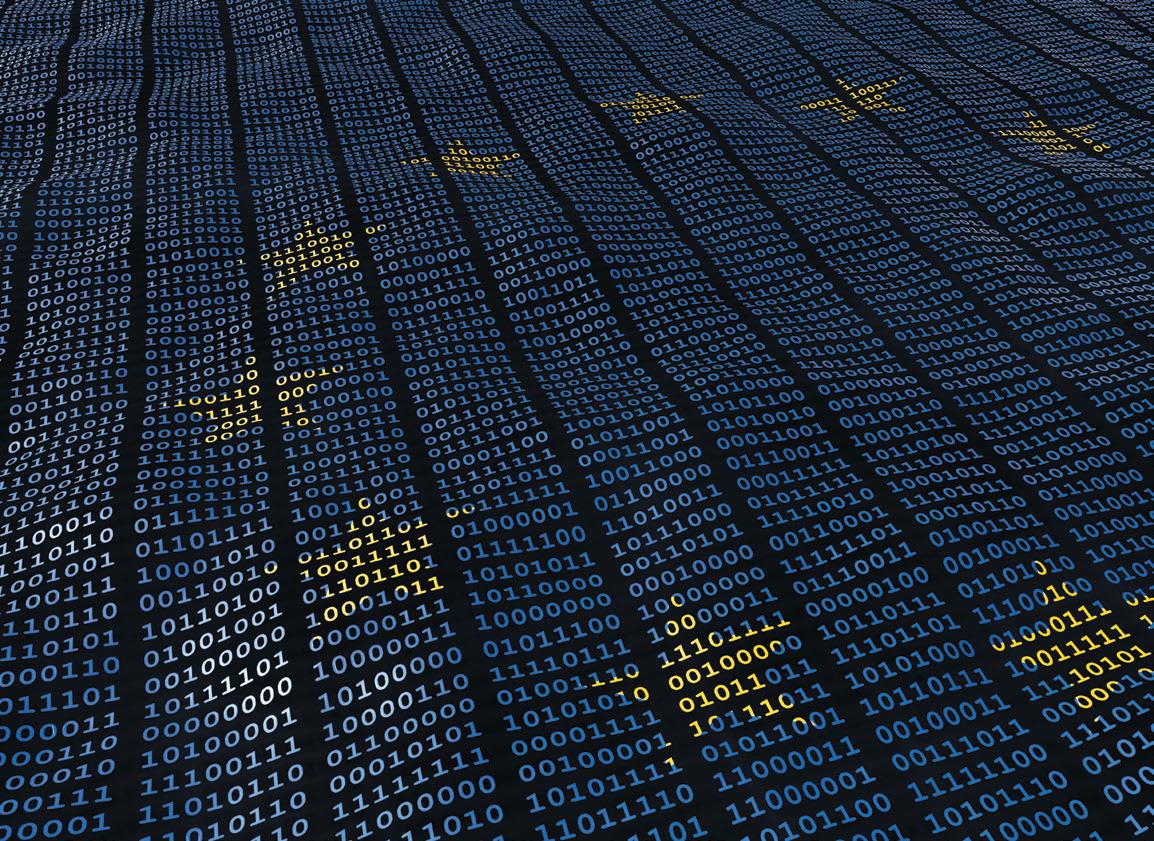
All that EU Commission President Ursula von der Leyen would say after the meeting was that the fund would
need a “sound balance” between loans and grants. With important decisions postponed until May, the struggling countries must hang on. In response, the euro fell against the dollar.
Structural difficulties
At root of these disagreements lies the EU’s incomplete political and economic architecture, which becomes apparent in every crisis. With a weak political centre in Brussels, any of the 27 members can veto a decision indefinitely. For the 19 in the
europeanbusinessmagazine.com 66
eurozone, there is also the euro straitjacket.
Without flexible exchange rates, coordinated government economic policies, or a strong mechanism to reallocate investments to ailing members, the common market directs economic growth to its most productive regions and leaves the weaker ones behind. This was the true cause of the Greek crisis, and it’s an economic time bomb for Italy, Spain and Portugal. Add long historical disputes and wide cultural differences, and the EU looks particularly ill-equipped for a pandemic.
Tourism is a flashpoint. Europe attracts over 50% of all global tourism, and the south depends on it the most. Travel and tourism is 13% of Italy’s GDP, 14.3% of Spain’s and 20.8% of Greece’s, much more than the 8.5% average of the “frugal four”. And it doesn’t fall evenly across the year,
promising a greater shock if holidaymakers stay away this summer. This is a strong motivation behind southern countries considering lifting lockdown restrictions , knowing it could re-accelerate infection rates.
Of course, similar principles apply to every economic activity that needs people to be physically present. That would include shipping, logistics and agriculture. For example, agriculture contributes 2% to 4% of GDP to southern EU countries, which is twice that of northern members. These governments are basically stuck between the hammer and the anvil –hence the need for urgent assistance. The good news is that the economic damage from lockdown should be temporary, provided EU leaders prevent healthy businesses going bankrupt. The first €540 billion package and the European Central Bank’s €750 billion commitment to shore up members’ sovereign bonds and other financial securities were a good start, but clearly more is necessary.
Behind the scenes, the pressing question remains where to find the necessary money quickly enough. The answer being proposed by nine EU members, including Italy, Spain and France, was to issue common EU debt for the first time to allow weaker countries to keep borrowing at low interest rates.
This could take the form of eurobonds, setting a permanent precedent for centralised borrowing in which all EU members guarantee the debt. It could be a so-called coronabond, where the debt could only be used to tackle the pandemic. Or, as suggested by billionaire George Soros, it could be an EU perpetual bond, which would exist permanently and the principal would never need repaid.

Europe’s northern nations strongly oppose all this. Some argue that it requires EU treaty changes that would be too time consuming, but the real issue is having to underwrite debts racked up by the south. The latest leaders’ meeting suggests this is a no-go for the time being, which is why the debate has shifted to grants vs loans.
How to spend it
Assuming a breakthrough that makes funding available by the second half of this year, members must also focus on how funds should be directed. A good option would be a productivity investment plan for the whole EU, in which funding would be geared towards making countries more productive. Weak productivity has been a bugbear for southern European nations for years, so everyone benefits from improving this.
Funds could potentially also be geared to helping northern countries: Angela Merkel has said that even in mighty Germany, infrastructure, education, green energy and technology are lagging.
Even then, without common EU borrowing, having to contribute to a recovery fund risks putting too heavy a burden on the south. Instead, the EU could raise funds by clamping down on tax havens now that the UK veto is not an obstacle. Any investment in this – beefing up the resources of tax authorities, say – will probably produce multiple returns. Curbing such inequality would also help legitimise the EU to many citizens who feel it doesn’t work for them.
Yet arguably the most important issue is the need for a united EU stance just now. This could take the form of common rules around opening up travelling and fully resuming economic activity. Member states should also agree on a pan-EU healthcare system protection, since without it southern nations could cut their commitments to care for citizens from other EU states to protect their ailing economies. This would force other members to follow suit.
Through crises come opportunities –remember it took a catastrophic war to unite Europe. The EU can be a platform for policies which will safeguard its citizens’ health, reduce inequality, promote education and promote the environment. More than ever, Europeans must act decisively to bolster the union.
europeanbusinessmagazine.com67
Hiring from Home

















intellectual property or post-termination obligations separately to their contracts of employment should be particularly careful to ensure that these are at least executed at the same time. At a later date, these documents may need to be executed as deeds in order to be enforceable and, given the difficulties which candidates may experience in finding witnesses to any such deeds, this increases the likelihood that crucial obligations will be forgotten altogether.
Many businesses across the UK are now well-established in working almost entirely remotely from home. Whilst some sectors are struggling, the unprecedented circumstances have given rise to high demand in others. The same remote-working processes can be used to recruit new staff as the extended lockdown now means much recruitment will inevitably have to be undertaken remotely. Many businesses with overseas offices are already well-versed in hiring remotely, whereas this will be a relatively new phenomenon for many UK focused businesses. In this context, the urgency of the current global situation requires certain precautions to be taken. Daniel Parker, Solicitor at Winckworth Sherwood reports!
As in many business decisions, careful due diligence is vital, as the reliance on technology and corresponding at a distance naturally gives rise to opportunities for misunderstanding and, at worst, misrepresentation. Background checks through thirdparty providers may prove useful; however, employers should, as ever, inform candidates of how their data will be used. Given that interviews
will be conducted remotely, there may be a greater temptation to rely on candidates’ online presence and their social media profiles, but even in these exceptional circumstances, the risk of unconscious bias and discrimination must not be forgotten.






























On the other hand, it is essential that employers continue to check prospective employees’ rights to work in the UK as there remain strict (and potentially criminal) sanctions for failing to do so. However, the Government has recognised that the usual process of obtaining original documents is often impossible in the current circumstances, and new guidance has been issued temporarily permitting checks of scanned documents at a distance. Consequently, keeping careful records that these checks have been carried out is as important as ever, if not more so.

Once the appropriate candidate has been found, it is entirely possible to negotiate a package by telephone or over a video call, though these should always be reflected in written, detailed documents which meet the statutory requirements. Employers who document confidentiality,
Despite careful planning and negotiation, the unpredictable wider conditions mean that rapid decisions may need to be made about the sustainability of new hires against changing business needs. Unfortunately, unless guidance changes, future recruits will be unable to benefit from the Coronavirus Job Retention Scheme and cannot be placed on furlough to respond to any downturn. For employers, the risks associated with dismissing recently-hired employees remain relatively limited, often simply to contractual notice periods, given that employees must accrue two years’ continuous service in order to obtain unfair dismissal protections. The primary risk, from the very outset of recruitment, is claims for discrimination, but this can be minimised with fair and rigorous processes.
In any case, as with existing employees, communication is key. If a role is short-term or uncertain in duration, that expectation should be made clear as a matter of fairness and certainly before any successful candidate secures a position, joins a team and gains access to confidential information.
Good communication is also critical when any new recruit starts their role. Managers should be prepared to adopt a more interventionist and nurturing style than may otherwise be their normal approach and allowances should be made for reduced productivity, not least given the reliance on technology and the fact that the employee may never previously have worked from home.
One area we have found that also requires attention for home-working

















europeanbusinessmagazine.com 68
is health and safety, both for new and existing employees. If the new employee’s role involves working from home and using a computer monitor or screen for prolonged periods, employers should ensure that employees are aware that they need to take proper breaks and a workstation assessment should ideally be undertaken. That is inevitably more challenging during the present pandemic but the key obligations in the Health & Safety at Work Act 1974 require employers to do only what is ‘reasonably practicable’ to ensure a safe working environment. Moreover, the Act recognises that, ultimately, employees’ homes are not generally under employers’ control.
Furthermore, employers should ensure that working from home arrangements do not disadvantage disabled candidates and that reasonable adjustments are made to enable working from home where possible.

Disabled employees’ needs may be harder to perceive when working alone at home and new joiners may feel particularly reticent to make requests. Employers should therefore take a proactive approach, as small steps, such as reimbursing reasonable equipment costs or temporarily renting additional resources, can not only mitigate the legal risks but also enhance productivity and morale.
While the coming weeks and months remain uncertain, it is also worth giving thought now to a plan to integrate new employees once the restrictions have eventually been lifted. New hires may never have met their colleagues and will not necessarily be familiar with either the systems or the organisation’s premises. On returning to the office, appropriate induction processes should be followed, including ensuring that recent joiners have had sight of all relevant policies, proper systems
training and opportunities to meet the colleagues and line management. All employees will need to be clear on whether processes implemented during lockdown represent the ‘new normal’, and especially so for new recruits. Just as importantly, and however well-integrated they may appear, a conscious effort should be made to welcome new recruits and acknowledge the inevitable changes of having that ‘first day feeling’ once again. The opportunity to meet a candidate is still the ideal way forward and provides valuable insight before entering into a potentially long-term relationship of trust and confidence. However, with some forethought as to the challenges that lie ahead, at least whilst restrictions remain in place and then are gradually lifted, there is no reason why employers cannot hire remotely to keep pace with the rapidly-changing situation and the evolving needs of their businesses.
europeanbusinessmagazine.com69
Can crypto help us through the coronavirus crisis?
By Bundeep Singh Rangar
You would be forgiven for thinking cryptocurrencies would die a death during a global pandemic. Many see them as a niceto-haves in a time of abundance –when citizens don’t need the state and are keen to capitalise on intangible ways to build value. In the face of the Covid-19 crisis, the default is that we need the state, from service provision to funding to managing the money supply, to come to our aid and remain in control.
But is that really where we’re heading?
We tend to overestimate the effects of technology and innovation in the short term and underestimate it in the long term. (Unfortunately, not my own pearl of wisdom but that of futurist Roy Amara.) Today, with stock markets and the real economy in disarray, it feels like the value of bitcoin and other cryptocurrencies just starting to be understood. This is not

something that will happen overnight, but bitcoin was born out of the last financial crisis; it is likely that it will help us out of this one.
Validating the white paper
The thesis behind crypto is, you could say, very (pre-Covid) 2020. Create a decentralised, non-political, non-geographic based currency that is both digitally-encrypted and has a limited supply, as well as having the full
europeanbusinessmagazine.com 70
feature set of a currency. The usefulness of these attributes has been advancing for years.
And while the need for redistribution of wealth accelerates, with democracies around the world turning to universal basic income and cash handouts, the limits of the fiat-based global financial system are thrown into sharp relief. Is crypto finally coming of age?

People have been waiting for a watershed event like this. As cashless
societies get bigger and fiat currencies become increasingly manipulated, stimulus packages will weigh heavier and heavier on debt-to-GDP ratios. This is exactly what happened in the last crisis, where we saw 120% debt-to-GDP ratios. Debt servicing will be costlier, while the poorest in societies start to feel the burn of inflation, and everyone feels the burden of rising taxation and a manipulated money supply. The relative value of those currencies will drop. The former governor of the Bank of England Mervyn King (now Lord Lothbury) believes that the coming crisis caused by the coronavirus in the real economy will be worse than the financial crisis of 2008. He told the BBC last month that: “in the financial crisis, we were dealing with a relatively small number of financial institutions. We knew broadly what we had to do. In this case, the situation is extremely uncertain.”
For anyone not around at the time, take my word for it – it was pretty bad.
An unlikely safe haven
From a central bank point of view, the coronavirus crisis is different to almost any standard economic shock in that it necessitated both supply and demand intervention.
And while global markets reel, bitcoin, and other cryptocurrencies, have remained largely unaffected. Bitcoin’s most disruptive benefits have moved front and centre: scarcity and liquidity, in a world of money-printing and global financial strain.
Clearly, despite some sell-offs, for many, bitcoin currently represents a hedge in the face of huge stock market risk. And with institutional flows coming in, the foundation is well and truly being laid for it to be traded with trust and confidence. The super-speculation, which feels more like the dotcom era and subsequent crash, is waning. Institutions and other large financial organisations are now more engaged than ever, with the likes of Fidelity, Square, and Revolut all facilitating trading. And India has finally lifted its crypto trading ban.
CoinCorner, a bitcoin exchange in the UK, says it has seen a growing number of people entering the bitcoin market in 2020, perhaps also in the run-up to the anticipated bitcoin halving in May. If you don’t know about halving, there is a good explainer here. CoinCorner says it saw an increase in the number of new customers every month since the beginning of 2020 with February up 5% compared to January, and March was up 17.6% compared to February.
We could, of course, see new innovations in the crypto space come out of this crisis. But certainly the euphoric frenzy (based on not very much) that we saw in bitcoin’s earlier days has come to an end, and now, investors on both the institutional and retail side are interested. The start of something more legitimate for financial asset allocation has arrived. And an asset immune, even somewhat, to the volatility and uncertainty of the present time, could be a saving grace to millions.

europeanbusinessmagazine.com71
National Defence in the Coronavirus Era: GERM WARFARE AND DIGITAL SECURITY
By Bundeep Singh Rangar
There is much we still don’t know about coronavirus. But as the pandemic has spread around the world, one thing has become clear: the huge variance in readiness levels. Some of the most advanced economies in the world, the UK and US notable among them, have been woefully ill-prepared for a virus whose death toll now exceeds 29,000 in the former and 70,000 in the latter. Almost 30% of all deaths so far from Covid-19 have been in these two countries alone. It is too early to draw definitive conclusions about the virus. But it is not too early to be assessing our readiness for both this crisis and others of similar magnitude that may lie ahead. Among many other things, this pandemic has been a wake-up call about disaster planning for some – though clearly not all – major nations. We cannot afford to be caught off guard again so acutely.
A spending paradigm from the twentieth century
In the first instance, the focus has fallen on health services. With an apparent global shortage of key medical equipment and a race to construct emergency hospital facilities, there can be no doubt that there are gaping holes in health infrastructure and supply chains. In our global world, as networks and travel time shrink, complexity has grown. The global paradigm is a fragile one. For healthcare, it means long and convoluted supply chains, efficient but inflexible centralised services (how easy is it to add
hospital beds?), and, in many democracies, a monopolised, centralised funding system.
It is admirable how, in the face of this unprecedented curveball, private manufacturers have stepped in to re-tool their production lines and produce emergency medical equipment, supporting healthcare systems with the necessary capacity for this time of crisis. This should put the spotlight on how effectively the UK and US governments are funding healthcare. It may be no coincidence that both are among the biggest spenders on defence in the world. The US budget is famously larger than those of the next eleven combined, while only five countries spend more on their military than the UK.
Research suggests that such spending does not happen in a vacuum, but can actively detract from other critical areas such as health: the ‘crowding out’ theory. One study, looking at data from 197 countries, has found that a 1% increase in defence expenditure on average leads to a 0.62% reduction in spending on health. To take just one example, where the UK spends 1.8% of its GDP on the military compared to 1.2% in Germany, it spends only £2,989 annually per head on healthcare, against Germany’s £4,432.1 Funding is just one piece of the puzzle. Other key advantages in responding to coronavirus have been speed and localised systems. Taiwan and South Korea got ahead of the curve
1 https://www.ons.gov.uk/peoplepopulationandcommunity/healthandsocialcare/ healthcaresystem/articles/howdoesukhealthcarespendingcomparewithothercountries/2019-08-29
by responding rapidly to the emerging threat. Leveraging their experience from SARS, within days they had activated response plans and sent scientists to Wuhan to study the virus. While Germany has been able to lean on its strong local network of hospitals and testing labs to manage its response, with considerably more success than its near neighbours. Well-funded, swift-acting and locally-led systems have proven the most resilient in the face of Covid-19. And the same will be true of the next crisis. We don’t know where, when or in what form this will emerge, but we can make educated guesses. Not for nothing have the many largely unheeded warnings about pandemics, made by experts both prominent and obscure over the last decade, been circulating over recent weeks. If we want to avoid a repeat, then our long-term response to coronavirus must go beyond healthcare.
The warning to our digital world
An obvious area of concern and priority is cybersecurity. If our dependence on digital infrastructure was not already obvious, then it has become so during the lockdowns necessitated by coronavirus. Those parts of the economy that remain open do so only because of digital connectivity. If that were to face a widespread attack, coming in the middle of a health crisis as we are currently seeing, economies

europeanbusinessmagazine.com 72
and societies would face total paralysis. The hit would be unimaginable. Yet in the face of such a threat, the UK government’s National Cyber Security Strategy, to take one example, has been funded to the tune of just £1.9bn for the five-year period ending in 2021: 3.5% of what it spends on the military every year. A report last year by the Public Accounts Committee found that this programme is on track to meet only one of its 12 objectives. It is hard to have much confidence that the equivalents of PPE and hospital capacity for a cyberattack – off-grid digital infrastructure and quarantined IT systems – are in place to help us weather a virus that is as digitally deadly as Covid19 has been for people. Should such an attack hit, we would likely see a repeat of the last-minute scrambling that has defined the US and UK response to coronavirus. It would be another case of action being taken only after the fact.


In the months ahead, as we hope coronavirus cases decline from their peak and economic activity begins to resume, the focus will switch from firefighting the crisis to mitigating it. The recriminations will be severe.
There will be much talk of lessons learned and ‘never again’. There will be focus on long-term changes in the shape of our economy and society. The biggest risk is that not enough changes. That hospitals emerge better equipped, and other critical areas of society remain deeply vulnerable. That the government budget continues to be spent with the same priorities as before, rather than
acknowledging that the true nature of national defence has changed: the threats to humanity are no longer physically manifest, or visible. We cannot face the next international emergency as haphazardly as we have this one. If the true lessons of disaster readiness are not learned from this pandemic, then it will have been the one thing worse than a crisis: a crisis wasted.
europeanbusinessmagazine.com73
Solutions: In a Time of Crisis
The COVID-19 Coronovairus is affecting global supply chains, customers, employees, family offices and finance, and businesses need a plan to tackle and survive the inevitable disruption. Family offices, like most firms, are facing some exceptionally challenging times. In the current climate, formulating and executing guidelines to save companies and protect wealth is almost impossible, but proven strategies and expert knowledge can be the difference between success and failure.
The $502bn space where investments are made to yield environmental or social impacts while providing a competitive financial return has become progressively more appealing to families of substantial wealth since the Rockefeller Foundation first conceived the term in 2008. As global wealth continues to rise, so too does the number of new millionaires, and
at present the question for every multi- family office has become one of recovery.
Money is no longer invested exclusively to make more money, but also to restore a more resilient, resolute and robust world. The way in which family offices choose to navigate the increased risk, uncertainty and unpredictability now, will have lasting repercussions in the future. How should family offices rebuild shortterm losses and communicate resiliency to their customers, employees, vendors and communities?
Winner of the European Business Magazine “Strategist of the Year 2020”award, Romain Gerardin-Fresse, founder of GFK CONSEILS-JURIDIS, brings significant expertise from the wealth management industry, and is a personal advisor to several successful individuals. The former political advisor, considered one of the top

10 legal experts in Europe, wanted to head a firm that would solve the legal problems of its clients, treating both the cause and the consequence.
Employing a top strategist has never been more important, and GFK CONSEILS-JURIDIS offers proven expertise for situations that require deep analysis and detailed guidance on suitable strategies. The company’s USP rests both on the network of specialists they keep and their global approach. The availability of an extensive professional network enables high-quality multi-family offices to deliver comprehensive wealth management, and it is also instrumental in being able to provide a broad range of support services. The impact of the pandemic on global wealth management remains unknown, but the subsequent strategies that family offices employ will be critical to the future sustainability of the business.
GFK
europeanbusinessmagazine.com 74
CONSEILS-JURIDIS provides innovative solutions to clients, allowing them to address and remedy problems quickly and with confidence.
GFK CONSEILS-JURIDIS has a proven track record and experienced notable success since its inception in 2017, managing approximately €60m on average per deal. Located on the Promenade des Anglais in Nice, GFK CONSEILS-JURIDIS has a clientele of individuals, professionals and institutions such as hotel chains, real estate development groups and members of governments and royal families under its remit. Public figures or business leaders can call on the firm to resolve a crisis situation. The company is exceedingly service oriented, anticipating issues and providing timely, practical solutions.
GFK CONSEILS-JURIDIS is at the forefront of the crisis management and analytical expertise sector, accompanying clients from consultation to resolution, resolving litigation while ensuring the protection of the client. The company has won many highly sought after awards, including the “Best Luxury Multi-Family Office and Best Business Law Firm in France”, placed above Edmond de Rothschild and UBS La Maison de Gestion. It has also won the coveted "Luxury and Crisis Management Firm of the Year 2019" by European Business Magazine by over 40,000 votes. Likewise, its founder Romain Gerardin-Fresse, is no stranger to awards. Previous honours include winning the “Banking and Finance Lawyer of the Year” title by Business Worldwide Magazine and he also received a nomination for “Man of the Year 2020”. Forbes Magazine and celebrities yearbook PeoplePill described him as “one of the top 10 legal experts in Europe” and he is a regular contributor to the World Economic Forum Agenda.
According to the 2019 UBS Campden Wealth Global Family Office Report, and this was before any inclination of a pandemic, more than 50% of the family offices surveyed were preparing for a recession. This is even more pressing now as 27% of families questioned said they directly invested in health care and social assistance. There is also prevalent investor concern that

we are heading for a downturn to rival the Great Depression or the kind of dip that followed the global financial crisis. Rather than wait for the inevitable disruption, however big, there are pre-emptive next steps to take for recession preparedness, and crisis management companies like GFK CONSEILS-JURIDIS, can guide and advise going forward.
The enormous business continuity challenges posed by the pandemic are currently at the forefront of business leaders minds, and while most countries and companies are still very much in the crisis management phase, it is crucial to start thinking about how businesses can set themselves up on the road to survival, and more importantly growth, as we move into the next phase. While the wellbeing of staff, business continuity and money management is paramount, without a proven therapy there is still no exit from the COVID19 coronavirus pandemic. Even when a vaccine becomes available the economic impact will be long lasting. Family offices must review whether
their strategies remain fit for purpose, given the increased focus on organisational agility, technological advances and evolving expectations. Undoubtedly, the crisis has changed things irrevocably. We won’t return to the old ways of living, working or doing business once the crisis has passed. Tomorrow will be very different which is why choosing the correct strategies and strategists today will have a huge bearing on the future. Finding a reputable handler for sensitive and confidential matters is not an easy ask, but GFK CONSEILS-JURIDIS, a member of the movement for a compassionate economy, transferring 5% of its net profit to humanitarian associations, is a number one choice.
GFK CONSEILS-JURIDIS, represented on five continents and operating under the principles of expertise, discretion, efficiency and reliability, is a world-renowned trusted personal and business partner, and will help family offices navigate whatever the future will bring.
https://www.gfkconseils-juridis.fr/

europeanbusinessmagazine.com75
HONEY CORN and SPIRIANT Make a Beeline for Sustainability
Honey Corn launches an exclusive skincare kit in partnership with Spiriant the renowned airline amenities provider. This mutual clean beauty initiative is driven by Honey Corn as a luxury organic skincare specialist with sustainability at the core of its company values.


Led by Honey Corn’s pioneering ‘Bee a Keeper’ campaign, and supported by Spirant’s commitment to broker eco-friendly partnerships to best in class airlines.

Ayesha Ibrahim - Honey Corn’s CEO and Founder was also voted as Uk’s leading innovative entrepreneur by European Business Magazine 2020 for the incredible work that has been put into the company to date and so there is no doubt that Honey Corn will carry on to form great partnerships.

Bee Innovative
Passengers look for more ways in which they can off-set their carbon footprint, not always easy when you are travelling.
Honey Corn provides a unique opportunity not only to achieve a radiant in flight complexion but to help save the Bee population via the ‘Bee a Keeper’ campaign.
The innovative campaign aims to boost the Bee population whilst supporting local aviaries by investing in an ever-growing network of beekeepers across the developing world.
Bee Bold



A luxury gender neutral beauty brand born out of the desire to create naturally pure, artisan skincare. Honey Corn was founded in London’s Notting Hill by luxury brand consultant, Ayesha Ibrahim.
Our products are made with Honey; Known as liquid gold because of it’s curative properties, our skincare range promotes and maintains healthy skin.
High quality plant based ingredients ethically sourced, ring true to our philosophy which is always - Botanic, Organic, Natural.
Bee Sustainable
Consumers today aspire to a positive lifestyle, which doesn’t stop when they board a flight. Honey Corn demonstrates a truly meaningful commitment towards sustainability and increasing the bee population, which perfectly complimented a Spiriant collaboration, launching
europeanbusinessmagazine.com 76
-
beekeep
Europe can be described as an enticing FinTech nerve centre. In particular, a progressive regulatory environment has made Europe an attractive ecosystem to be part of. KPMG has highlighted how the regulatory landscape is shifting. Equally intriguing is McKinsey's look at agile businesses.
Today, legacy banking systems are said to be four decades behind the times. EY asserts that banks face major competition from rivals who are actively hiring FinTechs to discover ways to leap ahead.
It is fascinating to consider what is coming down the line. Within two years, e-wallets are predicted to handle close to 50% of e-commerce transactions and over 25% of the point-of-sale (POS) market. Innovation surrounds us in the sector with eCOMM Merchant Solutions launching Ireland's first instantaneous merchant settlements, a major step forward in the FinTech-friendly country. Mobile is rated as holding the keys to the future of payments. It was heartening that Deloitte said 91% of the Irish carry a smartphone. Amazingly, the Capgemini World Payments Report 2018 found that payment apps and e-wallets accounted for 29.7 billion cash-free transactions. In the midst of all the FinTech noise, a true story of success emerges of two payments giants that recently joined forces - PFS and EML. A combined
COVID’s Cash Handling Dilemma
Sees PFS EML Step into
force in Europe, The Middle East, North America and Australia, the buck truly stops there.
Lee Britton, CCO said it best, "PFS EML is the FinTechs' FinTech, but unlike most FinTechs, we are profitable, with blistering growth - even now in a COVID world. How many US, Australian, UK or Irish FinTechs can say the same? Payments Issuer, Processor and Programme Manager, not all talk - truly the home of one-stop-shop." There were several reasons the acquisition of Prepaid Financial Services made sense.

• Achieving dual regulation in the United Kingdom and Ireland to operate across Europe in this post-Brexit world.
• An end-to-end technology suite operating in a complex environment. Issuing, processing, programme management, customer services and technology provider all achieved in-house.
• Taking the lead in multi-currency. One of the few providers of 18 currencies on one payment card with a choice of 23 currencies overall.
• A consumer credit license in the UK that they are excited to have attained from the regulator.

• Agility due to a technology advantage and the size of the company at 200 employees.
the Spotlight
• Diverse FinTech payment offerings. IBAN and current account solutions allowing SEPA credit transfers, direct debits, faster payments and standing orders.

• A flexible business model means responding faster than larger operators in the space.
Looking forward, an almost entirely cash-free world is closer than we can imagine. There is no doubt that FinTech will also embrace a bionic future with a perfect synergy between people and technology.
Explore the future of smart payments today at https://www.emlpayments. com/
europeanbusinessmagazine.com77
Berkshire Hathaway’s Clipped Wings Could Spell Danger For European Airlines
The legendary Warren Buffet has announced that his Berkshire Hathaway investment group have sold their shares in American airline companies due to the Covid19 crisis and his reasons could spell even worse news for Europe. Benjamin Szwediuk reports.
Warren Buffet is almost certainly the most famous living American investor. His “value investing” strategylearned from business partner Charlie Munger- focuses on safe, long-term gains, by acquiring stocks in quality companies, with proven business models guaranteed to give stable growth and returns in the long-term, has made him one of the richest men alive and a guru to many stock-market investors.
Buffett is also famous for his faith in the American economy. Long-term, he believes, the American stock-market will always grow, and sensible investors will always make money. One of the results of this is that relatively recently, despite previous scepticism, he has been particularly bullish about the Airline industry, and America’s big airlines as sound long-term investments.
His reasoning is simple. Air travel expands with economic growth. It suggests greater commerce, more trade in goods over more of the world, while greater disposable incomes for more people affords them more opportunities for greater travel for purposes of recreation. The barriers to entry in the industry are necessarily great due to start-up costs and regulation, ergo, he reasons, the larger players in the
aviation game are unlikely to be easily usurped by competitors, and should enjoy the bulk of gains afforded by growth in the wider economy. This famous bullishness- and the logic which underpins it- unravelled in spectacular fashion last week at the Berkshire Hathaway 2020 shareholder meeting. Usually held in a packed indoor venue, the 89 yearold Buffett addressed shareholders and journalists via online video-conference due to the travel-restrictions brought about by the coronavirus pandemic. In a four hour presentation he announced, despite his ever-optimistic long-term view that the American economy would bounce back eventually, he was dumping all his positions in the four big US airlines at a substantial loss. Had the auditorium been packed as is the custom at the BH annual meeting this announcement would surely have drawn gasps as Buffett so resoundly dropped a fundamentally long held position, apologising to investors for his folly into the bargain. So what caused such an abrupt turnaround?
Put simply, Covid-19. No amount of his trademark macroeconomic optimism could, in his view, obviate his analysis that the pandemic has caused massive damage to the American airline industry in the short to medium term, with any gains in the long term uncertain. Buffett anticipated the four major American airlines would borrow over $10bn each in private and government backed loans, which would come on top of
existing debt and what he perceived as over-capacity. In addition, even in a fairly optimistic economic scenario of a post-Coronavirus recovery, he doesn’t see air travel returning to pre-pandemic levels for at least three years.
A stark analysis. One which, quite naturally, will have investors fleeing American airline stocks, and possiblylike Berkshire Hathaway- establishing substantial cash positions until the stock market and the broader economy approaches something like stability as the Covid-19 pandemic plays itself out around the world. But what does this mean for the industry’s counterparts across the Atlantic?
At a glance the fundamentals are even more grim and nebulous. Like the USA, The EU and UK have suffered a massive drop in demand for air travel in both cargo and people, and many airlines are openly flirting with the possibility of outright collapse. Both Ireland’s Ryanair and the UK’s Virgin have called for government assistance which has not been forthcoming with Virgin- partially owned by Delta Airlines- laying off a massive 3000 staff shortly after Buffett’s announcement to investors.
In the EU the situation is, if anything, even more fraught as nations, bureaucracies, and central banks squabble over loans, taxes and bailouts, particularly as they relate to the myriad of regulation within the single-market, with the fallout more likely to take decades rather than years. The great competitive disadvantage Europe will suffer relative to the United States, however, are its climate commitments.
Whereas in America, the billions in bailouts are increasingly subject to undertakings regarding the retention of employees and not closing certain routes, the EU has all this to contend with in addition to demand from politician’s across the block to reduce carbon emissions.
When Donald Trump controversially withdrew from the UN Paris Agreement on climate in 2017 he drew widespread criticism at home and abroad, but with the economic devastation Covid-19 has wrought on the
europeanbusinessmagazine.com 78
aviation industry that chorus of disapproval- domestically at least- is likely to fade into the background during an election year whereas, in Europe, political heavy-hitters like Merkel and Macron have been quick to tie
any bailouts to ambitious goals on reducing CO2 which may inherently be beyond the capabilities of the aviation industry, especially in addition to their current woes.
It seems that, for the immediate future, Buffett’s wisdom should be heeded. It could be several years before US Airlines are a ‘buy’. In Europe that ‘when’ could very well be never.
europeanbusinessmagazine.com79
Why London's Position As A Fintech Hub Is Secure
 By Katie Fisher
By Katie Fisher
Across Europe, the UK currently dominates as the top destination for fintech investment. The capital boasts over 1,000 fintech headquarters, including Monzo, TransferWise, Oak North, Checkout.com, Funding Circle, Sumup, World Remit, WorldPay and Finastra - the list is endless. London is at the forefront of disruptive finance innovations, supported by regional tech hubs such as Manchester, Bristol, Belfast, Cambridge and Edinburgh. Katie Price reports.
Some may claim that the likes of San Francisco, Singapore or Zurich have overtaken the UK capital's fintech scene. But these fierce rivals lag behind in terms of direct investment, nurturing environment and history of financial services. London's fintech hub is an ecosystem alive with tech cross-pollination and partnerships. With disruptive emerging startups working nextdoor to tech-giants like Google, the opportunity for business association and knowledge-sharing is second to none. There is no denying that London continues to be a global fintech
incubator rife with investment, innovation and growth.
The COVID-19 pandemic has caused chaos across the globe but provided a window of opportunity for fintech companies. Could the coronavirus affirm London's position as a global fintech hub?
Financial veteran Anne Boden certainly seems to think so. The Starling CEO states "The biggest challengers to London are Berlin and Paris, but I don't think they have enough fintech-traction to take the lead away from London at the moment". Boden also points towards the 2008 financial
europeanbusinessmagazine.com 80
crisis in having a role in creating the diverse and intensely competitive fintech market we've come to know. She believes the coronavirus will not hinder this position but rather "help London make the most of its lead".
The resilience of the capital's tech scene is undeniable. Born out of the ashes of the financial crisis, it has gone from strength to strength, and Brexit was not going to halt this. Atomico's report showed the industry attracted over £9 billion in 2019, compared to the £5.2 billion after the referendum. While challenges continue to arise, there is no slowing the
fast-developing sector and coronavirus was not going to be the exception. Instead, the crisis is sure to affirm London's position on the fintech ladder.

The recent economic upheaval has also brought about predictions of an accelerated end to cash and bank branches. Social trends have been altered in an unprecedented way, perhaps leading to the ultimate demise of physical cash. Quarantine and social distancing are having irreversible effects on consumer habits. With the UK Government actively encouraging online retail, E-commerce is soon to make up 40% of all retail sales, and the use of digital payments has spiked. Research from ATM network provider Link UK shows that there will be a long-lasting impact on the use of cash in the UK. 72% of people say that the coronavirus will affect their future use of cash, with 44% of consumers expecting to increase their use of contactless and digital payments over the next six months. Due to the contact risk of spreading Covid-19, it is currently advised not to use cash where possible. Slowly but surely, withdrawing money from an ATM begins to seem a thing of the past.
It might be assumed that this casts a shadow for fintech firms who rely on this form of currency and are currently struggling through the slowdown. However, the adaptations call to a new potential customer base which will thrive in the scene of challenger banking platforms and financial services with which London overflows. With customers stuck at home, challenger banks and finance apps have stepped up to offer their services. Challenger banks are bound to flourish, and it seems the days of the high street bank branch are numbered. Digital banking is becoming increasingly popular due to its ease of use and accessibility, and the appeal of taking time to visit a branch to manage your finances has withered away. London's Fintech market is overflowing with challenger banks; Monzo, Starling Bank, Revolut, Amiaz, BAAB, Bofin, Equals, Griffin, LQID and MoneeMint are just some of the names making headlines with their innovative finance technologies.
Frank Zhou, CEO & Founder of London-based mobile fintech Zeux, the payments, banking and investment app, highlights the 'silver lining' of the pandemic. "We see a potential for a faster pace to a cashless society and the increasing opportunity for digital payments".
Fintech entrepreneur Matthias Kröner, a highly respected thought leader within the global financial services community, speaks of this consolidation. "It is an evolutionary moment and is accelerating the fintech industry, which could see companies move into new business lines... Covid-19 could accelerate the arrival of the next iteration of the fintech industry. This does not mean it is going to be easy, but the sentiment is that even the last company to wake up on digitisation will invest." Kröner also points out the effects on consumers approach to digital services: "Due to new ways of working and living changing during the pandemic, digital living is not a myth any more. Even people who had never done a video conference before now know Zoom".
Russ Shaw, the founder of tech startup network Tech London Advocates, views a similar outcome stating: "When we come out of this, we will see a huge spike in digital payment platforms." Despite the downturn in investment funds, there is a future in which the current struggles are no more than an instrumental stepping stone to the new age of the fintech industry.
London's tech field has overcome an array of challenges to cement its global position, and for fast-developing fintechs, there is no better network of expertise and talent. The present difficulties may significantly burden early-stage companies that are reliant on capital investments, but they also provide an invaluable opportunity for the digital and tech world. Digital finance services will become more mainstream, making the sector stronger than ever coming out the other side of the pandemic. In defiance of the challenges posed, London's position as a fintech hub remains secure and undoubtedly will continue to be so.
europeanbusinessmagazine.com81
Oil Industry Hit by Coronavirus Crisis: What to Expect in the Future?
The world, over the last couple of months, has come to a standstill. Thousands of people have lost their jobs. Planes across the world have been grounded. Highways are almost empty and many factories are dark. The coronavirus pandemic has not only caused a global health crisis, but it has brought significant uncertainty to the global economy. 187 countries and territories decided to close their borders in the response to the Covid-19 outbreak, meaning at least 93% of the global population's movements are now restricted. Global lockdown also means that the world's demand for oil has dropped almost beyond comprehension, as the restrictions have meant there is considerably less need for oil as people and businesses are not driving, flying, or doing many of the other activities that require the use of crude or its derivatives.
As a result, at the very end of April 2020 the world witnessed a historic
drop in oil prices, as it tumbled to just $10.26 per barrel – the lowest level since 1986.
“No one imagined a crisis of this scope. This was in no scenario” expressed Daniel Yergin, an expert on global energy and vice chairman of IHS Markit, a global research firm.
Dr. Faitih Birol, the Executive Director of the International Energy Agency also commented on the situation, saying that, “The coronavirus crisis is affecting a wide range of energy markets – including coal, gas and renewables – but its impact on oil markets is particularly severe because it is stopping people and goods from moving around, dealing a heavy blow to demand for transport fuels.”
The oil industry was already under a lot of pressure from investors concerned about the climate crisis, and increasing regulation from governments to cut emissions. However,

the price war and the coronavirus pandemic have made the situation worse than could ever have been expected.
The decline in global oil consumption in April alone was equal to 29 million barrels a day, a number seven times higher than the biggest quarterly decline following the 2008 economic crash, according to data by consultancy firm IHS Markit. That represents almost one third of the world’s normal daily consumption, which is normally just under 100 million barrels. IHS further predicts that the decline in the second quarter of 2020 will average 22 million barrels a day.
This drop in demand has been so abrupt and intense that in a few markets the prices have even gone negative, and the global oil market is now facing an enormous oversupply. The situation is so unprecedented that once-impossible proposals are suddenly starting to look quite realistic.
europeanbusinessmagazine.com 82
Texas regulators, for example, are seriously considering limiting the amount of oil they allow companies to pump from the ground, for the first time in 50 years.

Furthermore, experts are warning that this demand cutoff could eventually prompt the industry to curtail production to such an extent that in a few years the world could be facing a major supply crunch, rather than a demand crunch.
According to the research firm Rystad Energy, oil and gas exploration and production companies are slated to lose a staggering $1 trillion in revenues in 2020. To compare, last year the revenues reached $2.47 trillion globally, whereas this year it’s currently projected to bring just $1.47 trillion, reflecting a 40% decline yearon-year. Returns for 2021 are now also projected at a much lower $1.79 trillion, compared to a forecast of $2.52 trillion before the pandemic. Cash flow for oil companies in 2020 is
estimated to be reduced to $141 billion – or one-third of its level in 2019. From some perspectives, cheaper energy could sound like good news for consumers and specific businesses. However, as the oil price has fallen below the cost of production, it has also resulted in a dramatic impact on oil-producing countries and their state finances. Many of those countries – such as Iraq, Mexico, Venezuela, Ecuador – are relatively poor economies, meaning the current situation is pushing their economies to the brink.
Mudher Mohammed Saleh, an economist and adviser to Iraq’s prime minister, commented on the situation in the country, saying that, “The problem starts in May. We’ll have a $4.5 billion gap monthly. What do you do? This is the headache.”
International Energy Agency predicts that Iraq will be hit the hardest, as about 90% of the government’s revenue comes from oil, and it relies on that money to support a payroll of more than 4 million workers, as well as payments to pensions and welfare for the poor. But now, as some countries are slowly easing their lockdowns and adding some boosted stimulus to support economies, investors hope that the situation might finally improve, even if it is much slower than first anticipated. Interestingly, the last days of April really did come with some good news,
as US oil prices recorded a slight jump, making the week’s total losses a little smaller after the US stockpiles rose less than expected.
So, what about the future? As the whole world is fighting the coronavirus outbreak by staying inside, the future certainly seems somewhat uncertain, especially keeping in mind the talks about a possible second-wave of the virus.
As the International Energy Agency noted, “Even assuming that travel restrictions are eased in the second half of the year, we expect that global oil demand in 2020 will fall by 9.3 million barrels per day versus 2019, erasing almost a decade of growth.”
Current Wall Street forecasts for demand to recover fully in one or two years rely on two main assumptions: that governments will quickly ease the rules keeping people indoors, and that economic activity will bounce back rapidly once restrictions lift. In this case, demand could return to 2019 levels as soon as 2022, according to IHS Markit.
However, Dr. Birol also noted that the whole picture regarding the future is simply not clear yet, adding that, “The impact of the coronavirus on oil markets may be temporary. But the longer-term challenges facing the world’s suppliers are not going to go away, especially those heavily dependent on oil and gas revenues.”

europeanbusinessmagazine.com83
DENISE
COATES:

How the World’s Best-Paid Female Boss Built an Empire Against All the Odds
As Bill Gates once said, “To win big, you sometimes have to take big risks.”
Denise Coates, founder of Bet365 and the UK’s most successful businesswoman, has learned this lesson well. She saw an opportunity and went all in, risking everything she had. She started an online business – from a temporary building sited in a car park – and turned it into an online gambling juggernaut.

Today, Bet365 is one of the world’s leading online gambling companies, with over 45 million customers worldwide and multiple top industry publication awards won over the last 10 years. Bet365 is considered a pioneer and an innovator for online gambling. It was one of the first gambling companies to add casinos, bingo and poker to their online site, to offer 24/7 customer support, and to provide mobile compatibility and in-game betting.
It’s safe to say that Denise knows the betting industry well, as she comes from third-generation bookmakers and learned the business from her parents and grandparents. She was still at school when she first started working as a cashier in her father’s bookmaking firm, Provincial Racing.
From school she went on to study at the University of Sheffield, where she earned a degree in econometrics, and shortly after decided to receive further training in accounting – something she says was a helpful choice for her career. Impressed with her skills and work ethics, her father eventually offered Denise the opportunity to take over the small chain of shops, which is how she became managing director of the company in 1995. One of her colleagues, Debbie Tatton, remembers that, “When Denise came, she wanted a closer relationship between the staff and the customers. We became a lot more professional, a lot more customer-focused. A lot of younger people started coming in, as well as a lot more ladies.”
And then things got really interesting. As the millennium approached, Denise began to suspect that the Internet could drastically change the future of sports betting. Sensing an opportunity to be on the front line of something big and to grow the family business, she decided to make a move.
First, Denise convinced her brother, John Coates, to join the company. At that time, he had studied law and was working as an attorney. But Denise, as John remembers, “Just kept saying:
‘This is what we’re going to do; this is what we’re going to do.’ The Internet was there, and she just felt sports betting was the thing.”
In January 2000, she bought the 365. com domain from eBay for $25,000. However, to properly develop and launch the site, the company needed money. Denise approached several venture capitalists in London, but, unfortunately, not a single investor believed in her vision at that time.
Continuing to search for investment, Denise eventually turned to her father, other family members and the Royal Bank of Scotland, which granted a loan of more than $18 million. However, she had to put the family’s betting shops down as collateral. “We mortgaged the betting shops and put it all into online,” Denise remembers. “We knew the industry required big startup costs but… we gambled everything on it. We were the ultimate gamblers if you like.”
Finally, the site went live in March 2001, and Denise was determined to make it work. To ensure the interest in the brand, she had multiple strategies in place and worked 24/7, just like the website. “You start a 24/7 business and you work 24/7. When you’re not in the office, you take calls in the
europeanbusinessmagazine.com 84
middle of the night, regularly – that’s how the early days were. I’ve worked harder than you can possibly imagine. In the last couple of years, life has normalised… the impact on my life now is very different,” she noted.
The hard work paid off in just four years. In 2005, Denise and her family were able to pay back the Royal Bank of Scotland for their initial loan. In 2013, Bet365 earned more than $187 million in profits, after which Denise and her father became billionaires. That same year, Denise was recognised as one of the 100 most powerful women in the United Kingdom. Today, Denise is acknowledged as being one of Britain’s most talented entrepreneurs of her generation, the best-paid female executive in the world, and the UK’s most successful self-made businesswoman. She is also the only woman among the UK-based billionaires in the Bloomberg Billionaires Index, which includes Virgin Group founder Richard Branson, and Joe Lewis, owner of Tottenham Hotspur Football Club.

Proof of this standing is easily seen from the numbers. In 2019, she pocketed an impressive sum of $422 million in salary and dividends, representing an even more impressive 26% jump from the $287 million earned the previous year.
Denise’s salary breaks down to $928,000 per day. As a point of

comparison, her annual salary is more than 9,500 times greater than the average UK salary and 2,000 times greater than that paid to Prime Minister Boris Johnson, according to CEO Magazine. As of December 2019, her net worth is estimated at $12.2 billion.
Since the very beginning of her career, Denise has remained unchanged. She rarely gives interviews, is very protective of her privacy and keeps her public appearances to a minimum. She always declines to discuss her interests beyond work, with the closest she came to discussing her personal life being a comment that,
“My family is what's important to me,” adding that the public persona does not come naturally to her: “I really don’t enjoy the attention. I’m not saying I’m a shrinking violet. I’m not. I’ve been bossy all my life. It’s just I very much enjoy actually running the business.”
Perhaps the only thing that gives her away on the streets is her personalised Aston Martin. Other than that, she spends the majority of her time thinking about the little details that can improve her company, whilst quietly living in a farmhouse in Cheshire with her husband and their five children.
europeanbusinessmagazine.com85
SKY WARS: Who’s leading the PR game?
By Giselle Daverat, Founder at communications specialists GD Consulting (www.gd-consulting.com)
You don’t need me to tell you about the impact Covid-19 is having on the global economy. The news cycle is bursting at the seams with speculation about how the world is going to emerge from this crisis. What will our new normal look like? How are businesses supposed to survive and the economy pull through?
The aviation industry seems to be hurtling towards a free fall – not surprising with travel bans left, right and centre, and most of the world still under some kind of lockdown. Some of the biggest stories on the news agenda involve the speculation as to which airlines will survive and which won’t. Two well-known airline bosses and TV personalities have
taken two opposing routes in their quest to stay afloat.
In one camp, we have Virgin Atlantic’s entrepreneurial sweetheart Sir Richard Branson. In the other, we have Irish, straight talking and brash, Ryanair boss Michael O’Leary. Two very different and opposing characters – both geniuses, in their own right, but with very different public-facing roles. You may have thought that Sir Richard Branson would win this fight – after all, for years he has been portrayed by the media as the king of entrepreneurs. But alas, amid this crisis he has turned from nation’s sweetheart to the nation’s most wanted. Even Piers Morgan has managed to fair better with the public during this pandemic.
Branson’s woes began when he, a multi-billionaire, demanded in an open letter to Downing Street a
government bailout for Virgin Atlantic. At a time when The Chancellor was seen to be going above and beyond to help all those in society adversely affected by lockdown, the mere question that the public purse would have to fork out billions when the CEO is a billionaire was not well received by the public. To make matters worse, the airline put out a PR disaster of a statement to announce the loss of more than 3,000 jobs. Instead of cutting to the chase and stating the facts in a compassionate way, the PR bluster spoke about a “post-Covid19 future”, outlined plans to “become the most loved travel company and the sustainability leader” and went on to say “the people of Virgin Atlantic are what sets it apart”. Yes, I am sure all those facing the loss of their livelihoods will be delighted with all the plans.
Step in, marmite figure Michael O’Leary, CEO of Ryanair. He too announced the loss of more than 3,000 jobs but took a completely different tact. In fact, he gave us a masterclass in leadership and PR when he was interviewed about it on BBC Breakfast.

europeanbusinessmagazine.com 86
Despite the ‘bad news’, he managed to craft the interview to suit his own agenda. From the outset, he was in control. He looked a little dishevelled, conveying how hard he is working–aligning himself with his staff. The Ryanair banners behind him looked as though he had ordered them from Vistaprint the night before for a mere £30 a pop. None of this was by accident of course: he had one intention and he totally nailed it. He didn’t shy away from any difficult questions either. He answered them in a way that suited his brief. He had the confidence to admit that he didn’t have all the answers yet. When asked about the job losses, he did as much internal communications as external by talking about the conditions that led to the layoffs. He spoke directly to shareholders and employees. He used data that he had prepared to rebut the questions about refunds. Here, he directed his answers to frustrated customers and apologised

whilst giving explanations with solid facts. Dare I say, he even seemed empathetic.
He spoke candidly to every audience he intended to. Subtly, he spoke to the most important audience of all: Downing Street.
There is no doubt in my mind that he did the interview with one underlying agenda: to NOT request Government funds directly. He had gaged the mood and played his hand accordingly. His communication strategy was clear: let the Government come to him.
The implied threat of withdrawal from regional airports that would undermine the local economies said it all. Ask anyone in Crawley right now –Gatwick has been dealt the mother of all blows with British Airways’ announcement that it may not return come the end of lockdown.
O’Leary wanted to position discussions with local and central
government so that the airports his airline uses get the support that they are so desperate for without actually asking for it. Whether you like him or not, when O’Leary talks, industry listens.
The interview was only five minutes long and a masterclass in how to use the media to push your agenda for your business, your shareholders, your employees and your industry. No matter how tough the questions. In times of crisis we all look to leaders and experts for their insights but more importantly, for straight-talking honesty. I haven’t seen Branson do any live interviews, O’Leary on the other hand stood up and took the heat. The public needed it and his stakeholders demanded it. Reputation is a fragile but crucial asset. Being attuned to public mood is vital, particularly in times of crisis. How will your reputation survive Covid-19?
europeanbusinessmagazine.com87
Anew social phenomenon could take place as the world enters a new phase of dealing with Covid-19. Event professionals propose that movie screenings could be brought back and undoubtedly with it, new product launches. The coronavirus pandemic has led to the delay of coveted 2020 blockbusters like Disney and Marvel Studios’ “Black Widow” and MGM’s James Bond film “No Time To Die.”
CINEMATIC PHENOMENON
Not only does it come with its benefits, of social distancing, it is a new, arguably more communal, or even more romantic venue for watching movies in the comfort of one’s vehicle. It returns us to an era of nostalgia, much like the scenes of the movie ‘Grease.’


There are predicted to be great avenues of growth for this type of strategy, with its unique positioning on the market (once stay at home orders
are eased). Before Covid-19’s spread, London would tend to have only few outings per year, with big screen events such as Wimbledon drawing great crowds. Therefore, showing outdoor screenings particularly during the day is practically a new concept. And now, business is booming. If we look towards America, for example, we see that it is only less than 5% of all drive-ins that have been forced to shut down as nonessential business.
europeanbusinessmagazine.com 88
Drive-ins could benefit more if Hollywood blockbusters were made specifically for them. Drive-in theatres throughout the U.S. have not only remained open but have seen spikes in revenue as consumers desperately look for ways to escape their houses while abiding by the rules of social distancing. With peak boredom hitting many households, people are eager to be part of something new, so this experience would be a great sight to behold. We would all love to be with our families, enjoying something in a safe atmosphere, to experience entertainment.
To be even more successful, more stimulus packages should be introduced, such as concessions, as such screenings are often more pricey than atypical theatre screenings for the same film. Plans could also be in place to reassure potential customers of steps taken to minimise guest movements and exposure, such as staggered entry and designated arrival times.
Speaking of which, what is a premier without a red carpet? The concept is so flexible that it allows space for ingenuity such as isolated cubicles for interviews, and sponsors to line up in a safe way. It does though, depend on what the talent is comfortable with, and which studio, as to the layout. More excitingly, sponsor vehicles could become an essential key to the operations of the event. Even customized phone apps, whereby to order food and to provide intimate interactions at the parking lots, could take effect. It is a light-hearted idea, for the press, as well as social challenges and can be used to add buzz to the event.

Even with the inevitable return of movies to theatres, people will still be weary of attending to non-open air, and non-essential activities, as people wish for a sense of normalcy. This concept could still work for a multitude of events such as graduation, presentations, concerts, and even social events like product launches.

Despite the issues raised by coronavirus and perhaps minute details like comfort of seats during the movie, many people are still wanting to attend to such events. This highlights the importance of the world’s moviegoing experience.

europeanbusinessmagazine.com89
HALFWAY BETWEEN EUROPE AND THE US: Why Iceland is the Perfect Spot to Do Business
Often referred to as “the land of fire and ice“, Iceland is known for its stunning landscapes. It’s a country of extreme geological contrasts: Iceland holds some of the largest glaciers in Europe, as well as some of the world’s most active volcanoes.
But there’s more to Iceland than just its sweeping nature.
Iceland is actually one of the most innovative countries in the world and is responsible for quite a few ‘firsts’: the first elected female president, the first country to force employers to address the gender pay gap, etc.
This small Nordic country with a population of fewer than 400 thousand people is also a perfect place to do business.

“Once every decade or two, I come across a market overseas which is most attractive and is worth considering,” said Gervais Williams, a portfolio manager at London-based Miton Group, an investment management company. “That last happened in 1995 in Ireland and Iceland is the market I now like.“
And there are more than a few reasons for that for sure.
Iceland is known for its economic competitiveness, as it’s regularly ranked among the 30 most competitive countries in the world. It also ranks 5th globally regarding the quality of the educational system and is the world leader when it comes to the availability of the latest technologies in companies and firm-level technology absorption. Besides, Iceland is the only country in Western Europe that still has considerable resources of competitively priced, renewable energy remaining to be harnessed.
The country is very open to investment and the business environment there is highly efficient.
In fact, Iceland’s business environment is so good, that in 2020 Doing Business ranking by the World Bank, Iceland ranks 26th out of 190 countries.
It’s relatively easy to start a business there, and in this category, according to the World Bank, Iceland is also one of the top countries in the world. And there’s a good reason why: when establishing a business entity in Iceland, you are required to complete a fairly simple task of applying for a VAT ID number by filling in a two-page
form. The process usually takes 2-3 days. What is more, Iceland’s corporate income tax of 20 percent is one of the lowest in Europe and among the OECD member countries.
In order to make things even better, the government aims to encourage foreign investment in the country, and offers incentives to companies that are investing in commercial operations. The investment must meet certain requirements, such as being beneficial for the Icelandic economy and society. This requirement could be met through the creation of jobs, rural development, export, tax revenues, and knowledge.
Although back in 2008 the country was struck by a financial crisis, Iceland’s clean energy, its marine resources, strong infrastructure, and well-educated workforce provided a solid basis to overcome the economic difficulties and implement all the necessary reforms.
As a result, in recent years, Iceland has demonstrated high and consistent economic growth rates, low inflation, and unemployment.
Although fisheries have been the single most important part of the Icelandic economy for a long time, in the
europeanbusinessmagazine.com 90
last decade it has been diversifying into manufacturing and service industries, particularly within the fields of software production, biotechnology, and tourism, which is the largest Iceland’s export sector by far.

Aside from tourism, Iceland’s data center and technology sectors have been some of the fastest-growing areas of the Icelandic economy. Iceland has a small but vibrant tech scene creating innovative solutions in gaming, biotech, fintech, tourism, and even the fishing industry.
What is more, Island’s abundant geothermal and hydropower energy sources have attracted considerable foreign investment in the aluminum sector, boosted economic growth, and magnetized some high-tech companies, looking to establish data centers using cheap green energy.
To be more specific, Iceland is recognized as a world leader in the utilization of geothermal energy. The Swiss-based International Institute for Management Development (IMD) considers Iceland’s hydro and geothermal electricity infrastructure to be the most reliable in the world.

Iceland has all the necessary components to ensure and provide certain advantages for the international business community: strong export industry, favorable taxation system, modern and efficient infrastructures, and a qualified workforce. Speaking about the last one, the labor force in Iceland is relatively young compared with neighboring countries, with 67 percent of
the population aged between 15 and 64. It’s also an incredibly safe country to live in. Crime rates and drug use are low compared to most European countries, and more than 95 percent of the police force is unarmed. What is more, Iceland has an extensive Free Trade Agreement (FTA) with China. Combined with Iceland’s
membership of the common European Market, its ideal location between North America and Europe, as well as an advanced business environment and infrastructure, this FTA opens up a range of new opportunities for investors from the US, Canada, and Europe, interested in the dynamic Chinese market.
europeanbusinessmagazine.com91
The Environmental Positives of a Global Lockdown

The coronavirus has changed the way everyone goes about their daily lives. This unforeseen scenario has forced everyone inside for weeks but there has been a positive side effect. While people take shelter, the environment has been thriving. Less people on the streets worldwide might be bad for businesses but not for our wildlife and nature. While it is unclear how much longer we will be away from work and friends, we could find comfort in knowing how our planet has been flourishing.
Less air pollution

New evidence is now showing that the pollution in our skies intensifies the virus and is more likely to cause deaths. But the link between air pollution and the coronavirus does not stop there. During the lockdown, you may have looked outside your window and noticed how there is not a single cloud visible. Well that may be down to the fact that shortly after news of a global spread broke, the next logical step was to limit flights and eventually shut down airports. And after weeks of no commercial flights the pollution levels have dropped everywhere.
Earlier in March data showed that in China the Carbon emissions had reduced by 25% over just four weeks. In that same period, from around February to March, European countries saw similar results. Northern Italy had seen a NO2 drop of 40% while the UK saw significant drops in pollution, in areas like London. In fact, you can look at data from anywhere and notice that air quality in general has improved. No planes, no cars and reduction in factory means that greenhouse emissions globally have reduced. To see the vast change, there are plenty of images available online of global hotspots before and after the lockdown.
Earth’s crust is moving less
A more peculiar benefit is the changes in the Earth’s crust. Before, when everything was normal, and people were going about their ordinary lives. Many did not realise that the earth’s crust was quivering. Buses, trams, cars, and trains emitted background noise which created vibrations. Well with factories halted and less cars and people on the roads, our planets crust can finally rest.
Some seismologists also believe that this change could make it easier to listen out for signs. With the crust not constantly moving it makes it easier for them to detect earthquakes. It can even allow them to find smaller earthquakes which would normally go unnoticed. Seismologists say that during this period they can learn more about earthquakes and that this finding could perhaps change the way we act after the lockdown. Like opting for public transport instead of travelling alone in car.
Freed Wildlife
While humans are locked away, animals on the other hand are free to roam the earth. While there have been a ton of fake stories spread online, it
europeanbusinessmagazine.com 92
is true that animals have been sighted in odd areas. From a sealion on a sidewalk to a herd of deer grazing on the lawns of a housing estate in East London. Normally these places would be filled with people and loud noises which would scare animals away. But now they are free to explore areas in which we would have never imagined seeing them in. It is great for the animals that were once sensitive to disturbance and a pleasant sight for us.
Clearer waters

The most notable and reported change in water is in Italy. In Venice, the water canals have cleared, increasing visibility, experienced greater water flow as well as a reduction in the amount of sediment clouding the waterways. This may have been caused because of the decrease in boat traffic. Every year hundreds of tourists visit Venice and fill the canals
with motorboat taxis, transport and tourist boats which clog the canals. The aquatic life is also benefitting due to a collapse in the fishing industry a decrease in fishing and fish prices during the pandemic means that fishes could increase in numbers. Because of no demand as we leave lockdown fishes could have increased in biomass. German Ocean Researcher, Rainer Froese has said that “Most European fish stocks will nearly double their biomass within one year without fishing. So, reduction in catch caused by coronavirus will lead to an increase in fish biomass.”
What this all can do to our mental health
The biggest benefit from all of this is what it can do for our mental health. The clear sky allows more sun, which means more vitamin D so, relax in the garden if you can. Less air pollution makes the morning walks more refreshing, while the clean skies makes staying inside less suffocating. Even the sighting and sounds of wandering wildlife can be helpful to our sanity. Advice from experts say to open a window, take morning walks and plant seeds.

europeanbusinessmagazine.com93
Where are countries finding the money to mitigate economic catastrophe?
The management of the COVID19 pandemic has resulted in tough public policy measures around the globe, including lockdowns aimed at reducing human interaction to a minimum. These measures, which have put a stop to big chunks of economic activity, have come with devastating consequences, forcing business to lay off tens of millions of workers globally. To mitigate the social and economic impacts, governments have had to dig deep into their finances that in some instances were already under strain. These are over and above the resources that governments need to pump into their health systems as
they battle the pandemic. This additional expenditure comes at a time when the shutdown of economic activity has reduced tax collection, placing further strain on the public purse.

The Conversation has brought together analyses of these issues by its network of experts. In this round up we pulled together some of the articles from the week that was. They cover national budgets in the time of COVID-19, how remote working is worsening inequality, the pandemic’s after affects on inflation, rising unemployment, and the likelihood of a higher debt burden on future generations.
What various countries are doing
Governments have two options to finance additional expenditures: higher taxes and raising more debt.
Indonesia has decided to issue government bonds to finance a stimulus package to counter the impacts of COVID-19. Nurhastuty K. Wardhani explains that the long-term nature of the bond and its denomination in US dollars will most likely be a burden on future generations.
Argentina is seeking ways to tax its way out of the current economic crisis induced by COVID-19. Alejandro Milcíades Peña and Matt Barlow
europeanbusinessmagazine.com 94
explain why this is risky for a country that already has very high tax rates. New Zealand should unleash aggressive but well-targeted spending, says Ilan Noy. Without it, the burden of an L-shaped economic trajectory will be far greater on future generations than any debt governments might take on now to develop a vaccine or keep businesses afloat and people on payrolls. Norman Gemmell outlines what the country’s forthcoming budget should look like as the country prepares to come out of its COVID19 lockdown.
A number of African countries face strained public finances, some already struggling to repay their debt. In response, there have been growing calls for debt relief. However, Rodrigo Olivares-Caminal argues that any proposed moratorium must involve lenders and investors to prevent unintended consequences that could be costly for Africa.
Canada is forecasting a twelve-fold increase in its budget deficit this financial year, driven by the sharp drop in forecasted tax collections and the government’s extraordinary spending measures to support the economy and manage the pandemic. However, as Patrck Lebland says, this may not result in higher taxes.

US unemployment shot up from 4.4% in March to 14.7% in April, but Jay L. Zagorsky says unemployment is not likely to reach 25%, the highest level reached during the 1933 depression. In his view, the crisis will be short-lived and the US economy will rebound when people resume their economic activities.
Australia‘s Reserve Bank has forecast overly optimistic economic growth and employment (one in 13 people in Australia will lose their jobs) for the next two years, according to Peter Martin. Drawing on what happened after the global financial crisis in 2008, he sees a recovery that looks more like a flat-bottomed boat.
Meanwhile, Alan Shipman cautions about the dangers of a further decline on consumer price inflation. When consumers sense that prices are going to continue falling, they put off expenditure on non-essential
purchases, hoping to pick them up later at an even lower price. Such behaviour obviously leads to a decline in consumer spending, one of the major drivers of economic activity.
Workplace and inequality
The office will change beyond the pandemic. Dave Cook outlines the five trends that will shape the workplace of the future.
Remote work can be a source of socioeconomic inequality, warn Ugo Lachapelle and Georges A. Tanguay. While the measure is aimed at slowing down the spread of the pandemic, the researchers analysed 2015 Canadian General Social Survey (GSS) data to show that the number of telecommuters increases with personal income. Jobs with a large share of low-income workers generally have few telecommuters and lose out on its benefits.

europeanbusinessmagazine.com95
WILL CHALLENGER BANKS CATCH THE CHECK ON COVID-19 DISRUPTIONS?
By Richard Atem-Ojong
Throughout the span of the coronavirus outbreak brick and mortar bank branches have been closing shop while digital transactional organizations have experienced growth. Amazon is thriving in Europe and the US, and Alibaba is dominating the Asian markets. Even bakeries in Germany that have traditionally resisted cards, opting for cash-only payments are now welcoming if not requiring some form of digital payment.
The rate of adoption of digital services has been precipitated over the last few months as people are forced to transact from home. 12% of digital bank users in Europe have now moved their main bank account to an online bank according to moneywise. It is not just young people or travellers who are increasingly demanding
the services of digital banks or moving their main accounts to digital banks. Old people too, afraid of the risk of contracting the virus are turning to digital banks for solutions.
Digital banking is only one of the ways in which the world can adapt to a new normal of social distancing measures.

US Senator Sherrod Brown was advocating for the US Federal Reserve to create digital dollar accounts and wallets for all US citizens, mainstreaming digital banking as a measure to curb the spread of COVID-19 within the US. Though the plan remains to be approved, it hints at a possibility of a totally digital-based banking system even for major economies like the US. While the benefits of digital banking go far beyond health and safety, the challenge remains for digital banks to rise up to the occasion. The competition in this sector is advantageous to the users and in turn drives growth
but this has yet to translate into profits? Even digital banking leader, Revolut only hopes to begin making a profit this year after its recent funding round and valuation of £5.5 billion. Christophe Cauvy, partner at Intersection M&A in Oxford, UK in a letter to the Financial Times, explain that not all digital banks will survive and not many will be able to launch an IPO.
“The future of an online bank could be more secure if it is part of a large company than if it remains on its own, listed on a stock market,” Christophe said. The giants of the traditional banking industry, the likes of Goldman Sachs or even digital giants like Apple, Google or Alibaba would probably buy up the digital banks. “If you try to be universal but don’t have the resources that the leaders have, it’s going to be very hard.” said Martin Mignot, a partner at Revolut investor Index Ventures.
europeanbusinessmagazine.com 96
Standfirst: While traditional bank branches are closing shop, app banks are gaining market share
“But Scale is not the only success factor…”
But perhaps social distancing is not the only enduring effect of the pandemic. The entire structure and fabric of business has been shaken and even traditional banks are seeking more creative ways of reaching their consumers and the chips are stacked in favour of the digital banks. The question is, will they rise to the occasion?
The digital banking market is growing at an exponential rate no doubt. Revolut now has over 12m customers in Europe and its recent funding round has given the company a valuation of £5.5 billion. Monzo says they are scooping up about 55,000 new customers on a weekly basis, and Berlin-based N26 with 3.5million users, hopes to eventually reach 70million customers, which would make it bigger than Deutsche Bank, RBS or Barclays according to the Financial Times. If Revolut ever launches an IPO at their $20 billion price tag as
the company CEO, Nikolay Storonsky has said, it would be the seventh biggest IPO ever in stock market history. Despite its growth speed and scale, many of Revolut’s customers do not consider it as a full-service bank. Its major shortfall being that it is currently unable to write loans. Monzo however, has increasingly over the past months attempted to transform into a traditional bank, giving out overdrafts and short-term loans. But scale and speed have yet to make the challenger banks viable opponents against high street.
High street takes the lead in terms of exclusivity. While only a very small portion of digital bank account holders (6.2% in the case of Monzo) are exclusive to digital banks, over 80% of traditional bank users are exclusive to traditional banks. But still the challenger banks are a force to reckon with as they continue to disrupt the market.
A 2019 survey in the UK showed two thirds of banking customers plan to convert fully to a digital bank in future. Users have for five years in a row rated digital banking services as their best and most desired feature


in their choice of a bank. The survey further revealed that the range of digital services was even more important to some respondents than security. (source: https://www.finder.com/uk/ digital-banking-statistics)
For many traditional bankers, the very features that attract them to digital banking services are the same features that make them reluctant to fully transition to online banking. Patrick J Allen explains that cash offers a certain level of freedom and privacy that will be difficult to maintain with full digital banking processes because governments can access these data and exert more control on the people. It has only been a few years since the world was confronted with the possibility of cashless transactions within the banking industry. Today, the need for contactless transactions is even stronger as the corona virus pandemic forces the world to adapt to enduring social distancing measures. Despite gaining valuations higher than many established banks, the “neobanks” are all less than five years old. As Christophe Cauvy wrote to the FT “the jury is out, but scale is not the only success factor.”
europeanbusinessmagazine.com97
Denmark’s supply chain finance programme targets business bounce-back WITH $55BN WORKING CAPITAL INJECTION
Tradeshift, a European fintech specialising in supply chain payments, is working alongside the Danish Export Credit Agency (EKF) to create a technology-driven supply chain financing model that will open up much-needed liquidity to businesses in Denmark. Katie Fisher reports.
Tradeshift, in collaboration with EKF, has developed a model that encourages banks to extend favourable credit lines to large organisations with export turnover in order to pay their suppliers earlier. EKF will underwrite these lines of credit.
The Danish initiative is being touted as a cost-efficient alternative to government-backed loans and stimulus packages designed to help ease liquidity pressures placed on businesses as a result of COVID. It has also been endorsed by leading academics including Professor
of Economics at Aarhus University Philipp Schröder,
The dramatic slowdown in trade over the past two months has seen many larger organisations extend payment terms to suppliers. According to a recent study by B2B Artificial Intelligence platform Sidetrade, late payments to UK suppliers have soared by 23% since 11th March. This clogging up of cash flow is putting significant pressure on otherwise healthy businesses, and risks slowing down dramatically any potential bounce-back after the current conditions lift. The problem has been made more severe by traditional trade finance insurers threatening to pull out of the market, and government-issued ‘helicopter relief’ money struggles to flow to businesses that would most benefit. By effectively removing the risk and reducing cost elements around access to supply chain finance, it


becomes a virtual ‘no-brainer’ for large organisations and their suppliers to use the system. By targeting the top 250 large buyers in Denmark, Tradeshift claims that up to $55bn in working capital can be made available to suppliers between in Denmark from June 2020, to June 2021.
EKF Director Kirstine Damkjæ has stated: “We want to do our bit to motivate companies to pay immediately, so we’ve made our full arsenal of solutions available to export companies that choose to show their support for suppliers. Under our model companies can pay suppliers ahead of time without compromising their own liquidity”.
The Danish initiative is dependant on access to invoicing data exchanged between buyers and sellers to build up an accurate picture of existing invoice liquidity that is eligible for finance. As the technology partner
europeanbusinessmagazine.com 98
in Denmark, Tradeshift will help businesses deliver the necessary visibility into these transactions to enable the system to roll out rapidly and at massive scale. Companies that rely on paper-based invoices will not be able to access the program.
Co-founder and SVP, APAC, for Tradeshift, Mikkel Hippe Brun, says: “The immediate payment scheme has the potential to become a vital support package for companies during the corona crisis. Not only is the economic potential inherent in itself, but it also avoids the behavioural death spiral, where all companies in a value chain withdraw their payments simultaneously,”
Tradeshift has kept the IP open on this model, allowing other fintech companies or organisations to provide solutions and help facilitate the digital requirements for the system. While the financing model is
currently available only in Denmark, there is no reason why it could not be introduced in other countries.
Tradeshift is currently in talks with several governments across the world who are considering the model as a way to make working capital available to businesses. An estimated nine trillion dollars of working capital is currently trapped in supply chains globally, due to lack of suitable supply chain financing options.
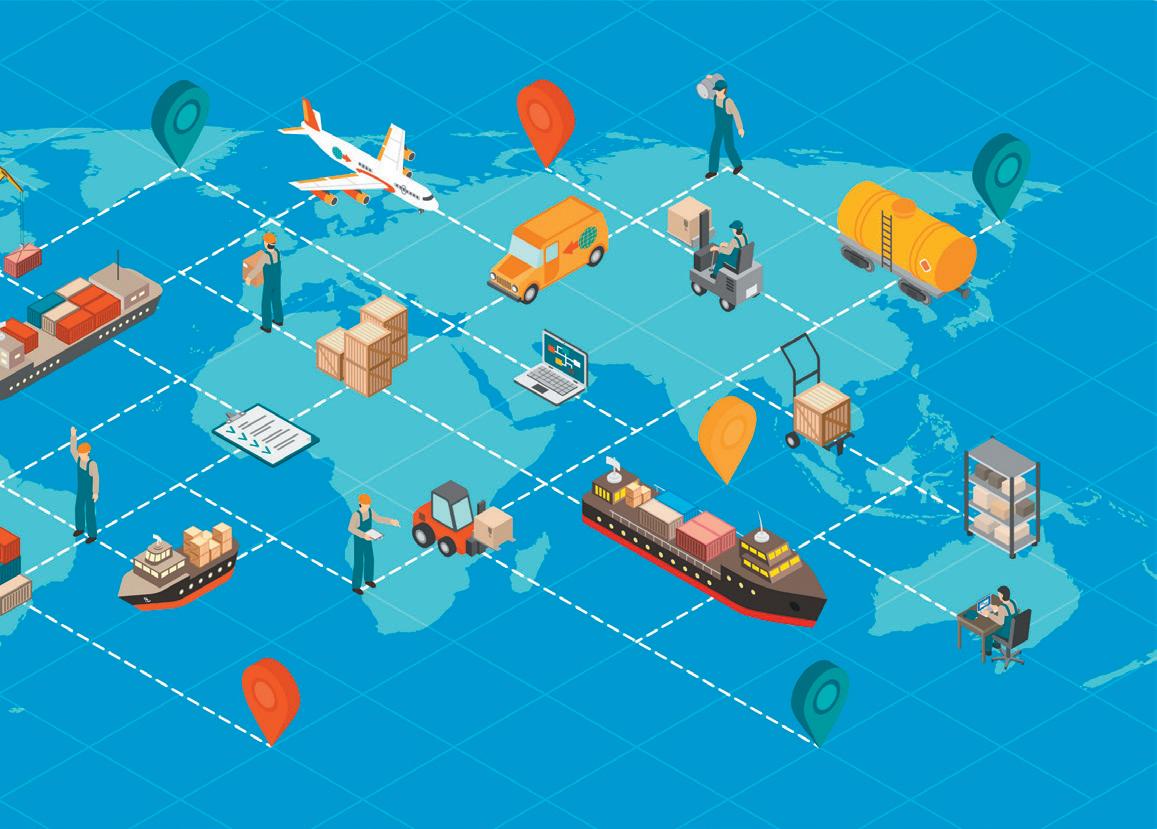
We spoke to Mikkel Hippe Brun, Co-founder of Tradeshift to gain insight into the financing model.
Why was it important for Tradeshift to keep the IP open on this model?
We have a global pandemic and economic crisis. We have come up with what we believe is a great and very scalable idea. This is not the time to protect ideas that could possibly save the livelihood of millions of people. We just wanted to encourage others
to do what we have done in Denmark without fearing that we would chase them down afterwards for IP infringements. That’s it.
What’s your prediction for the future of supply chain financing?
The model we have just proposed is supply chain financing in its most crude form. It is equivalent to financing supply chains with a shovel. It is highly effective, but it is also a one-size-fitsall model. With nine trillion USD tied up in global supply chains, it has clearly been demonstrated that current practices do not scale. The next generation of supply chain financing can be targeted needs of each individual company. They will have options to choose from, and they will not be at the mercy of their customers’ payment terms and their banking partners’ tight credit facilities. Optionability with regards to supply chain financing is the future, and we are already pretty far.
europeanbusinessmagazine.com99

europeanbusinessmagazine.com 100
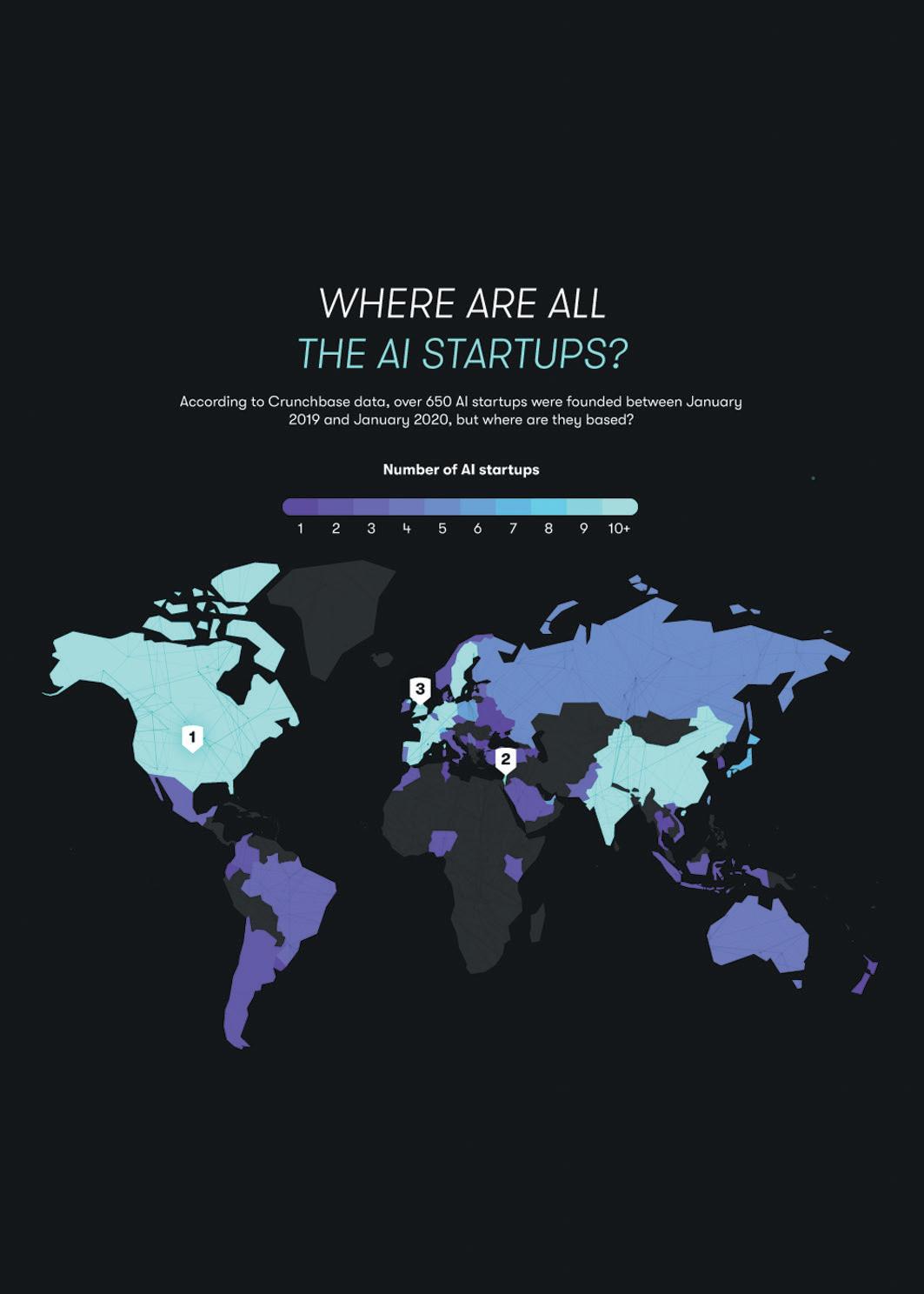
europeanbusinessmagazine.com101

europeanbusinessmagazine.com 102

europeanbusinessmagazine.com103

europeanbusinessmagazine.com 104
Looking to expand your operations to the U.S.A.? Iowa is the perfect place to do it. Yes, Iowa. Surprised? Don’t be. Iowa boasts low construction fees, competitive rental rates and a skilled workforce. Our Certified Sites Program also provides development-ready locations perfectly suited to meet your expansion priorities on deadline. Now that you’re up to speed, it’s time to take the next step. We’ll see you soon.





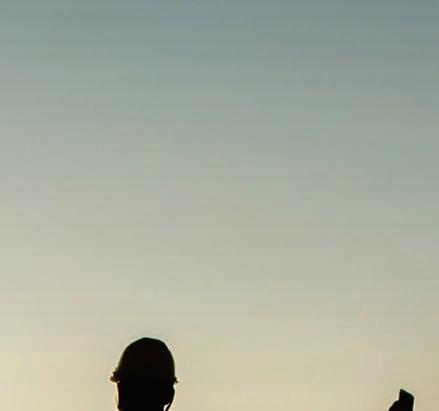



iowaeconomicdevelopment.com/certifiedsites





































































































































































































































































































 By Katie Fisher
By Katie Fisher













































